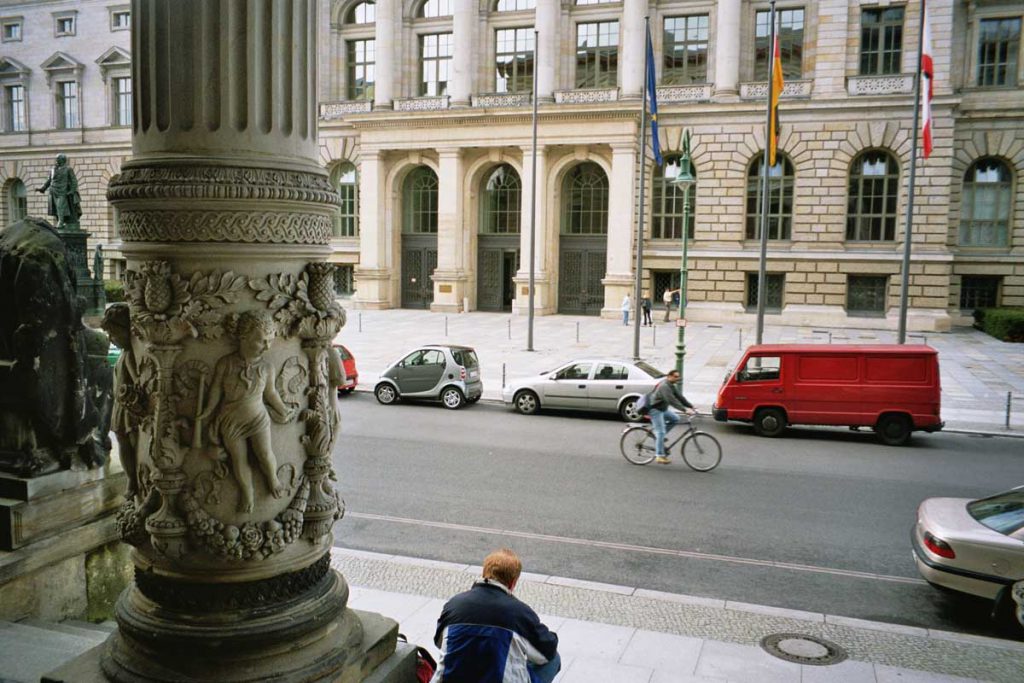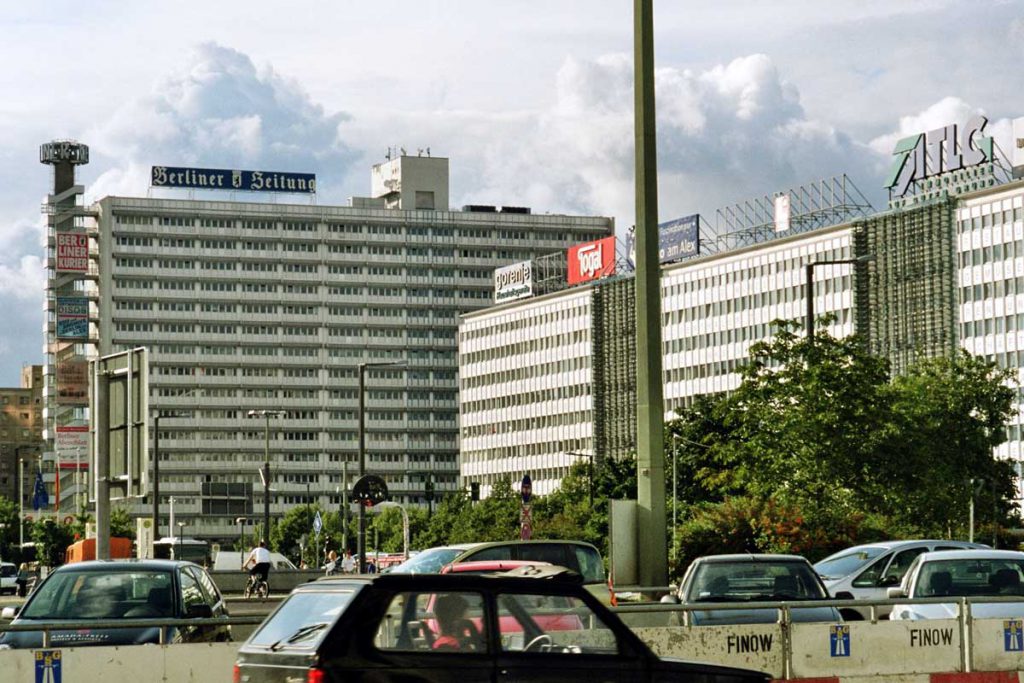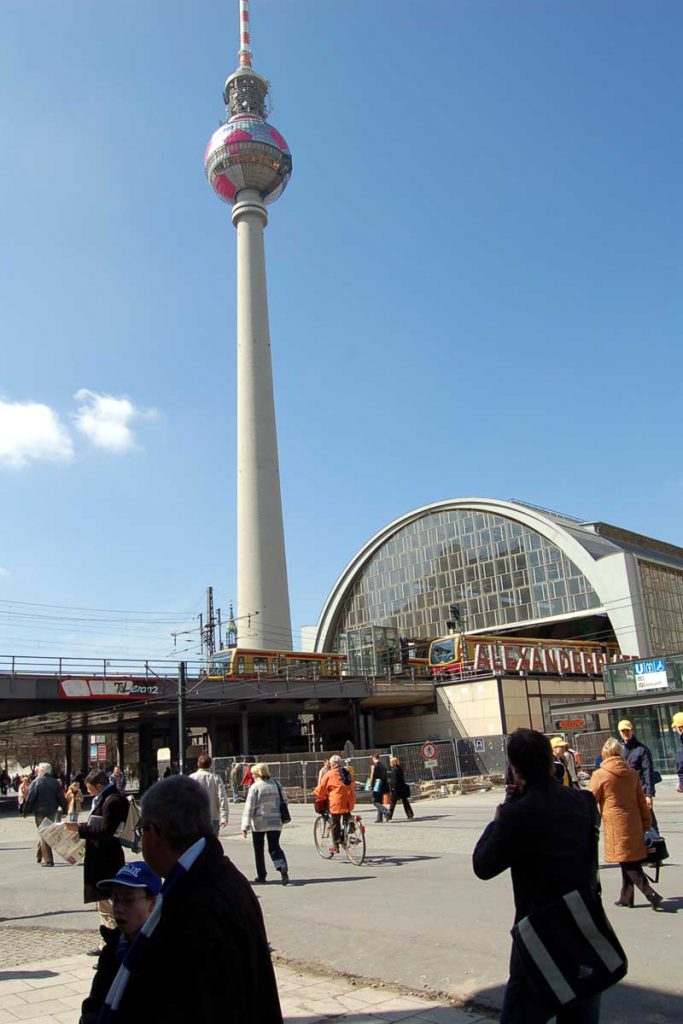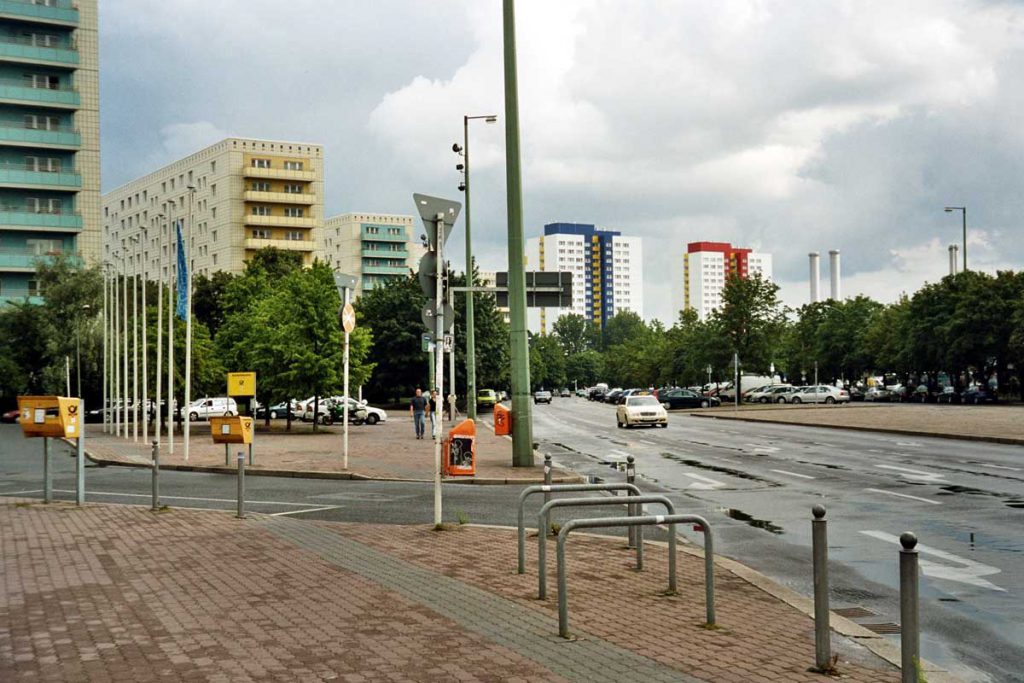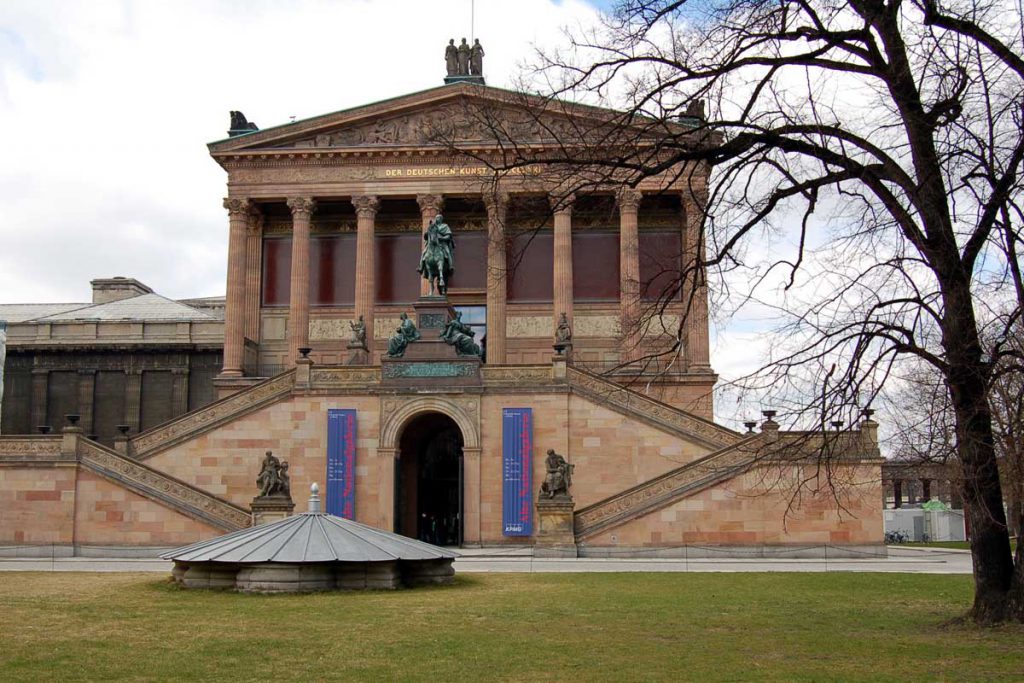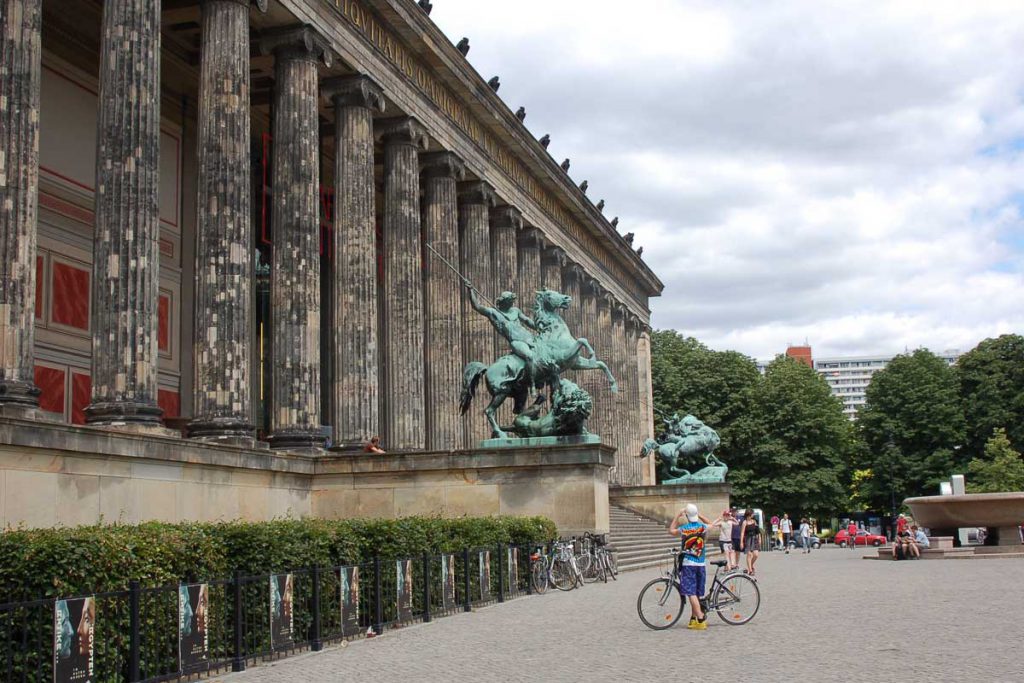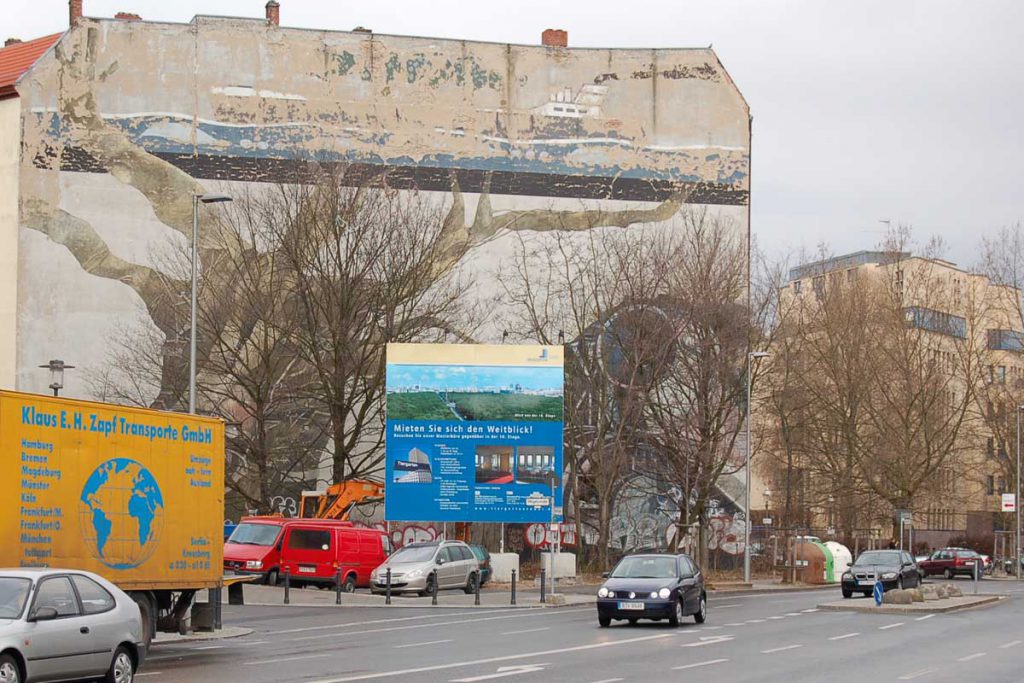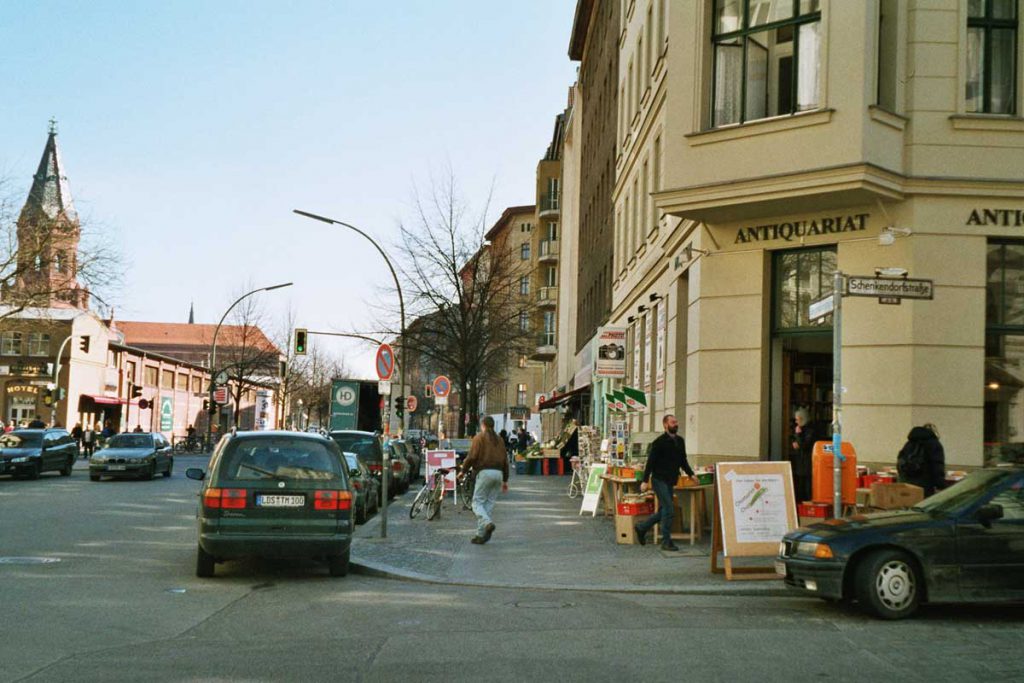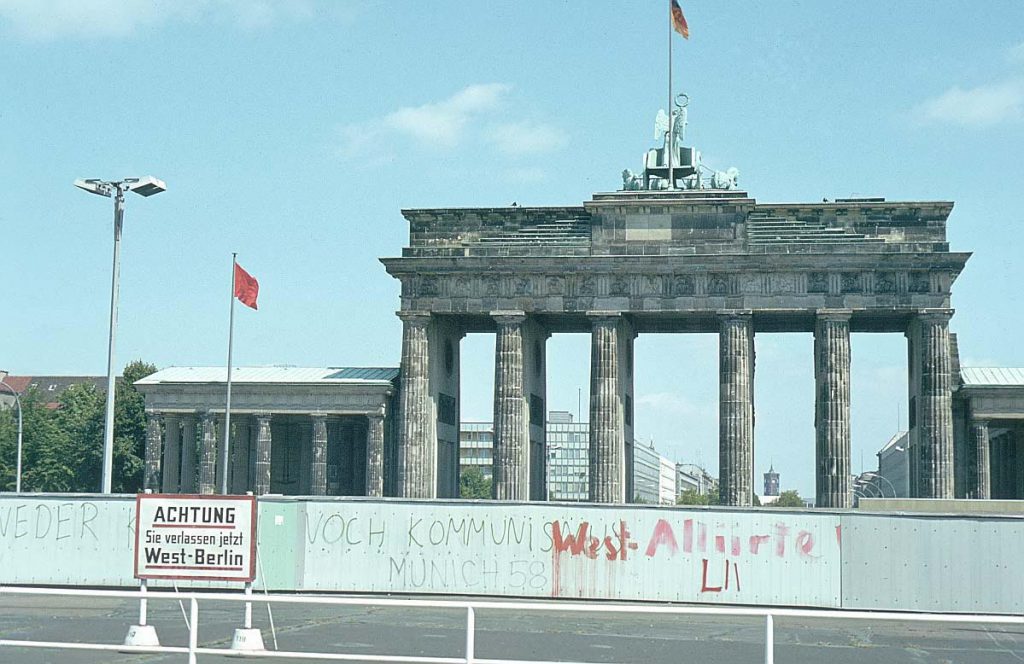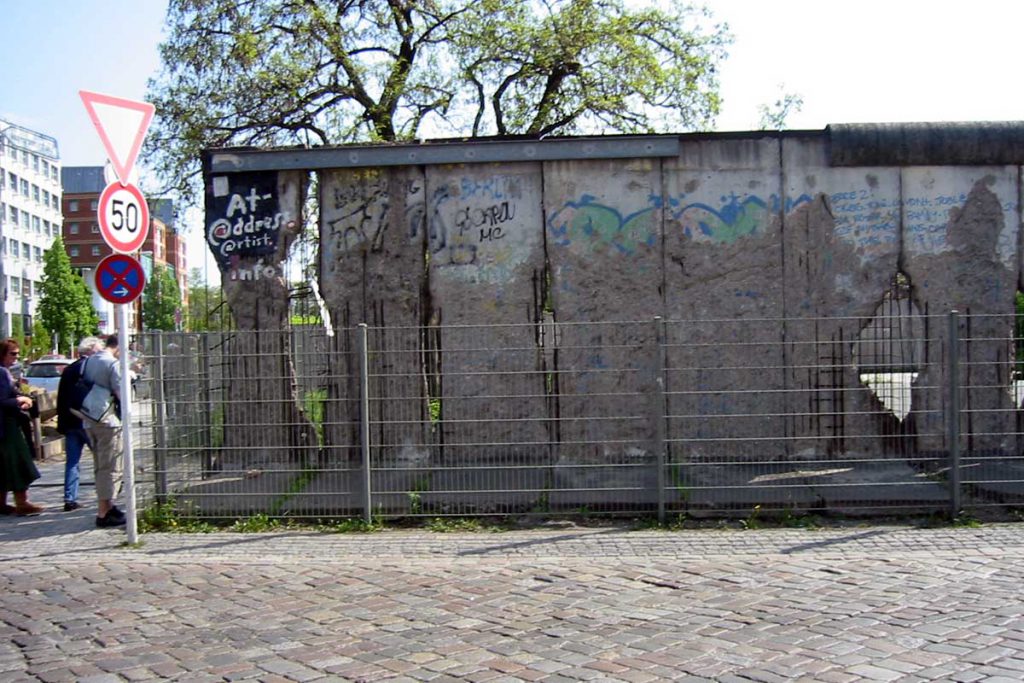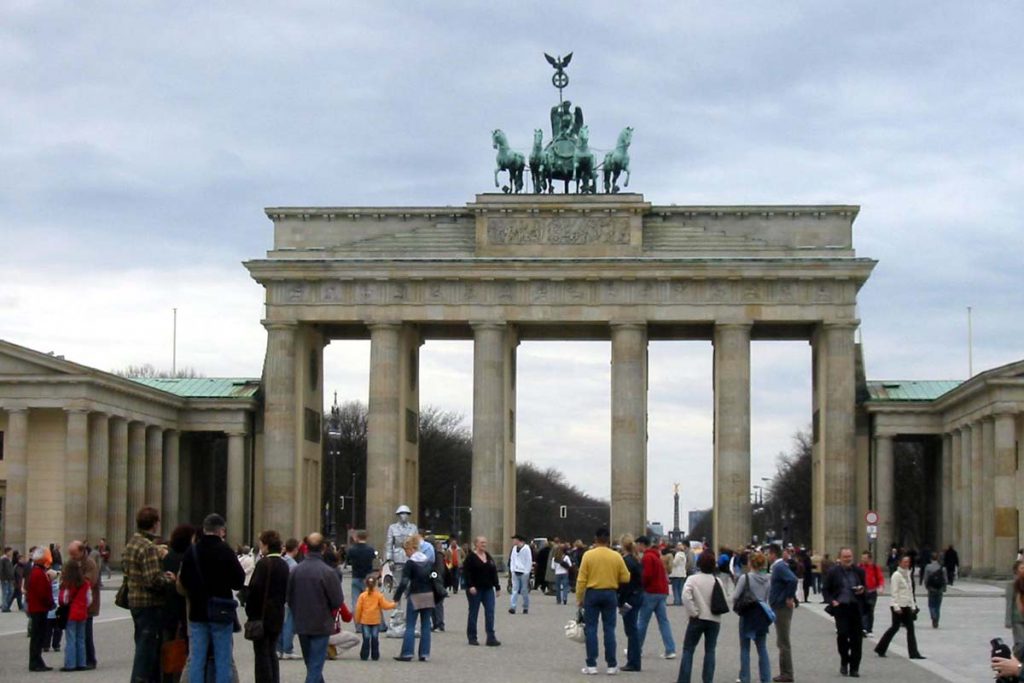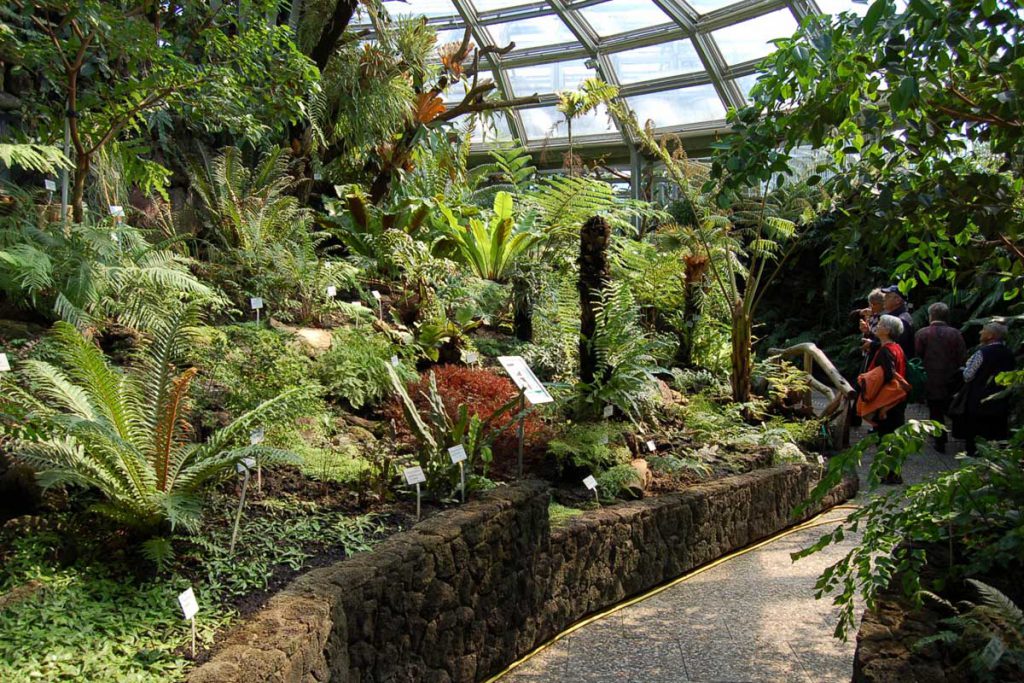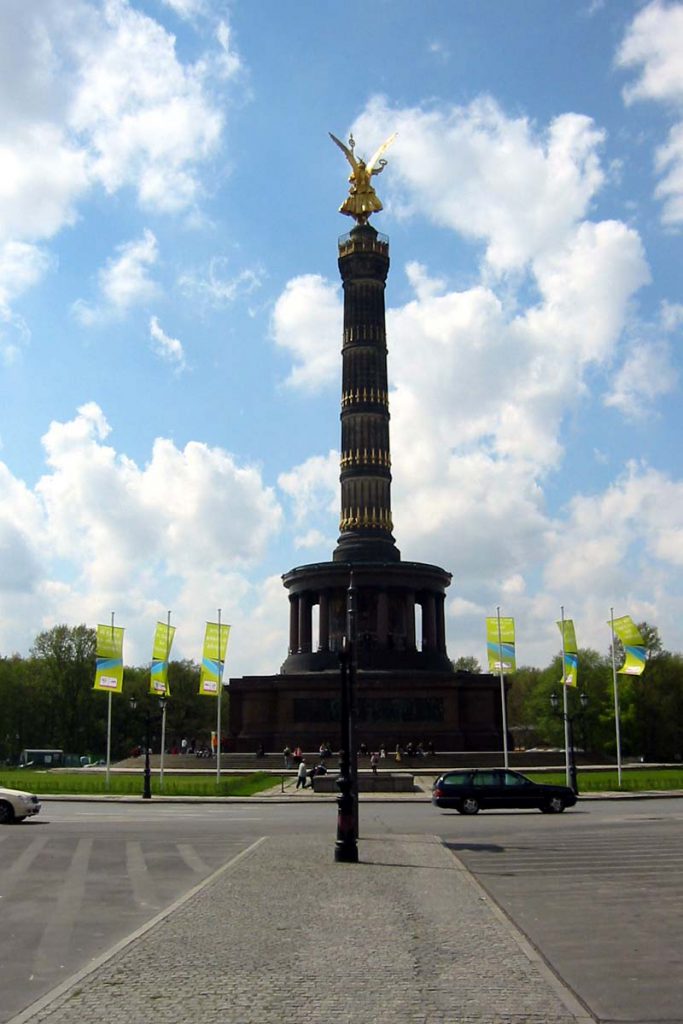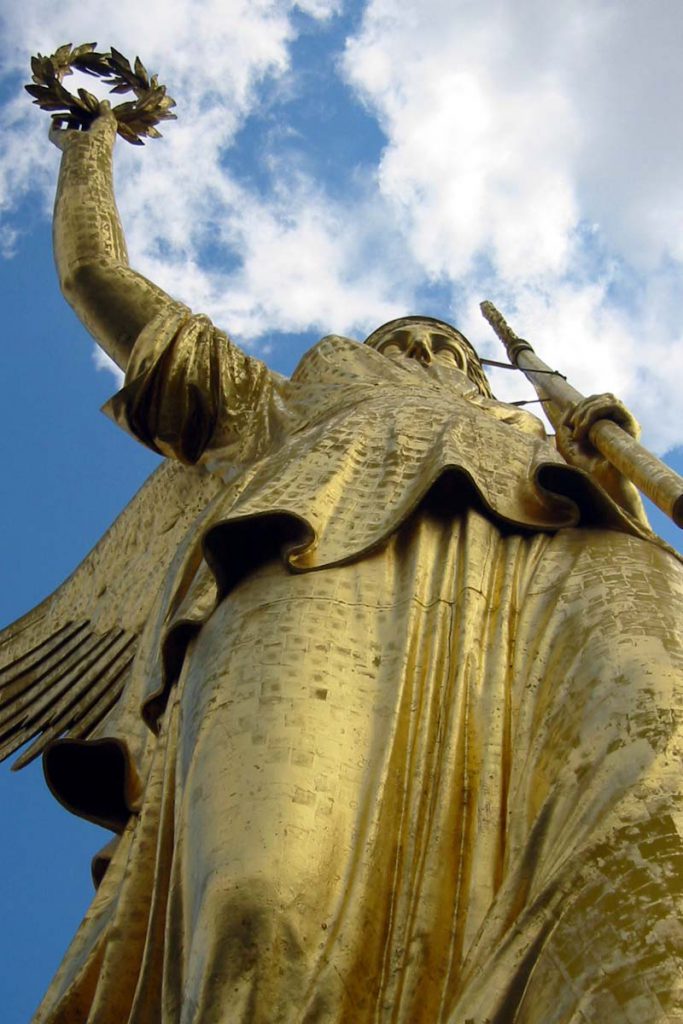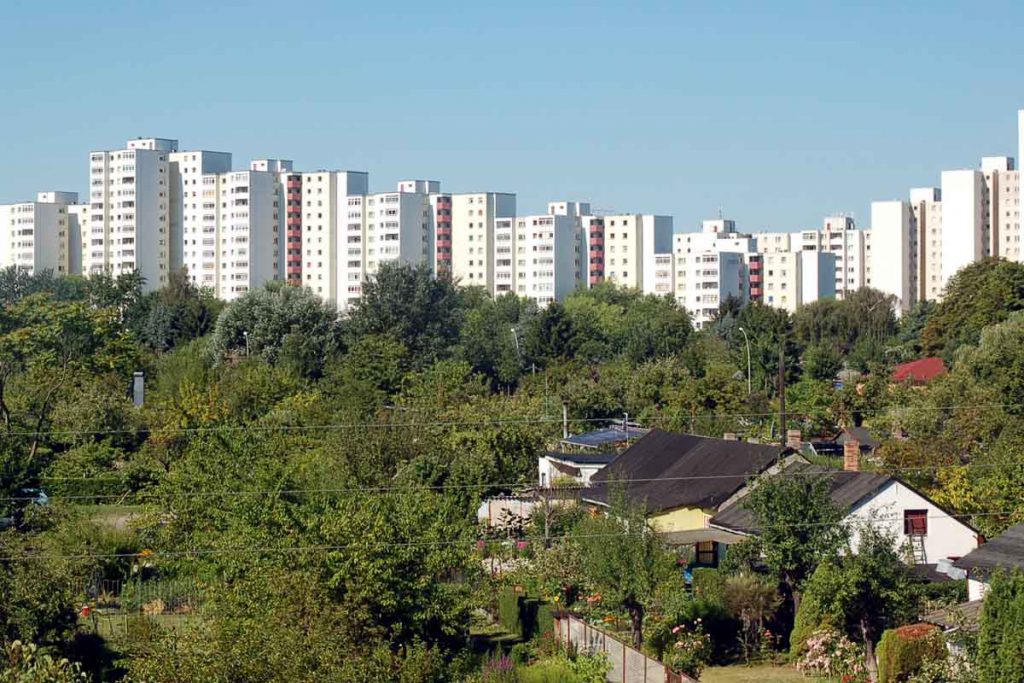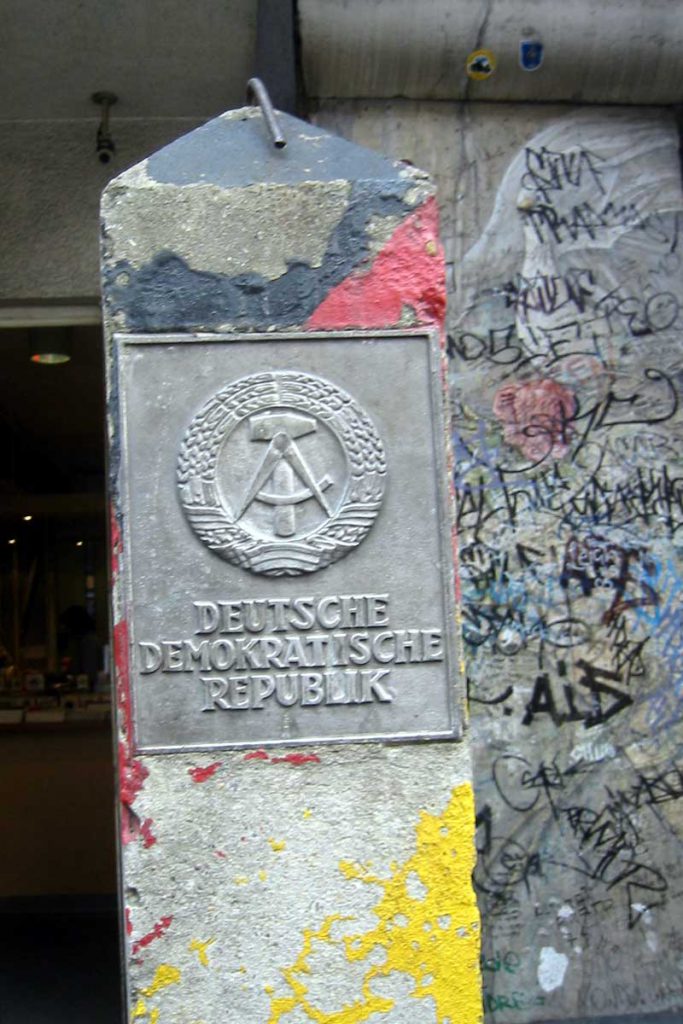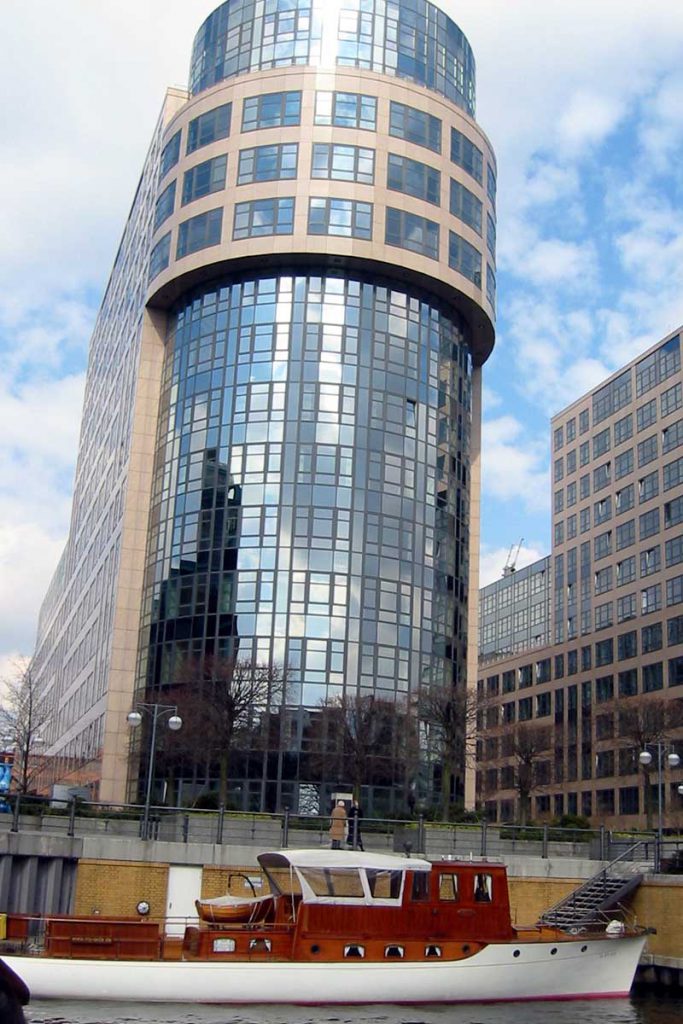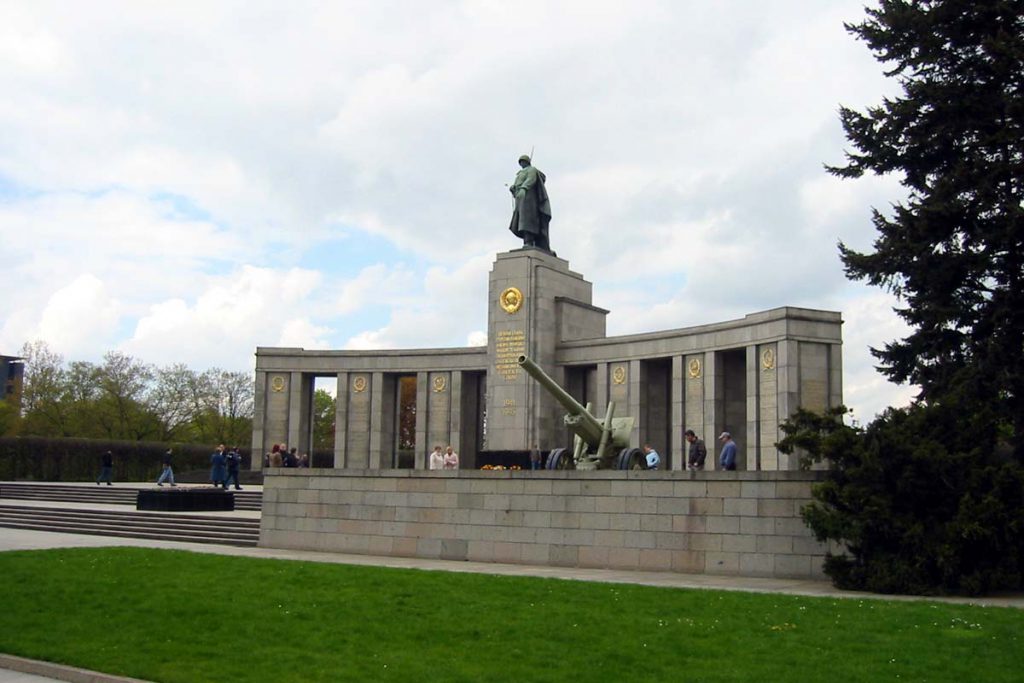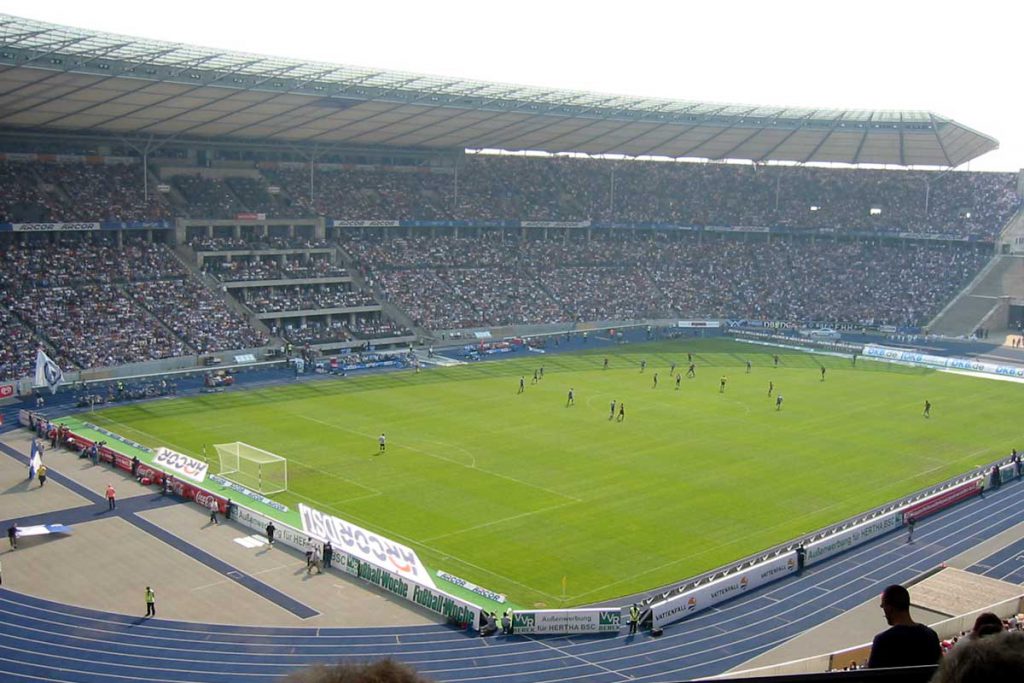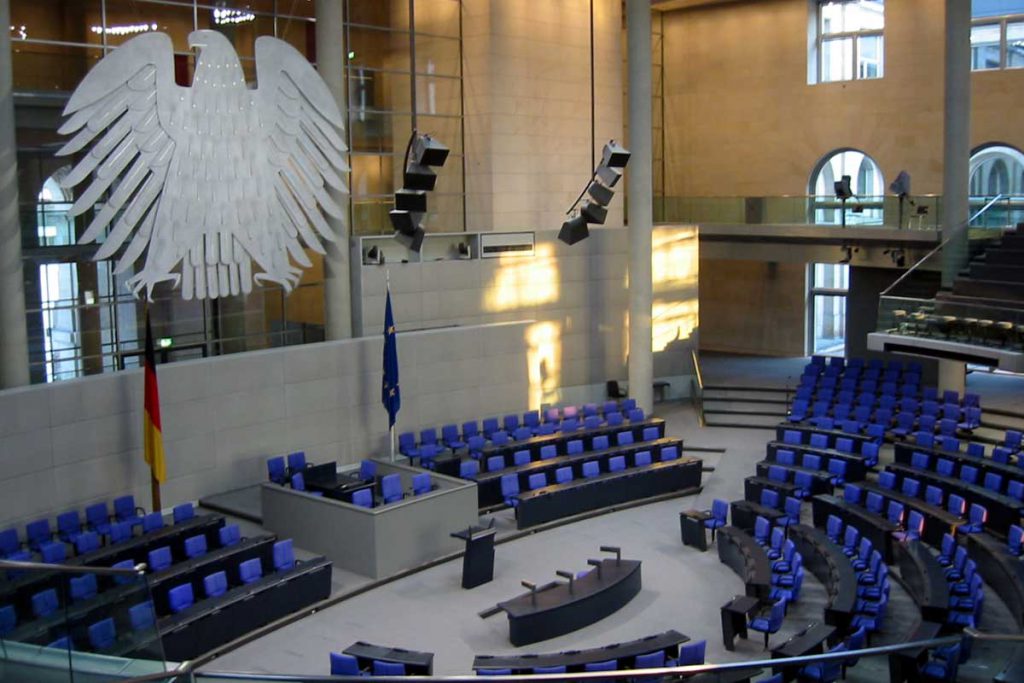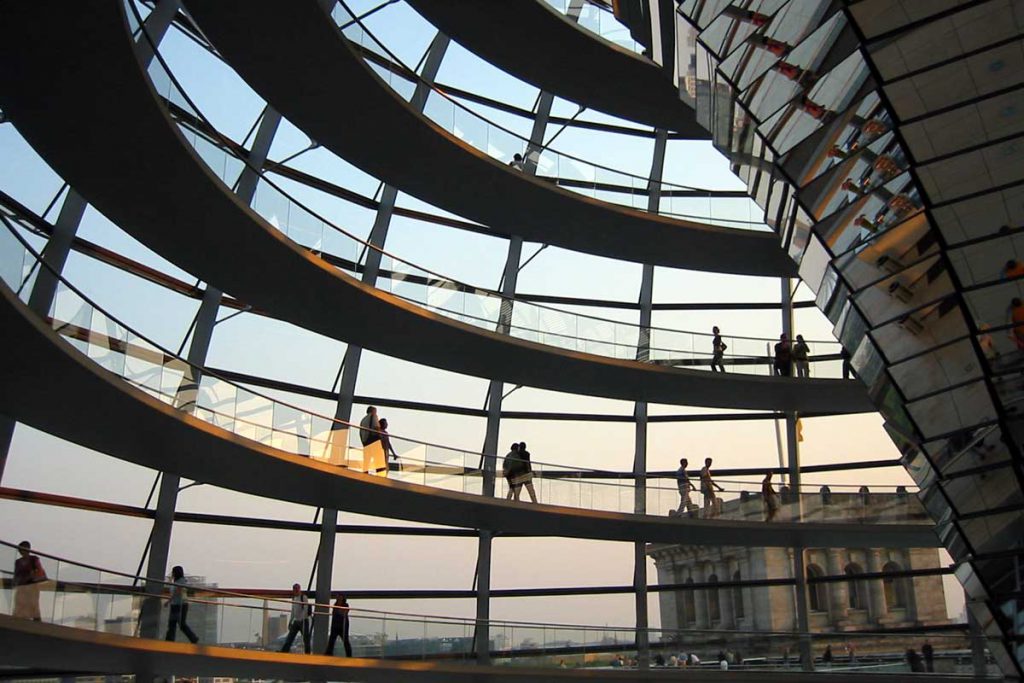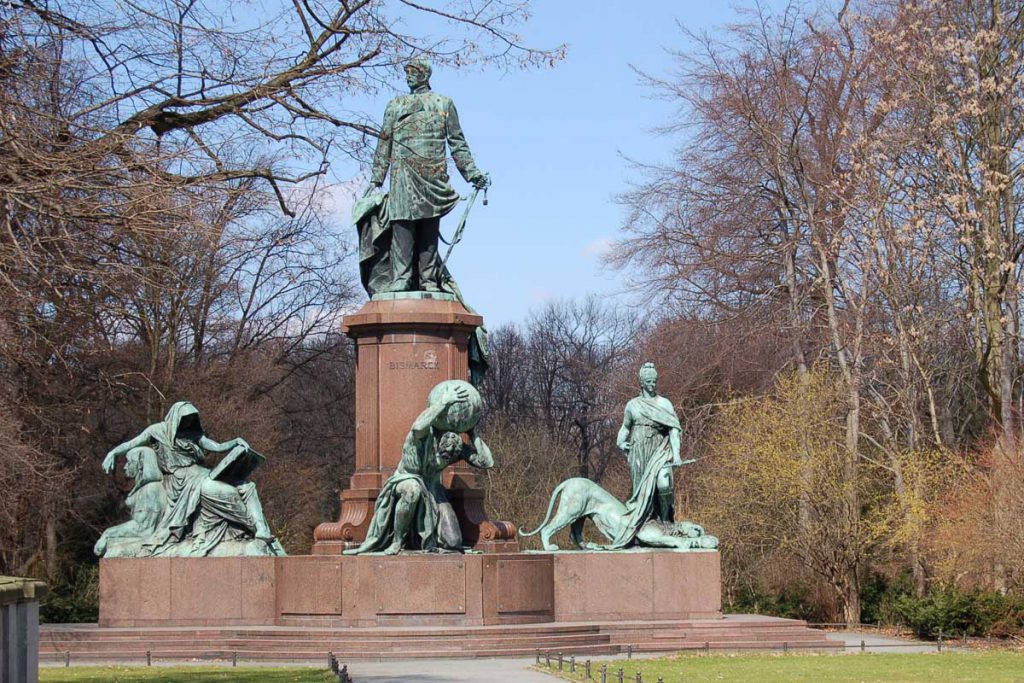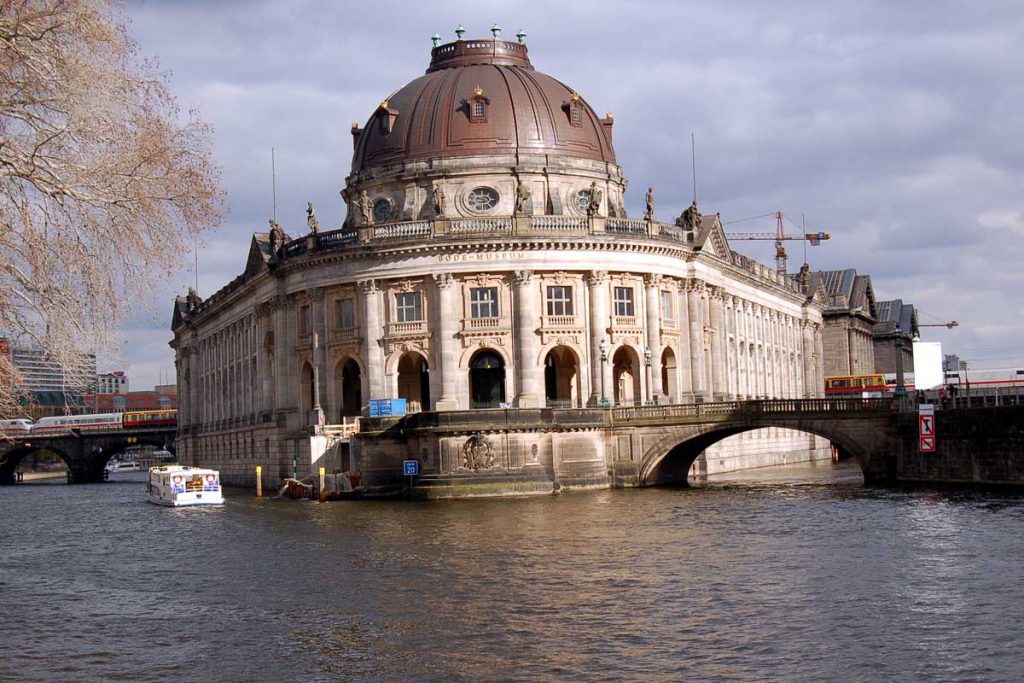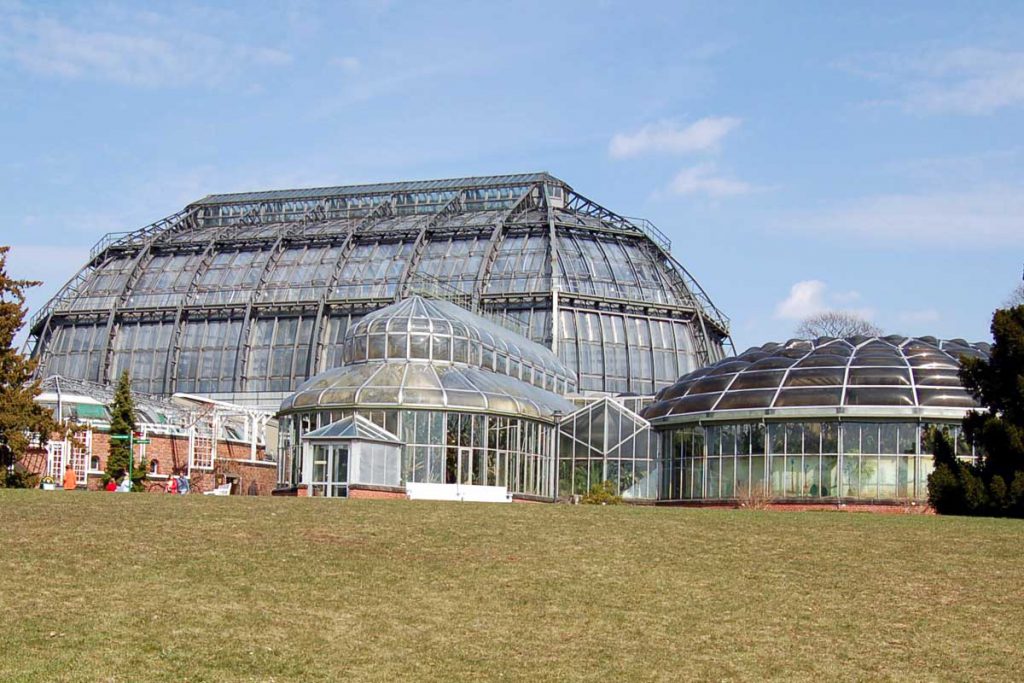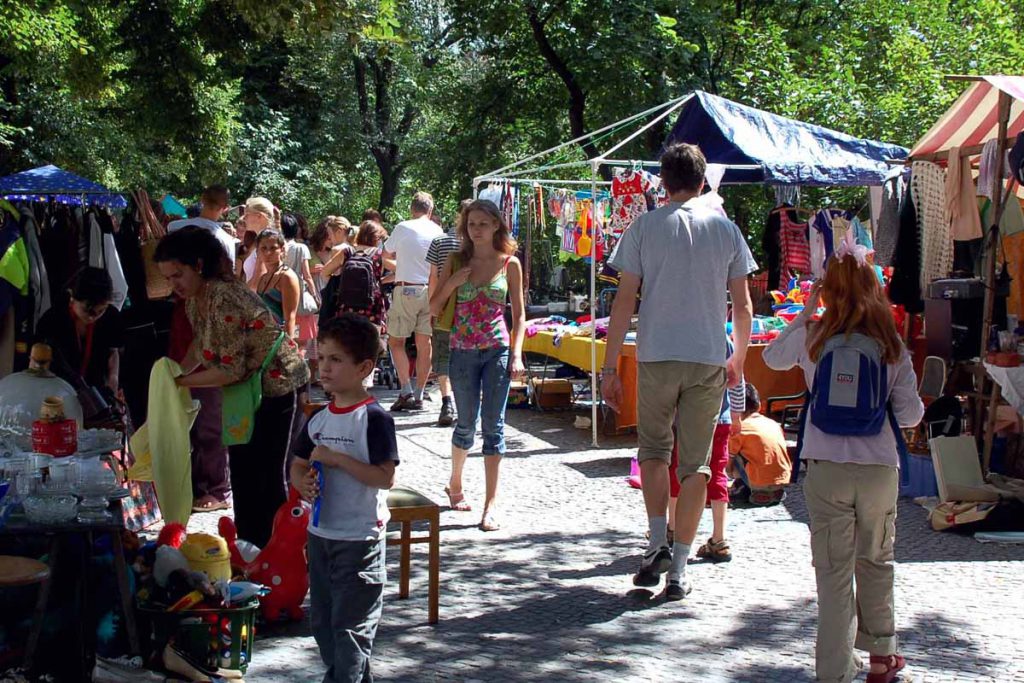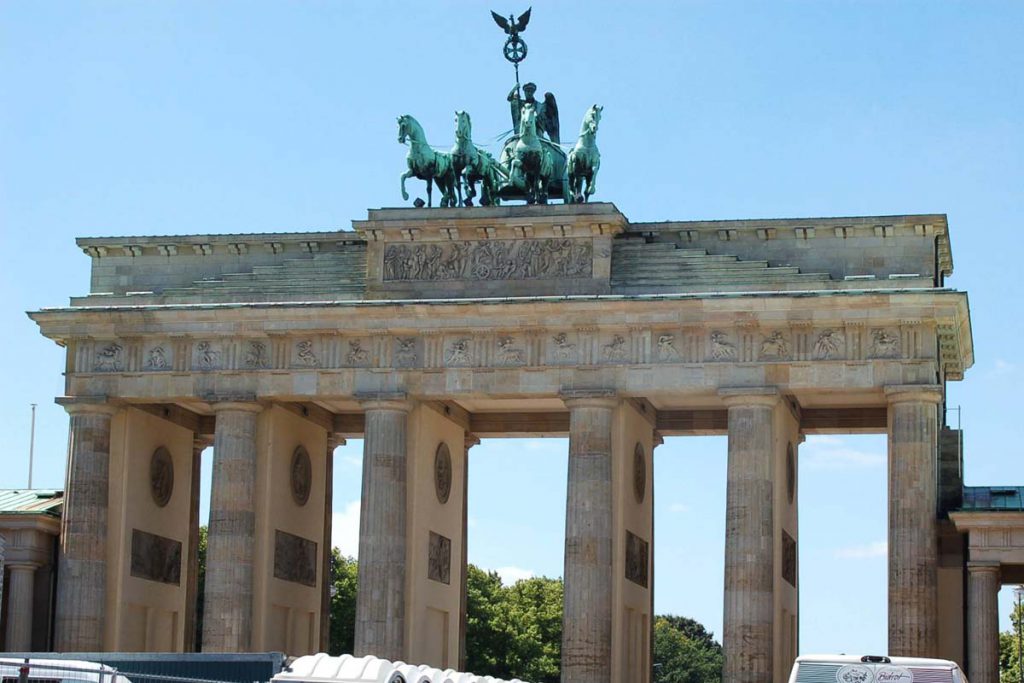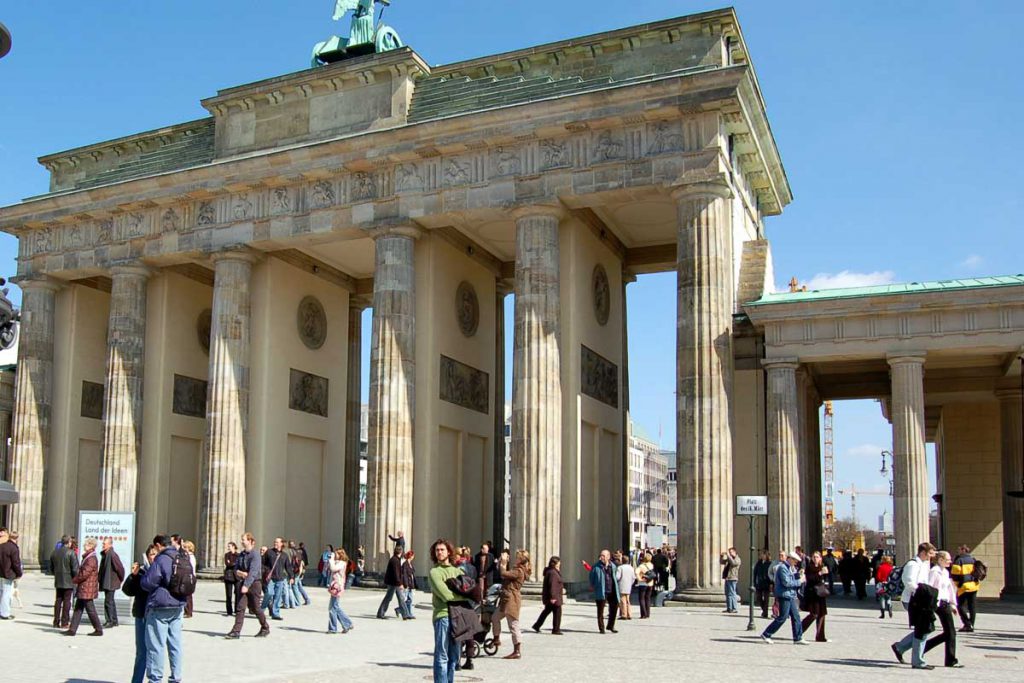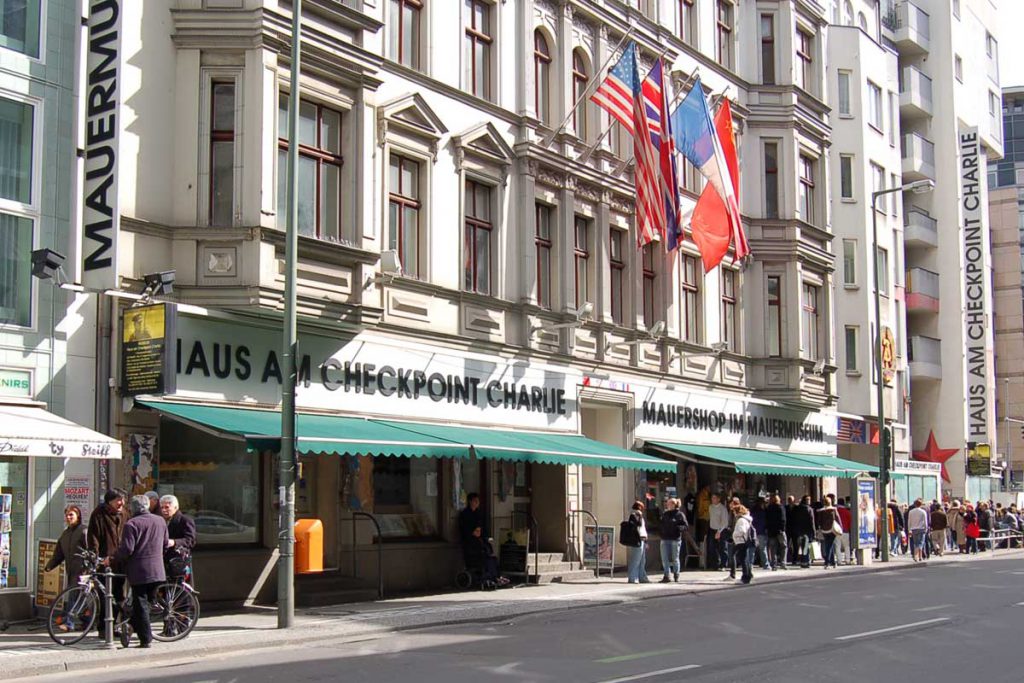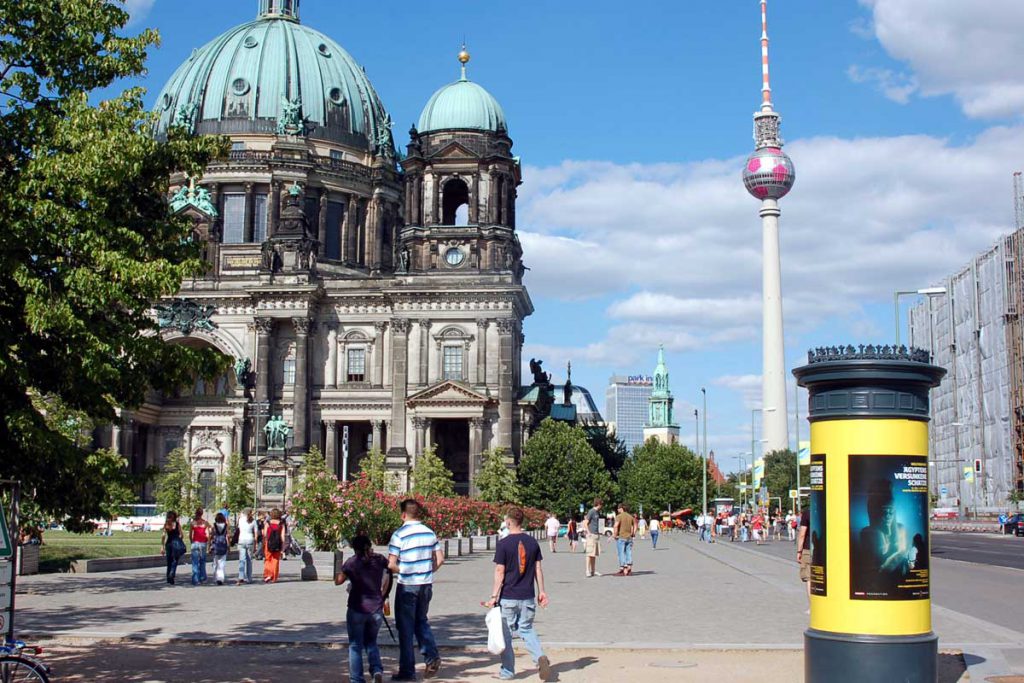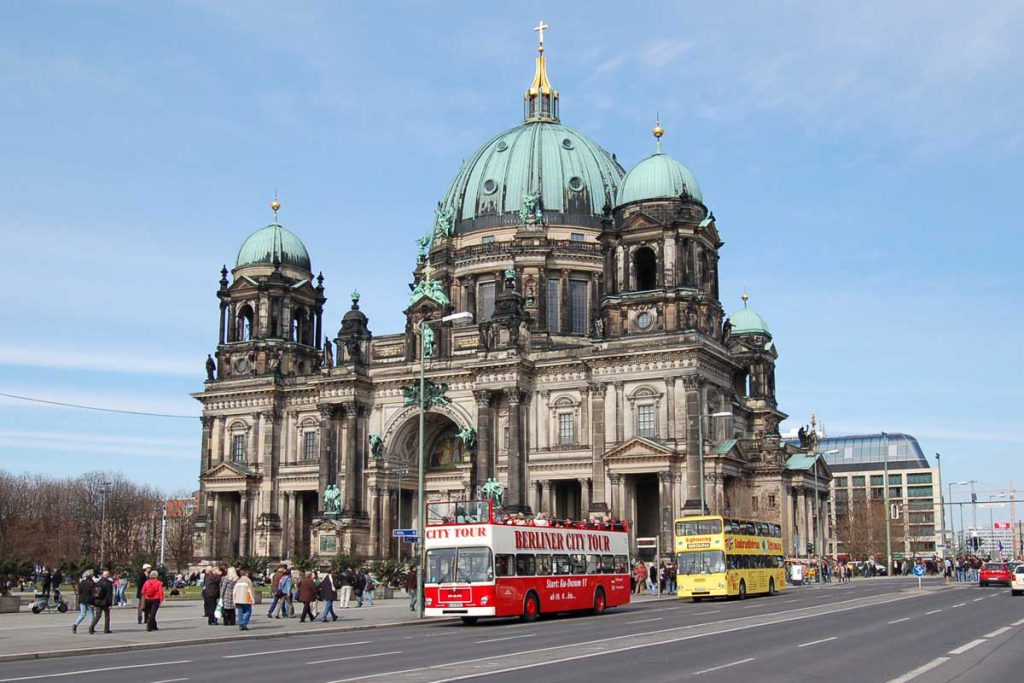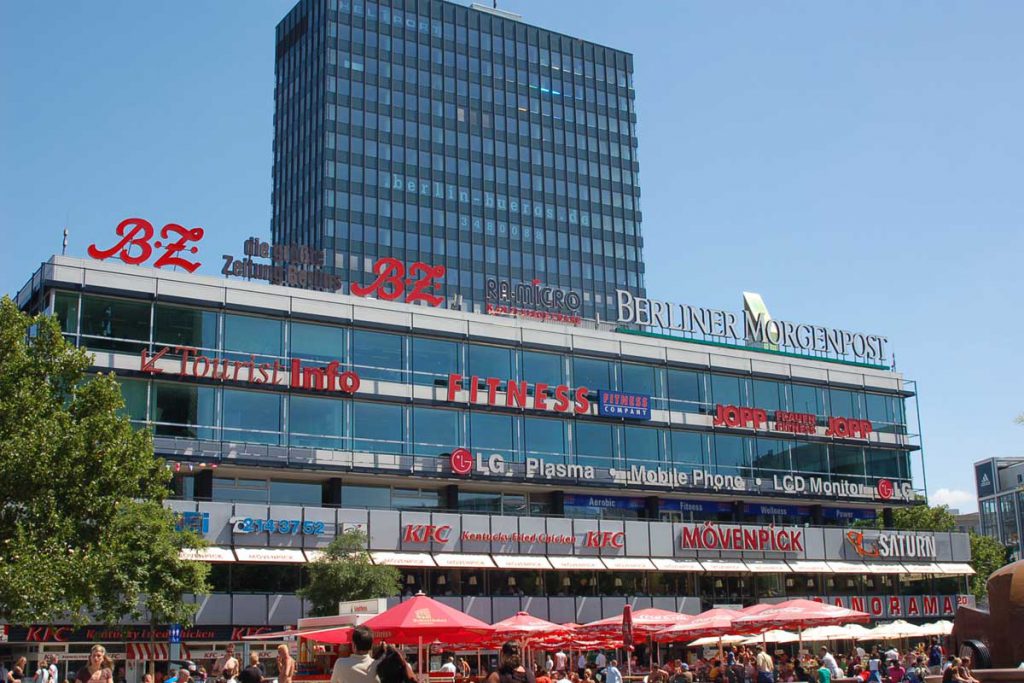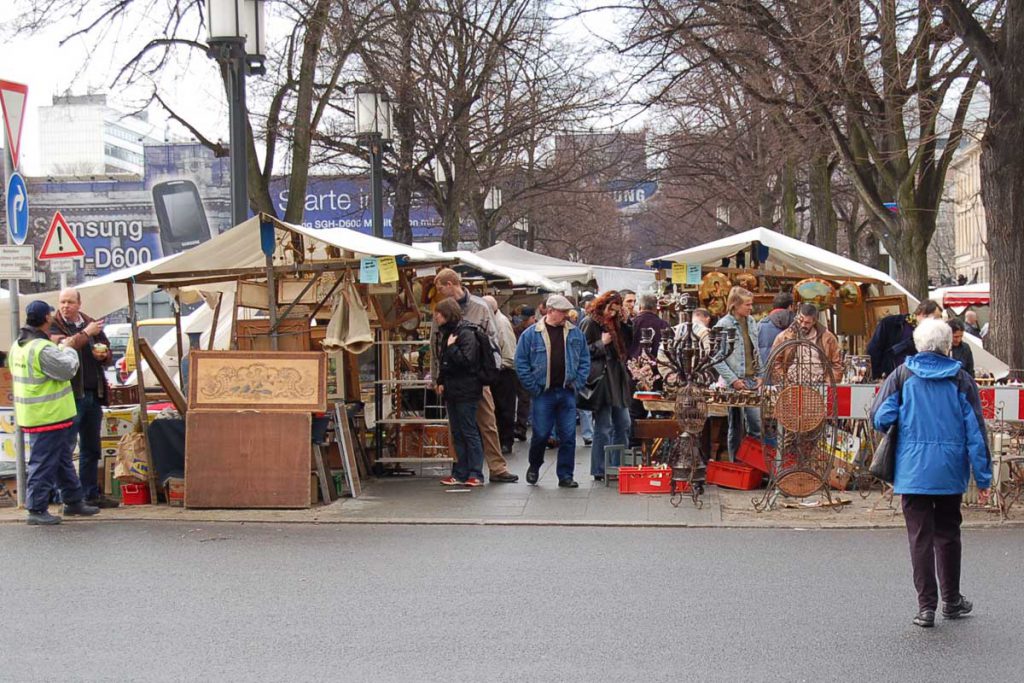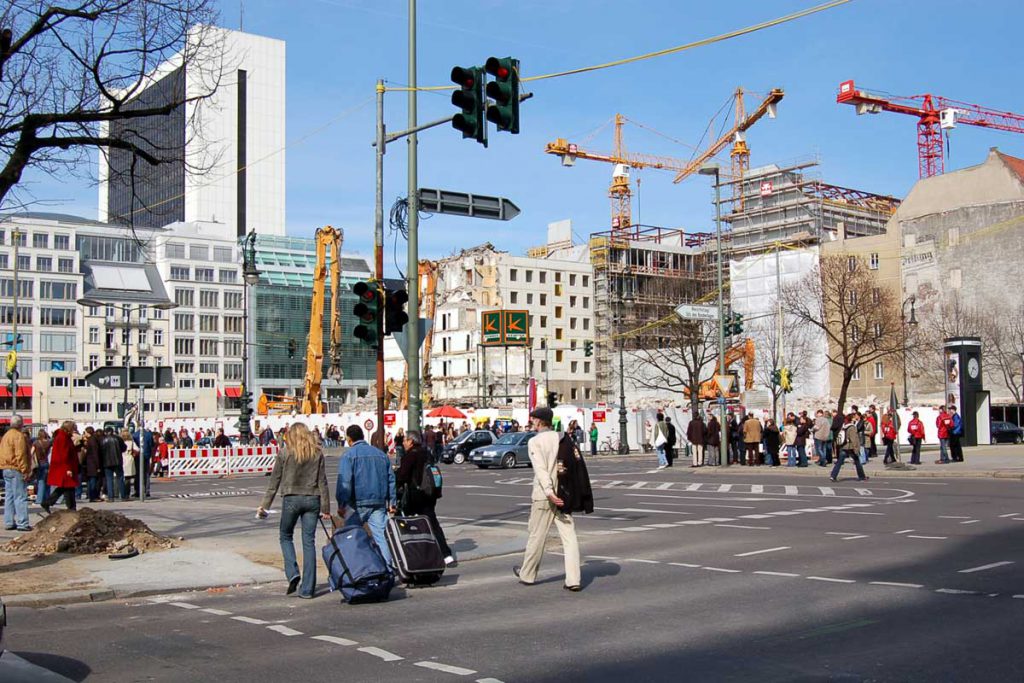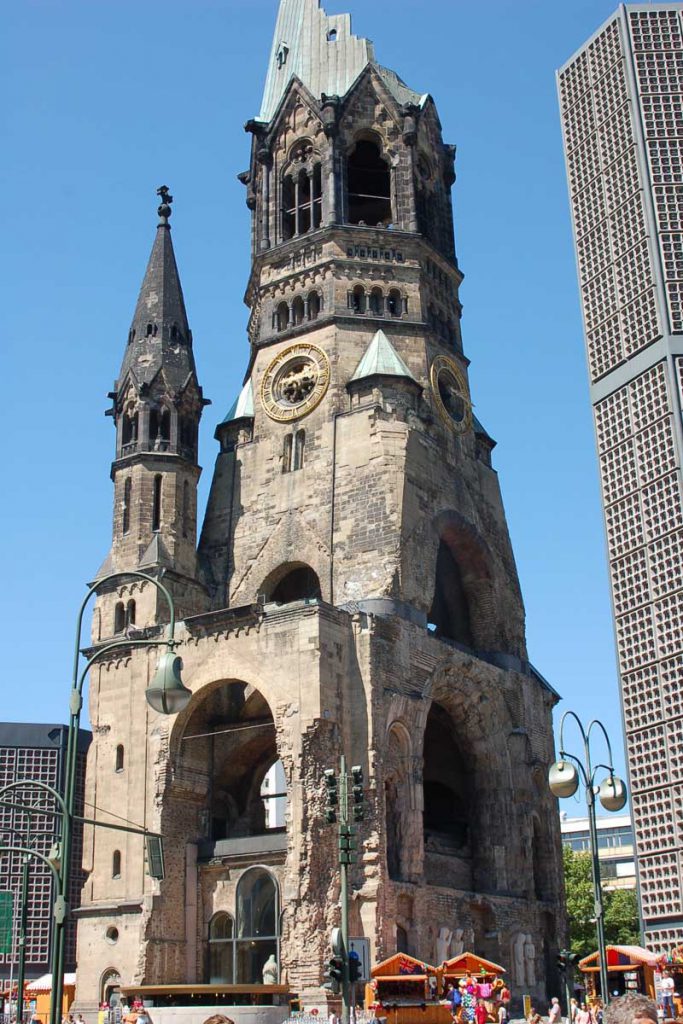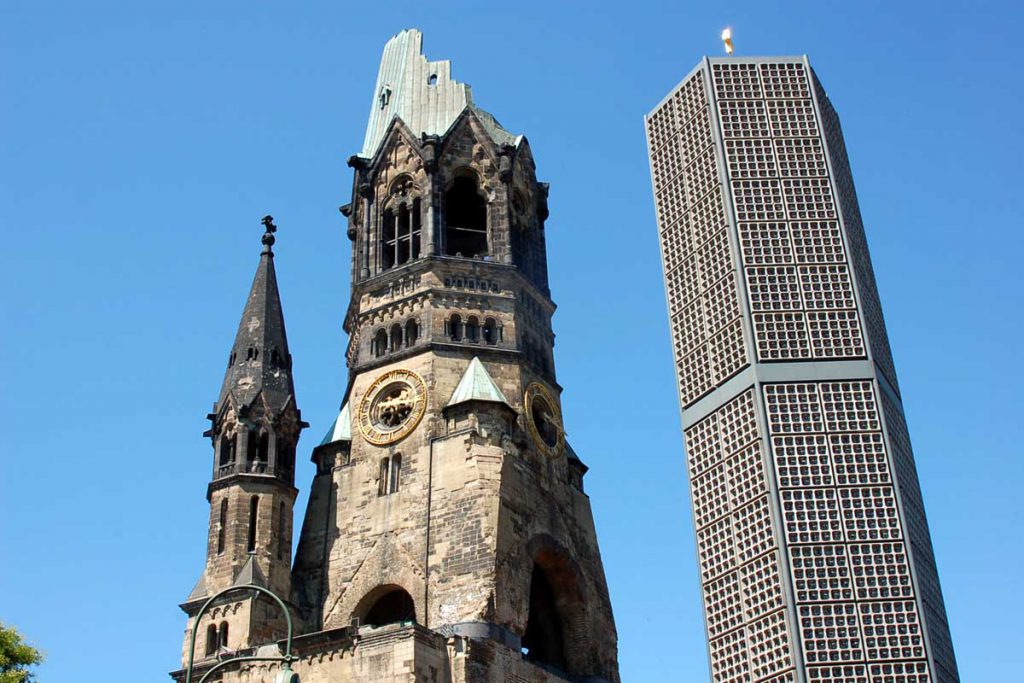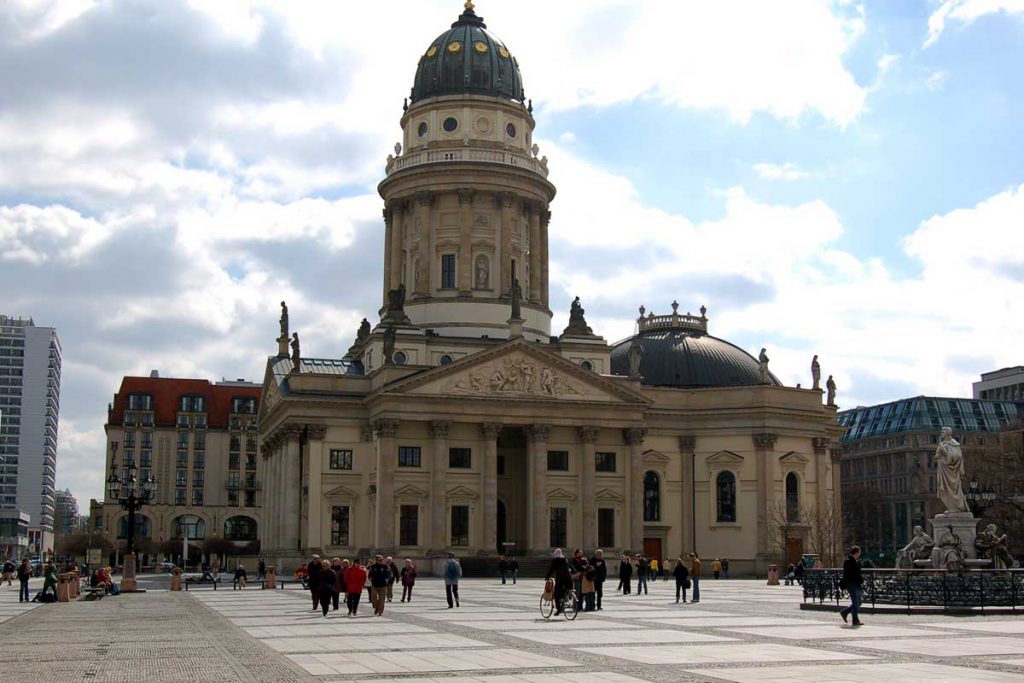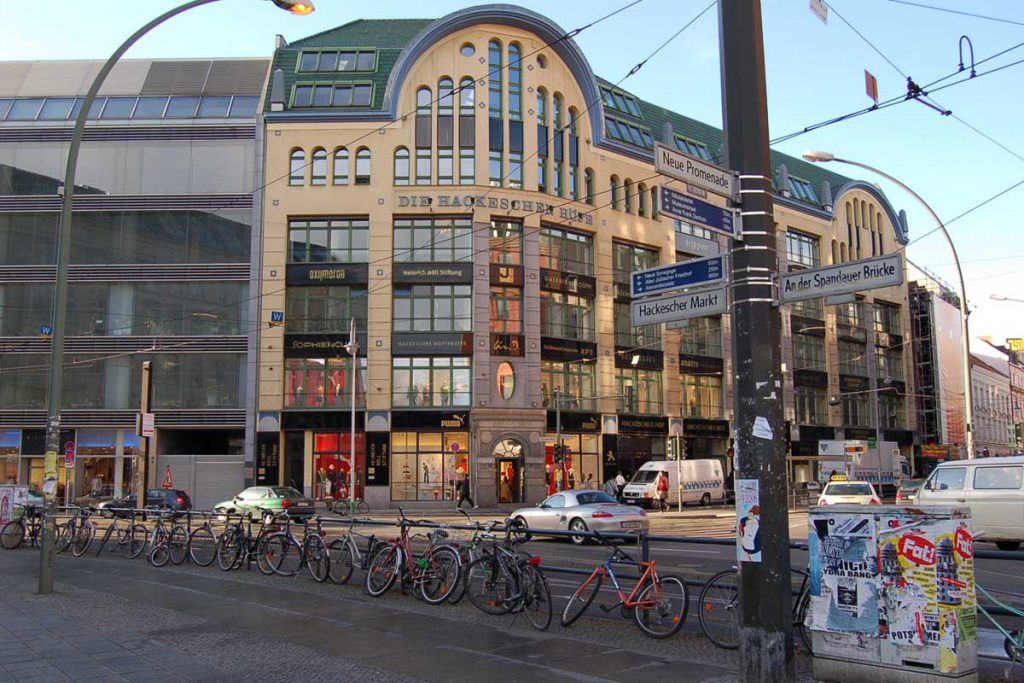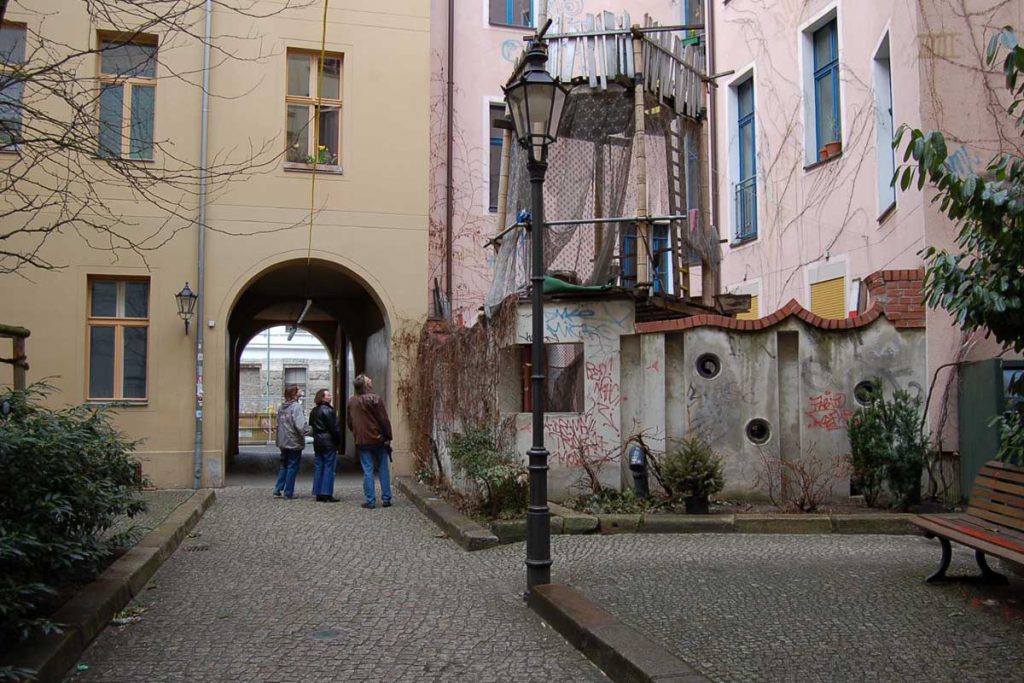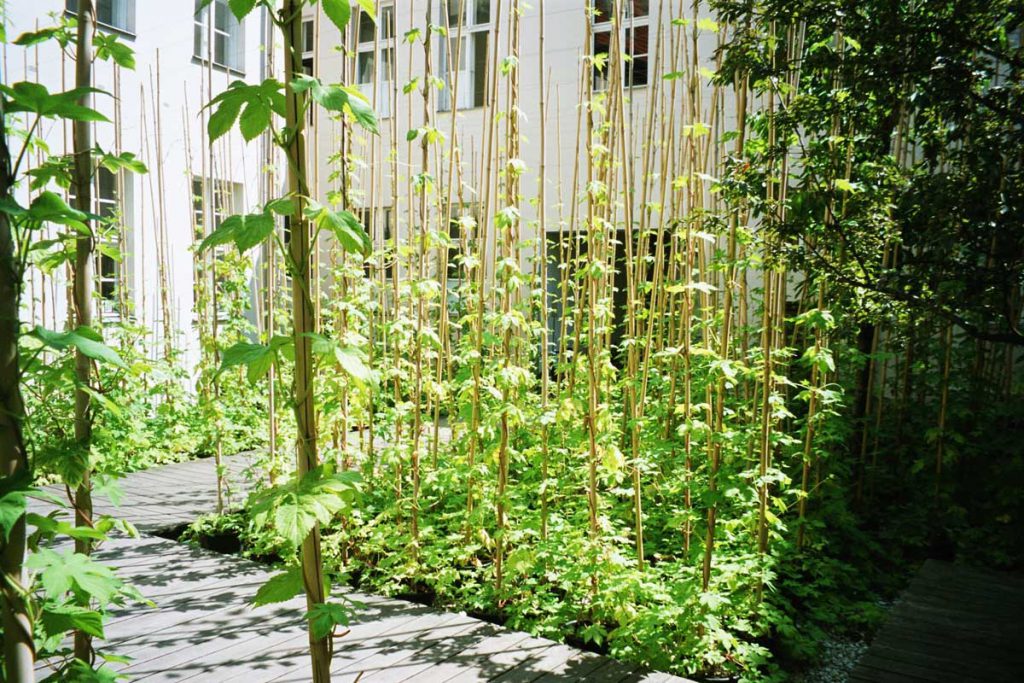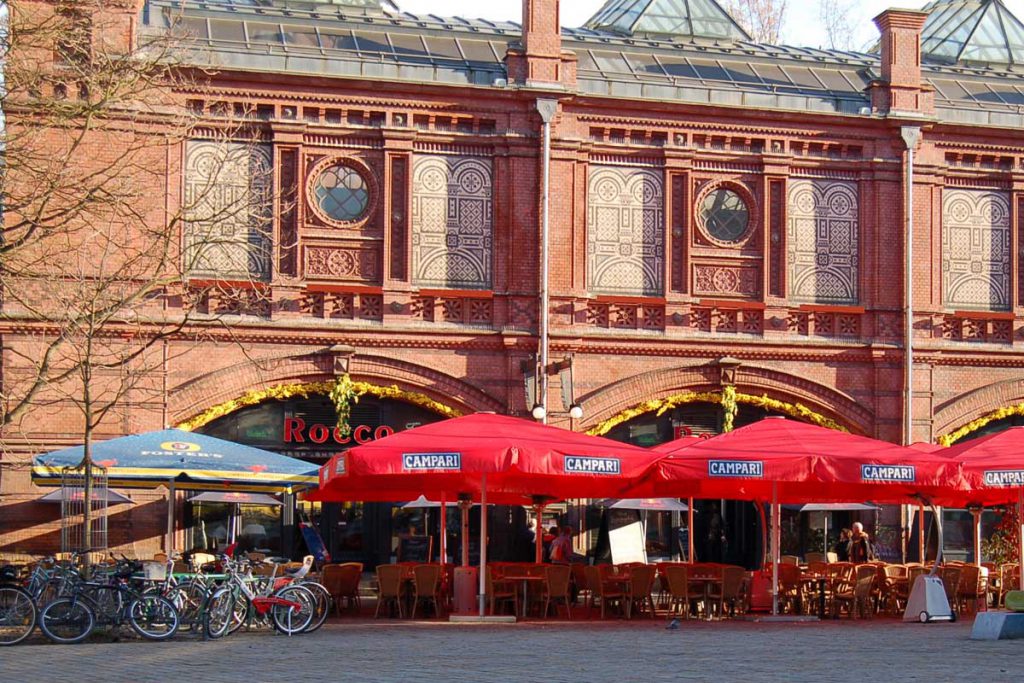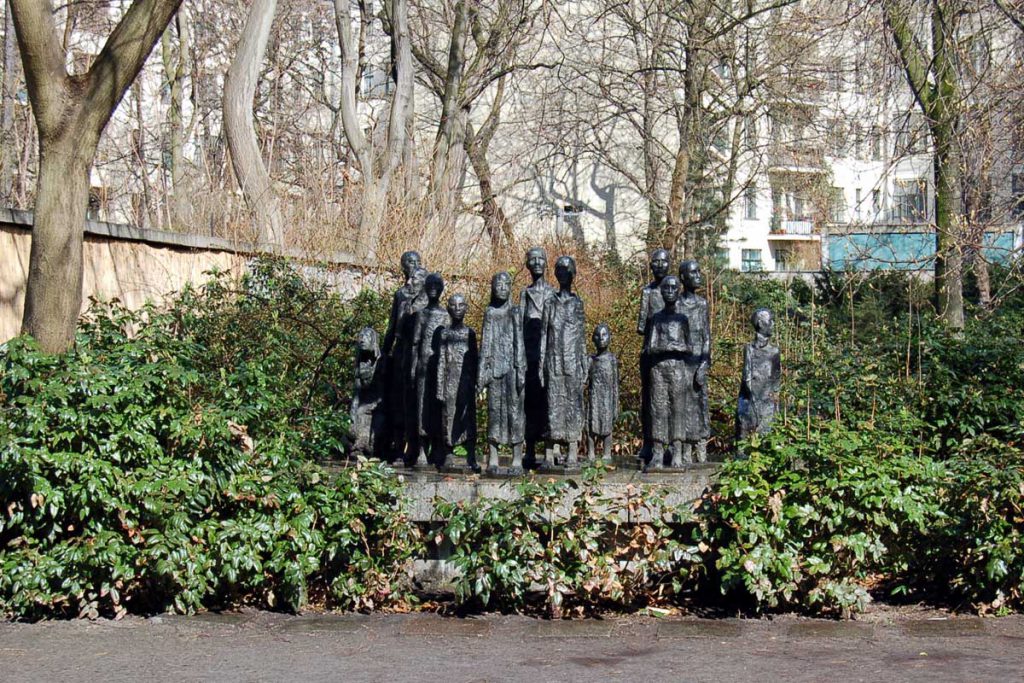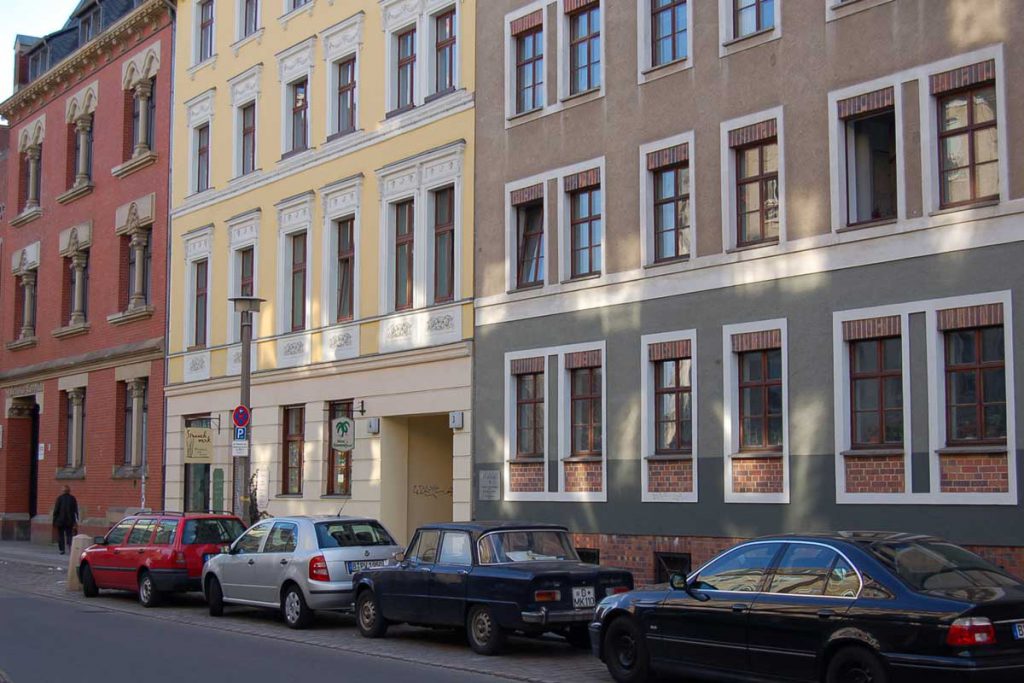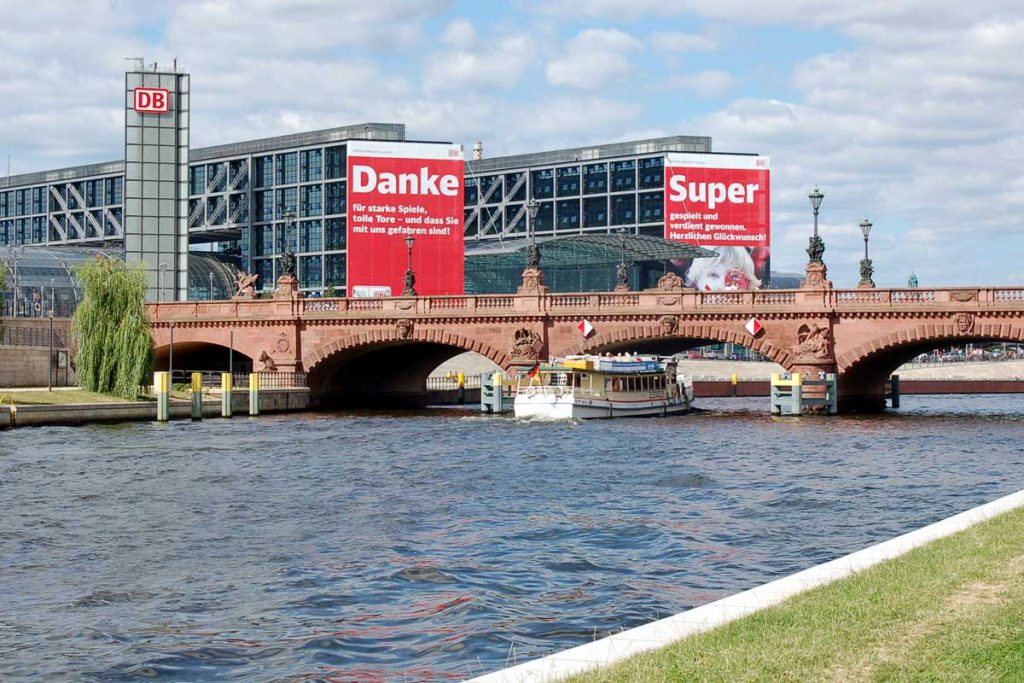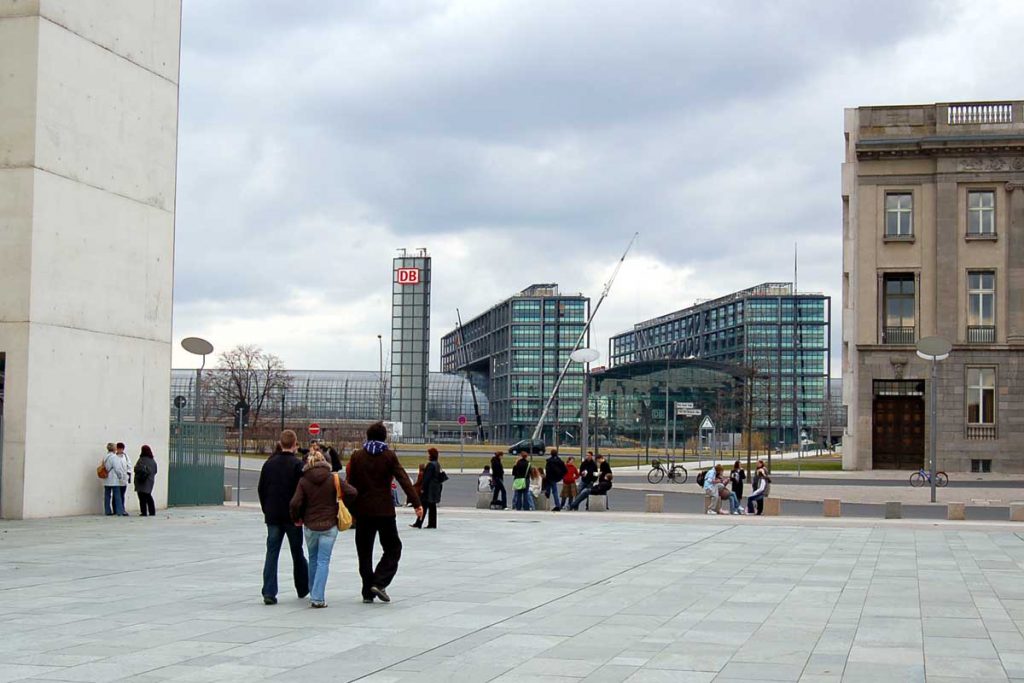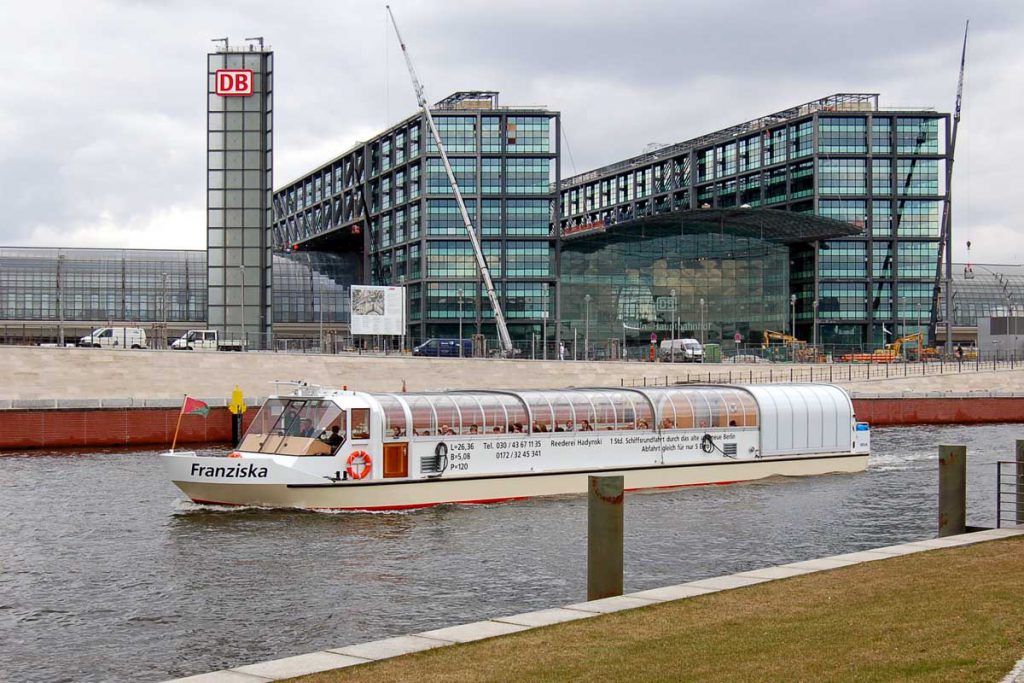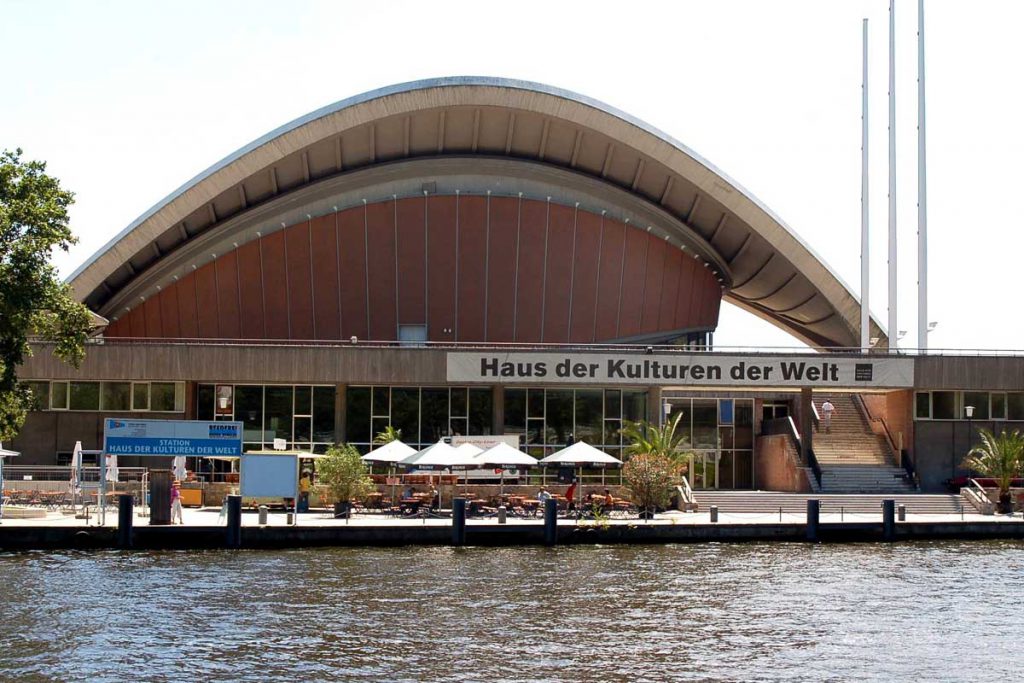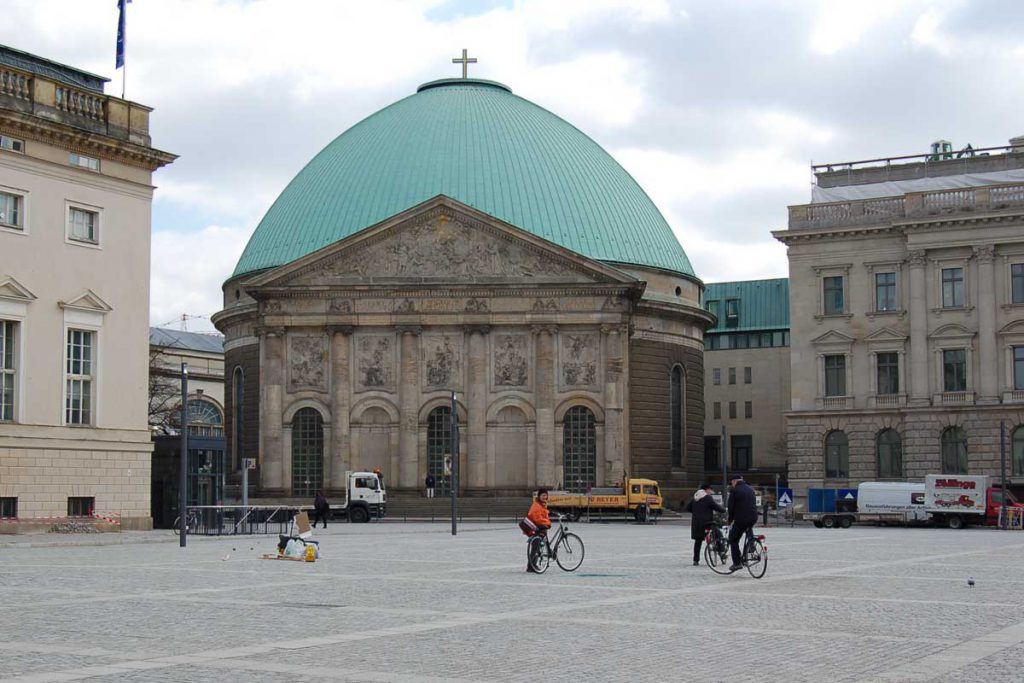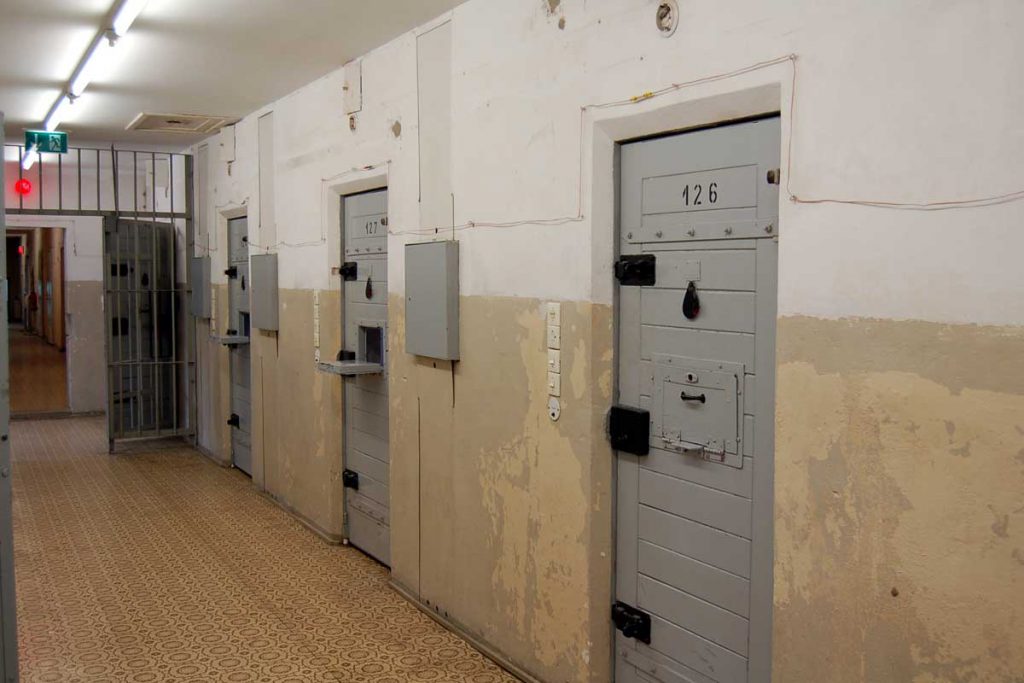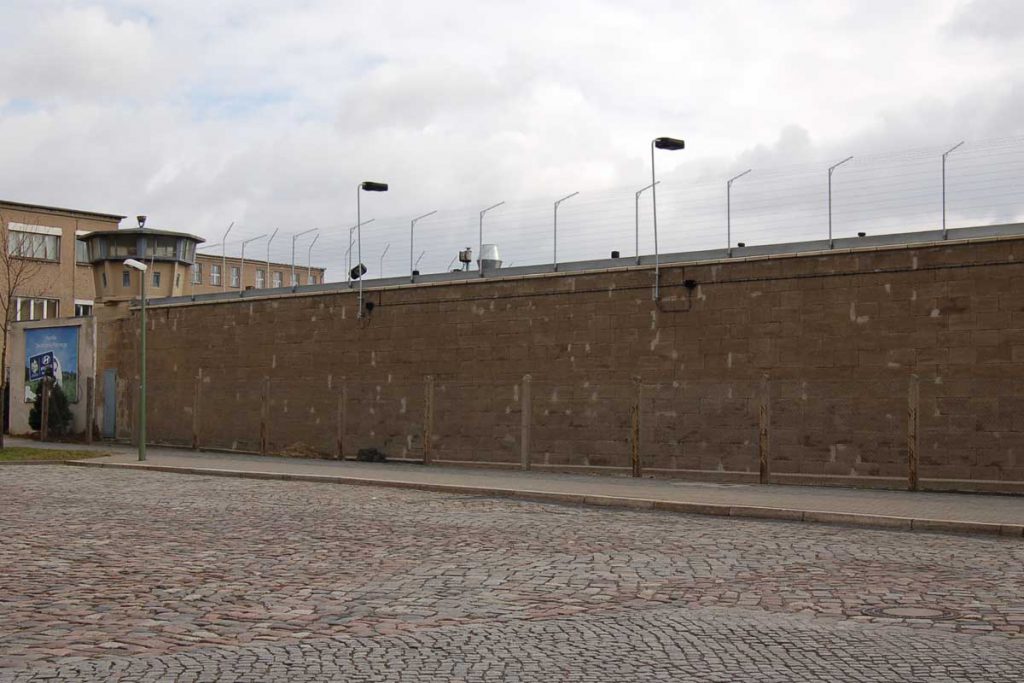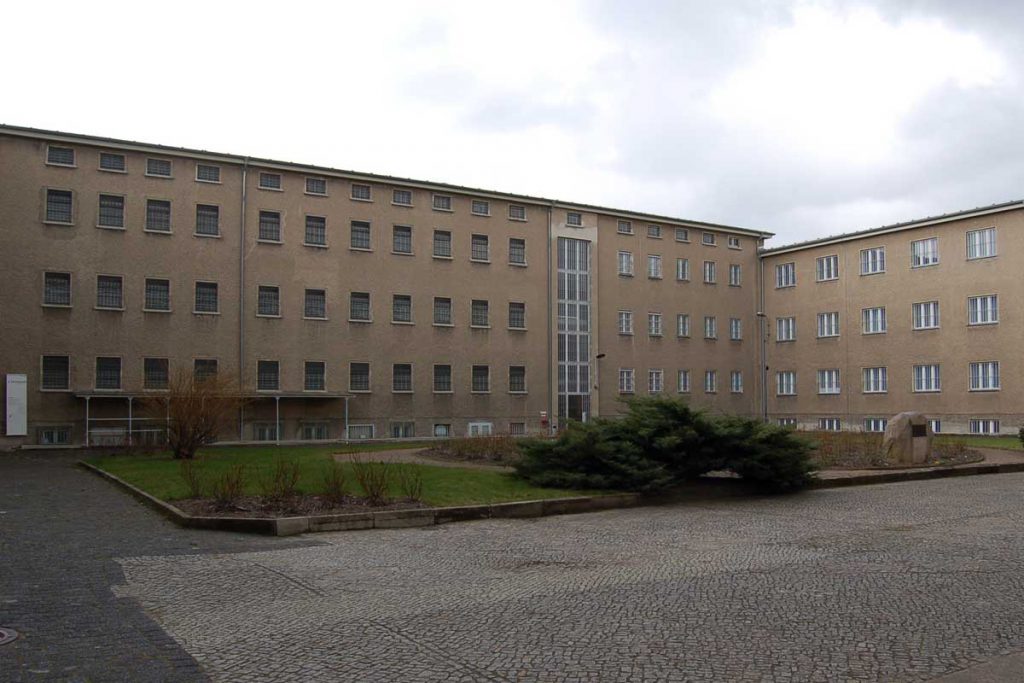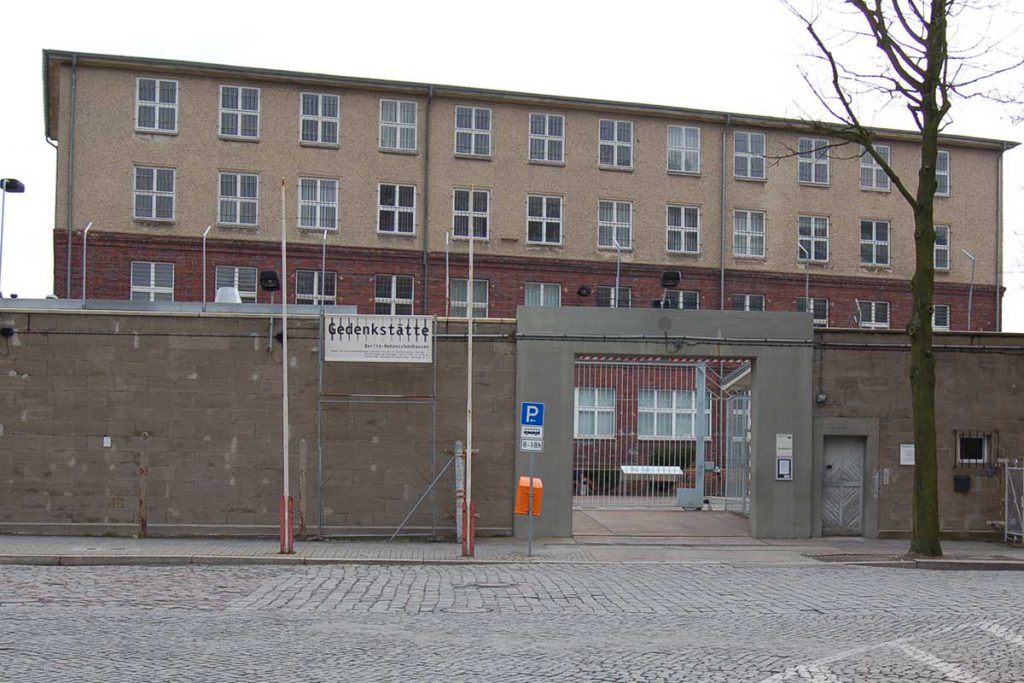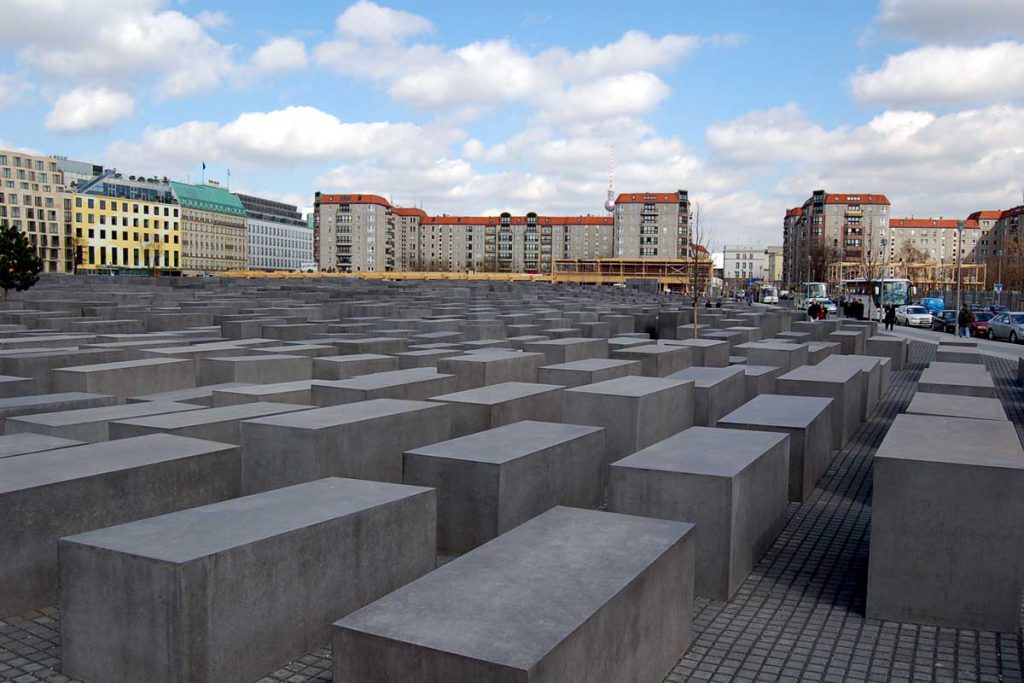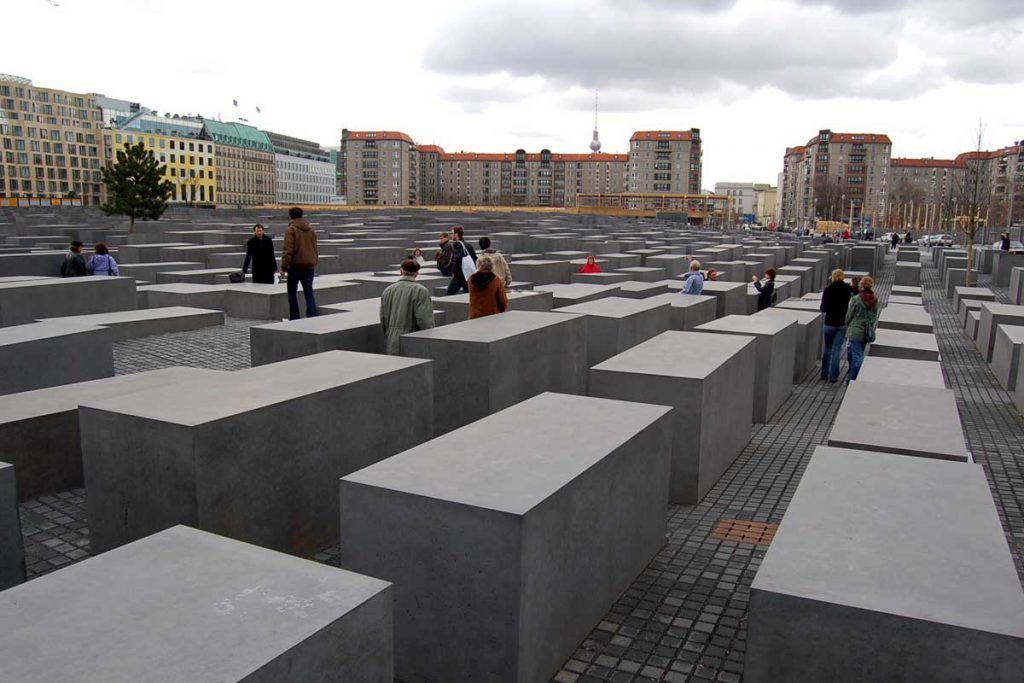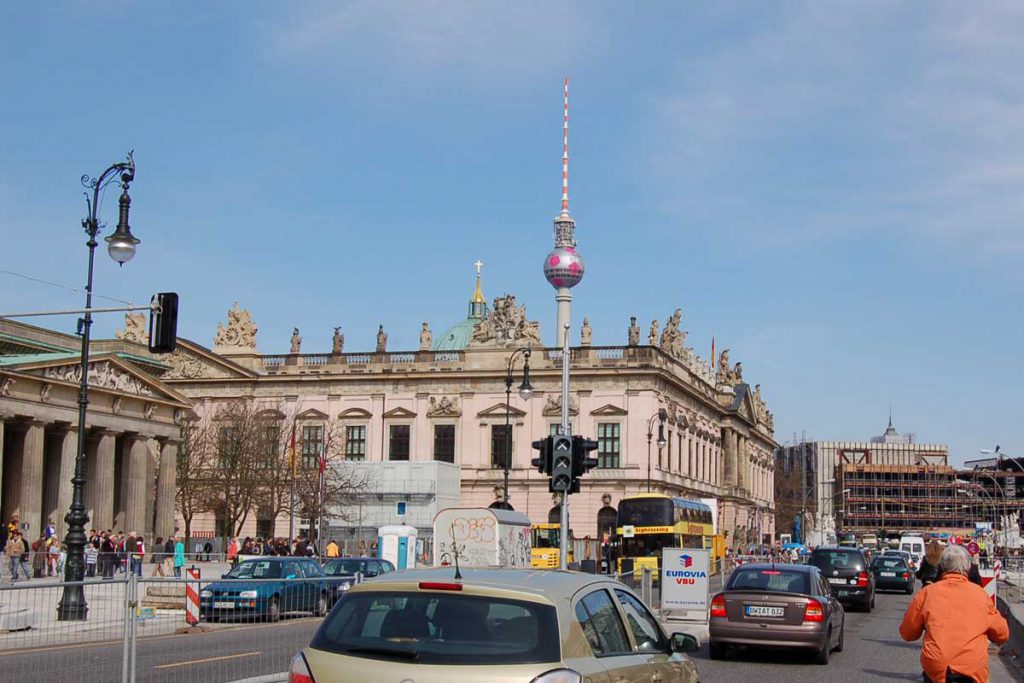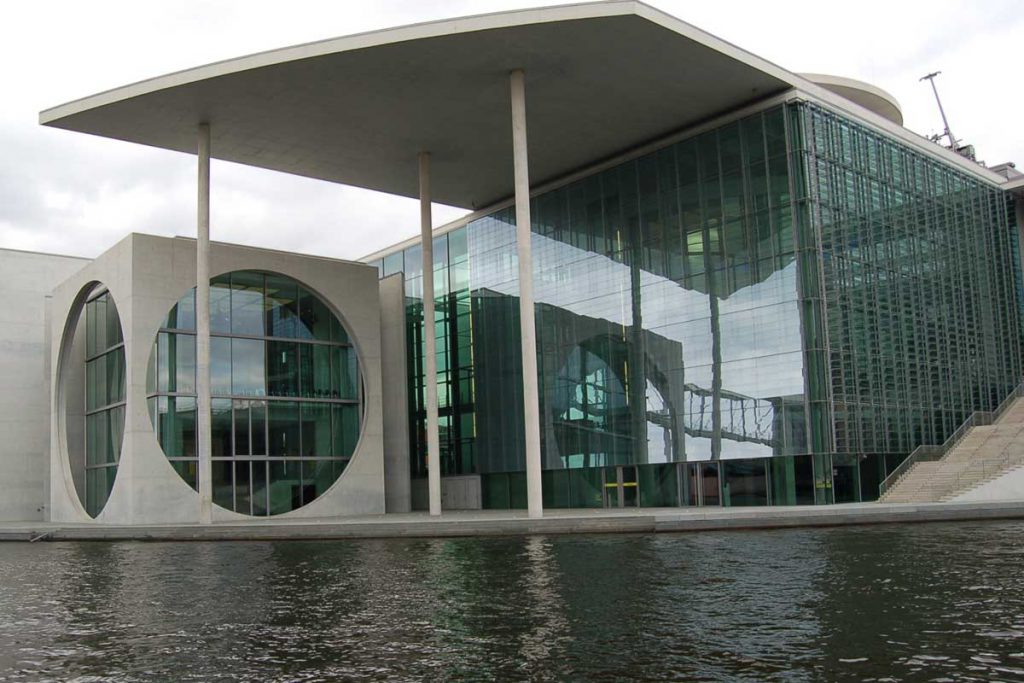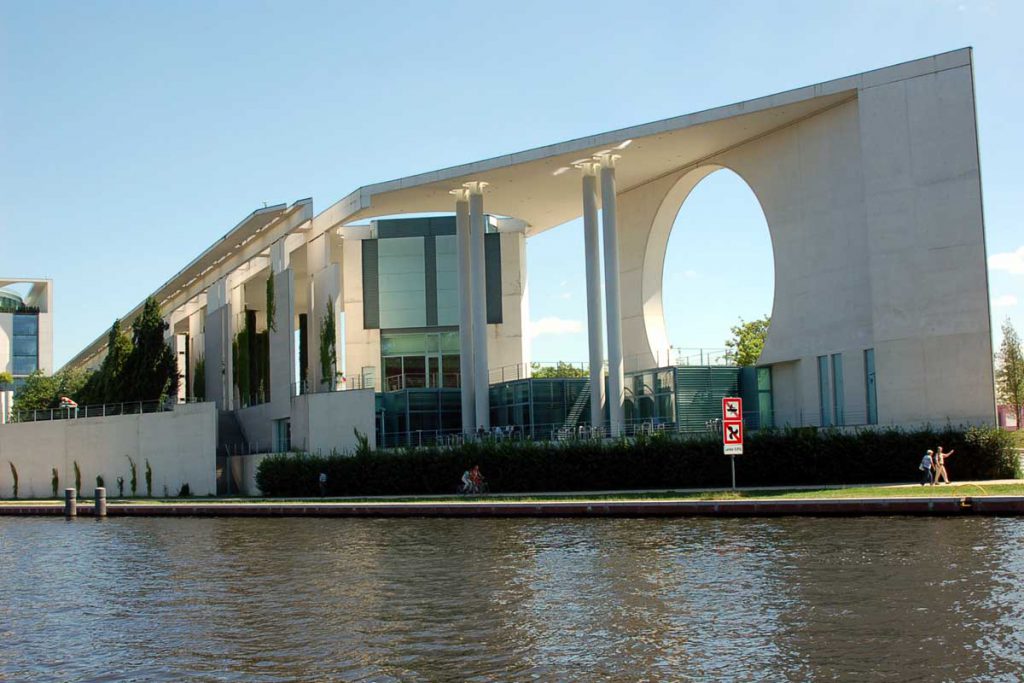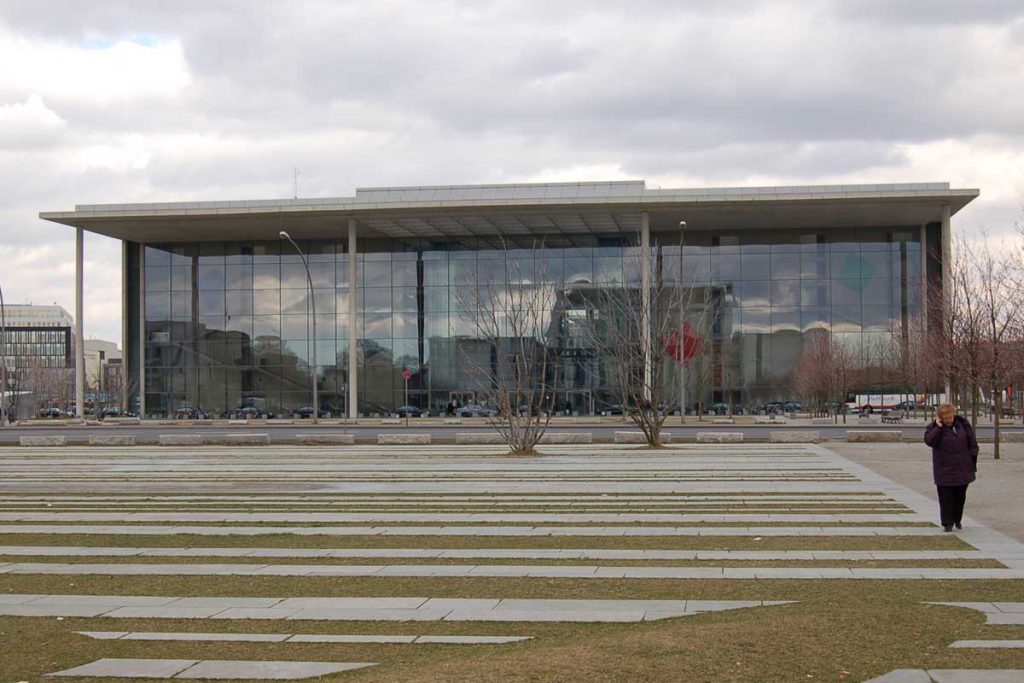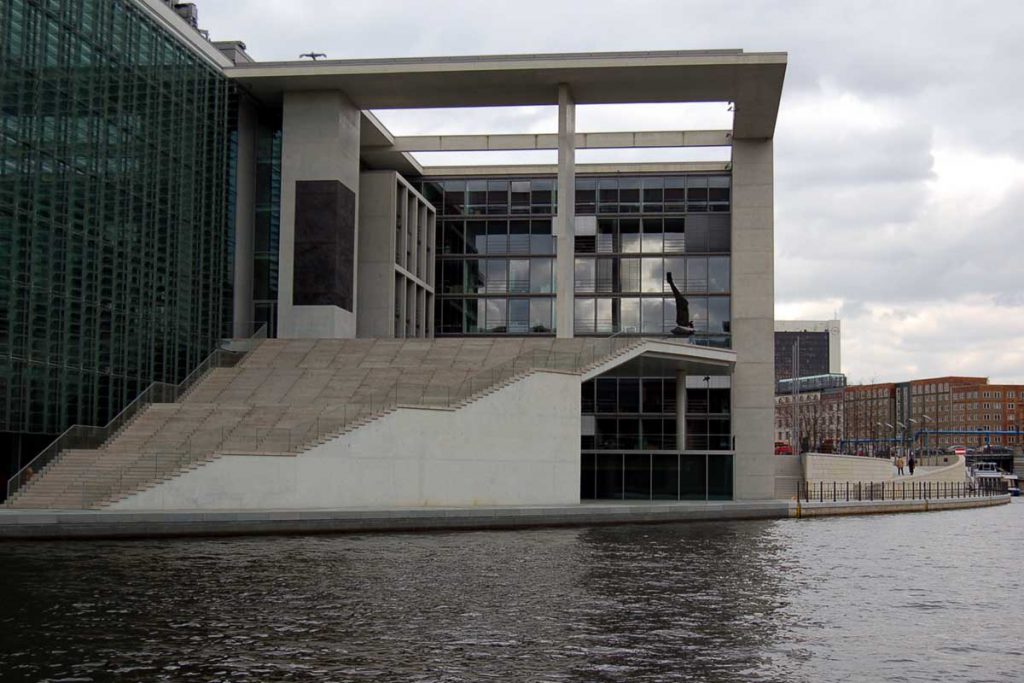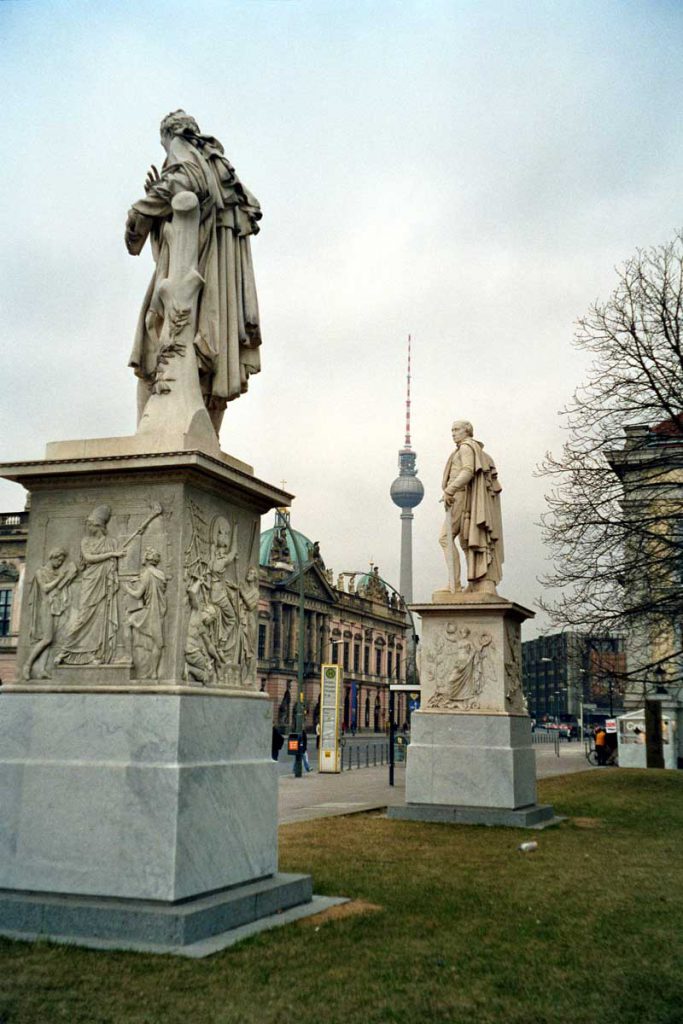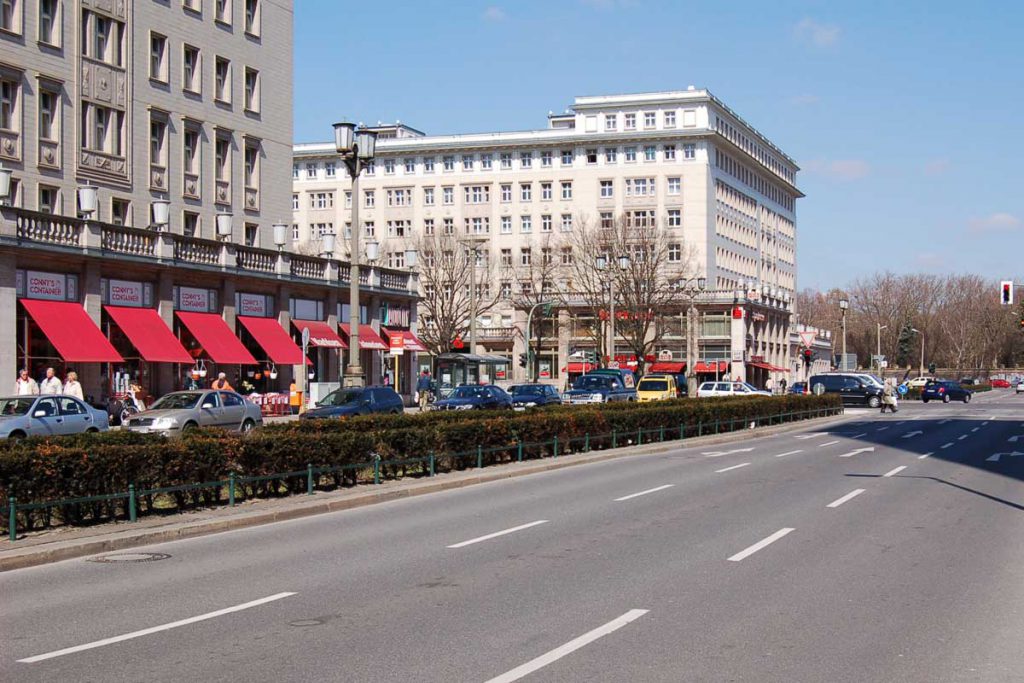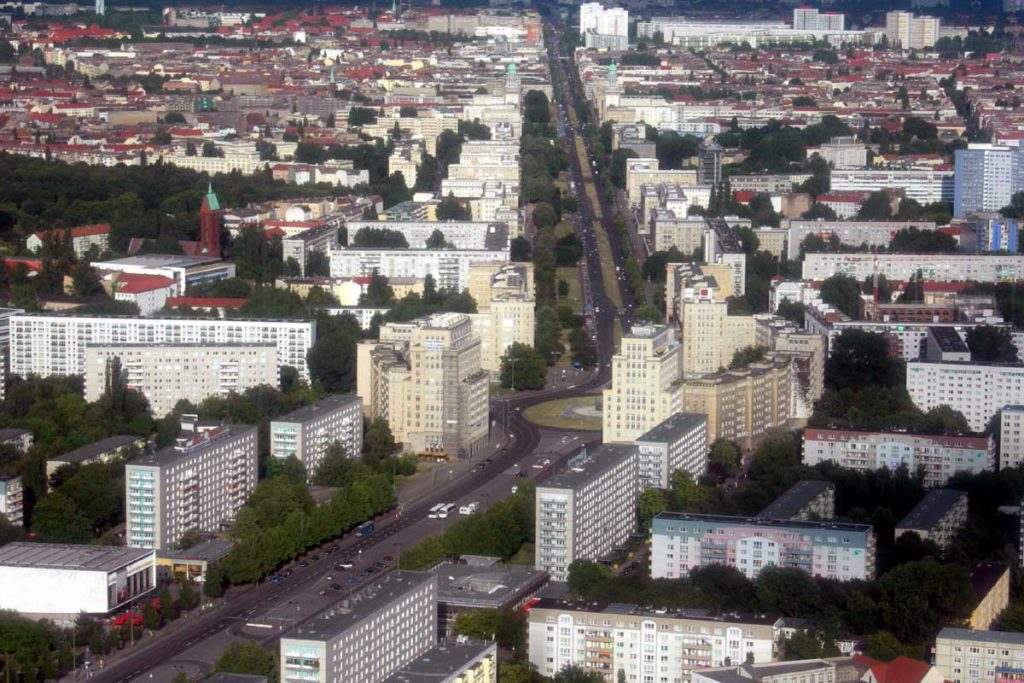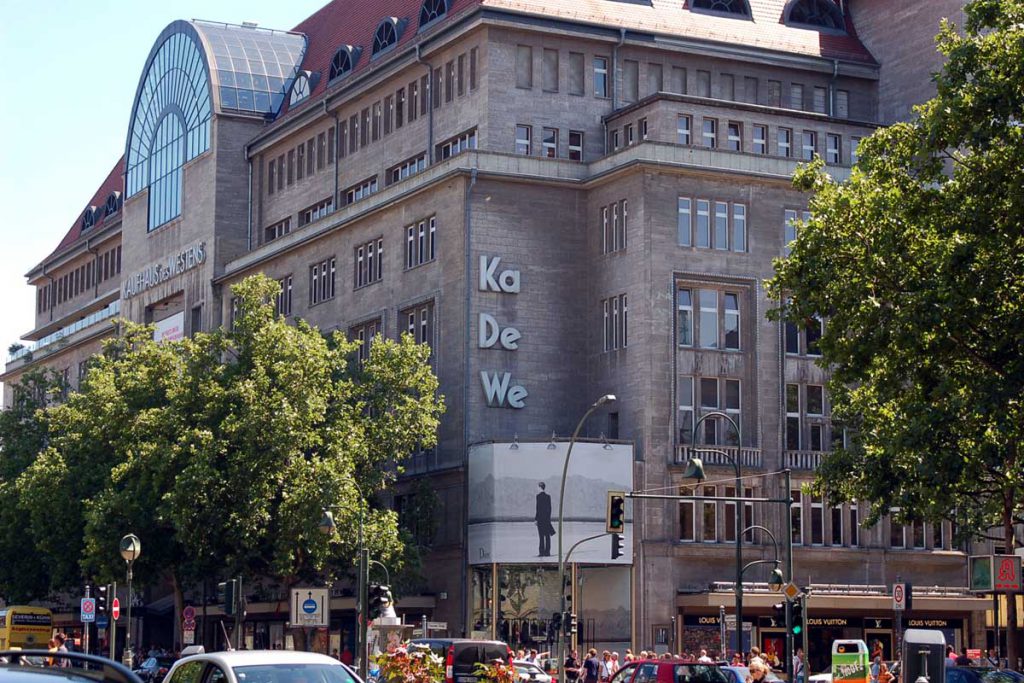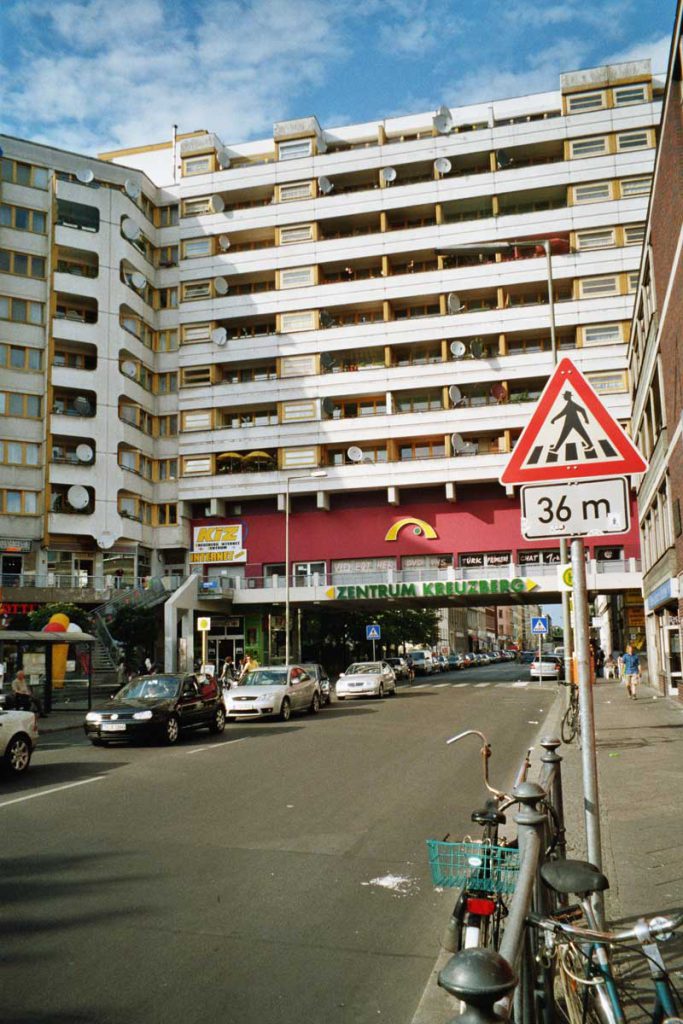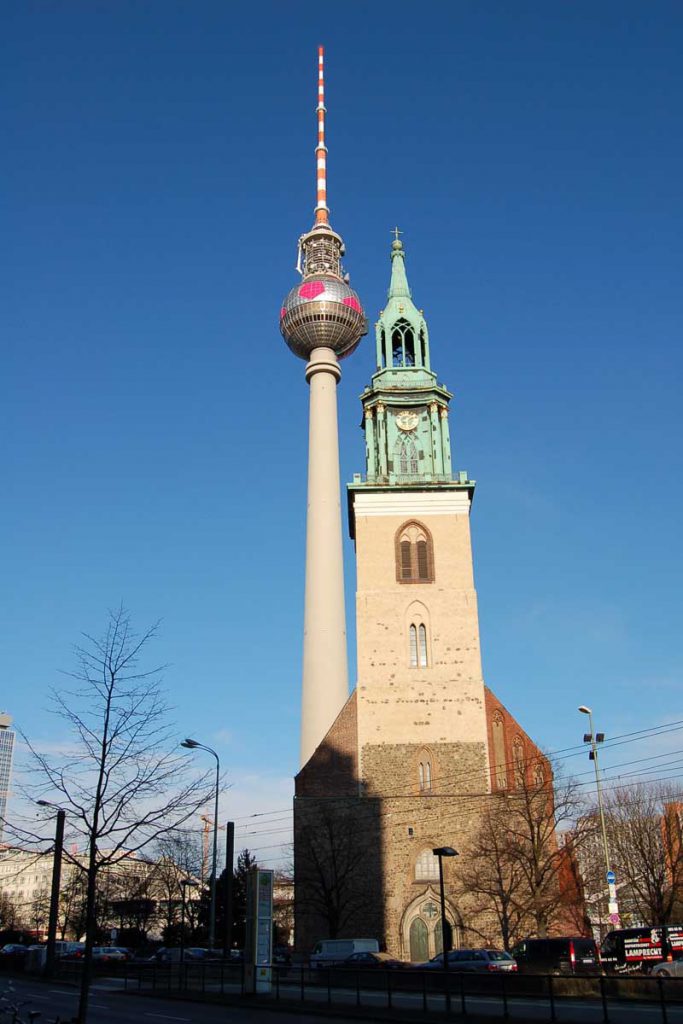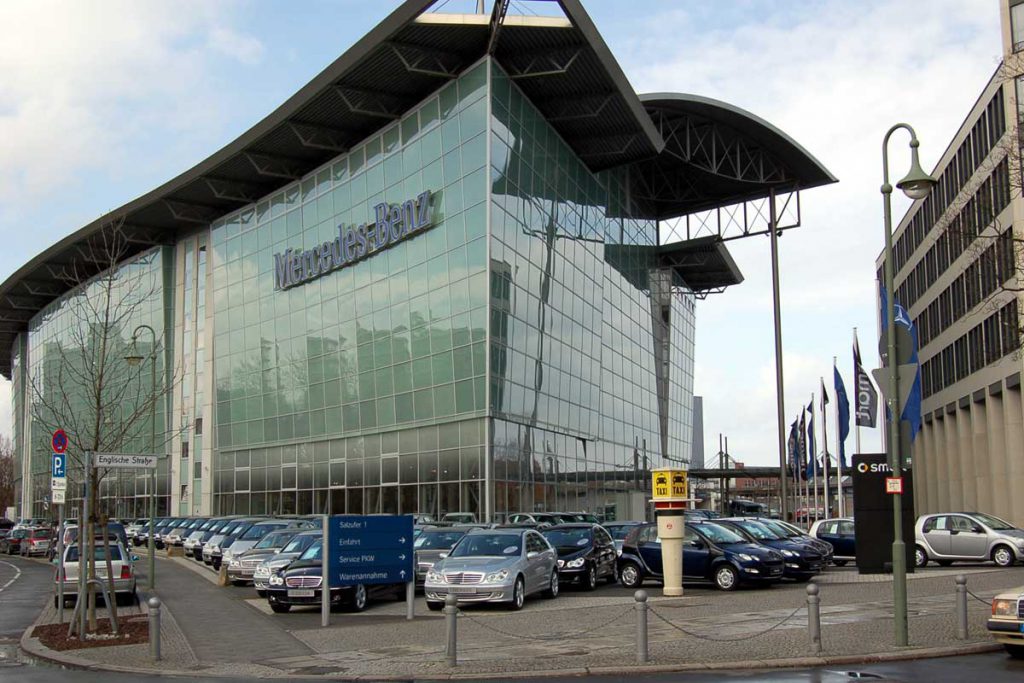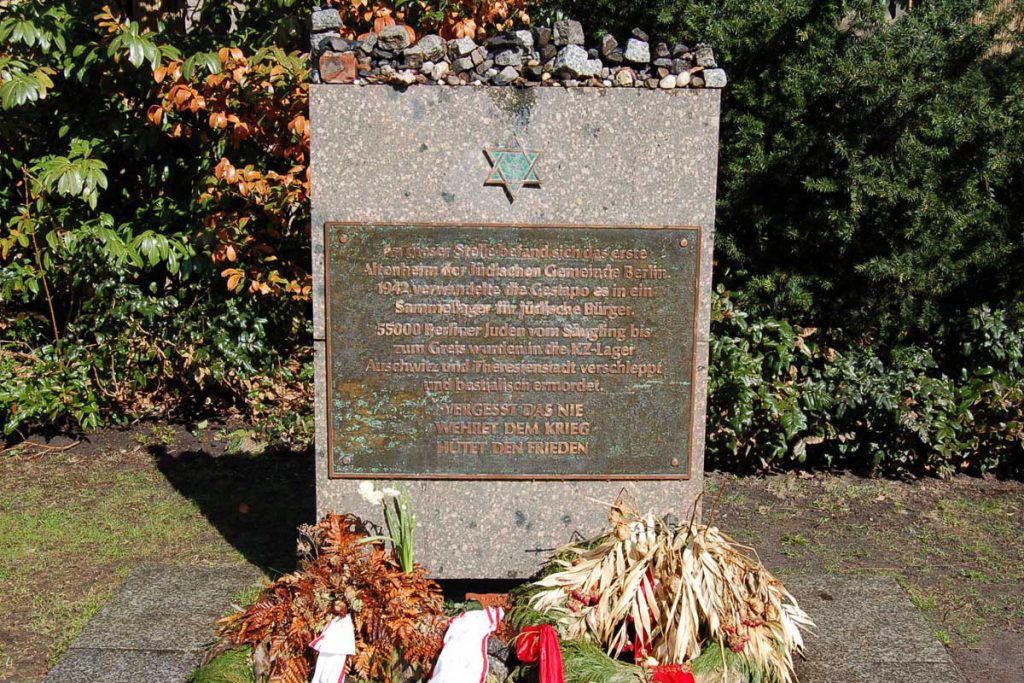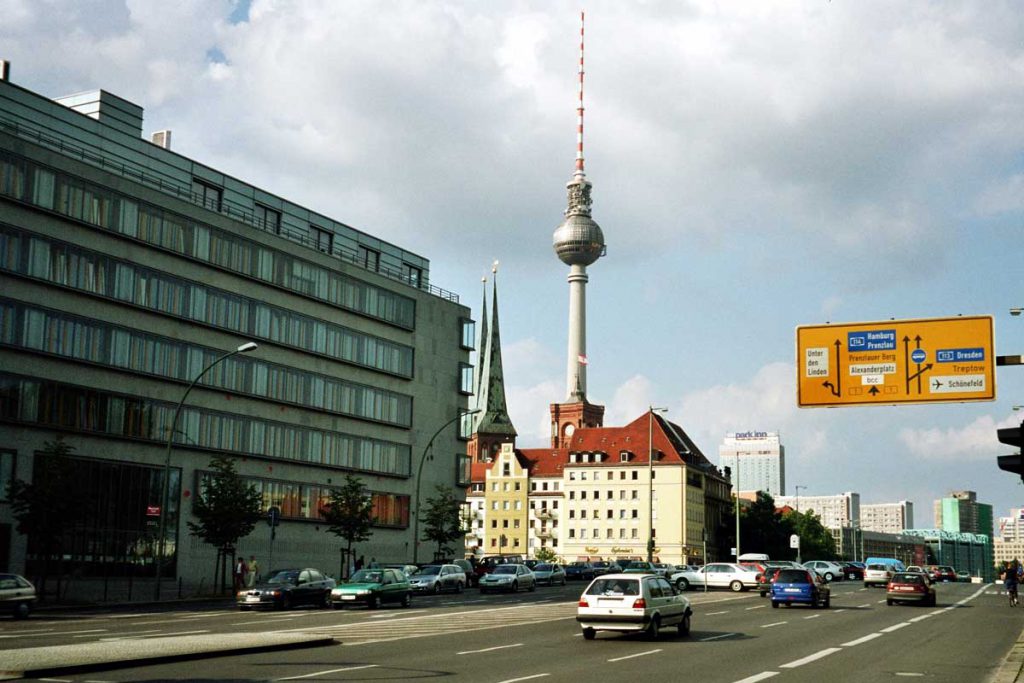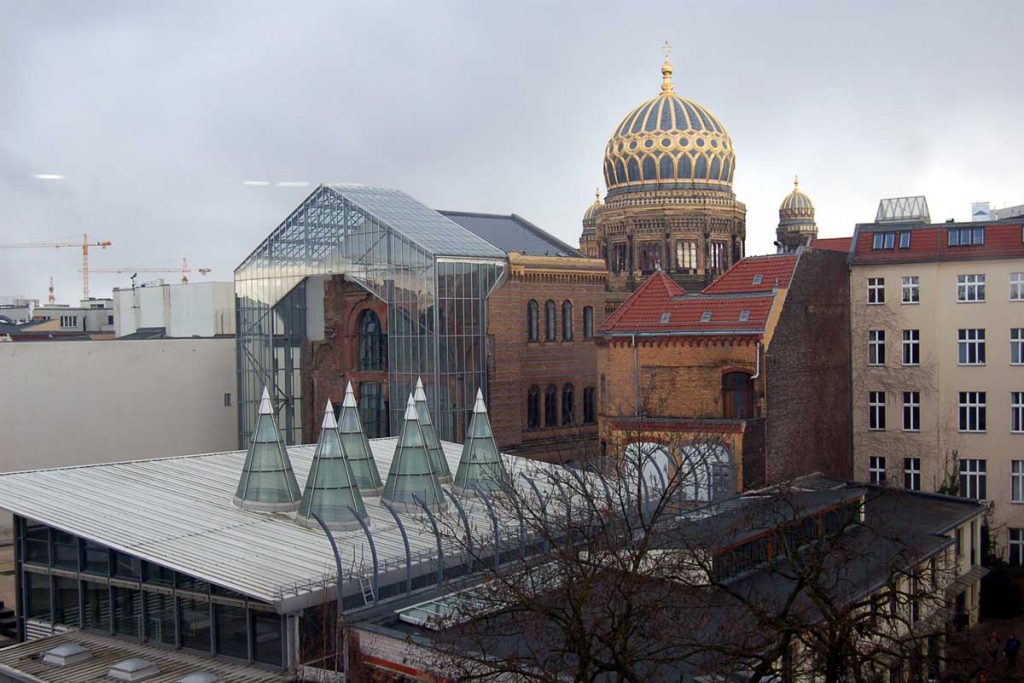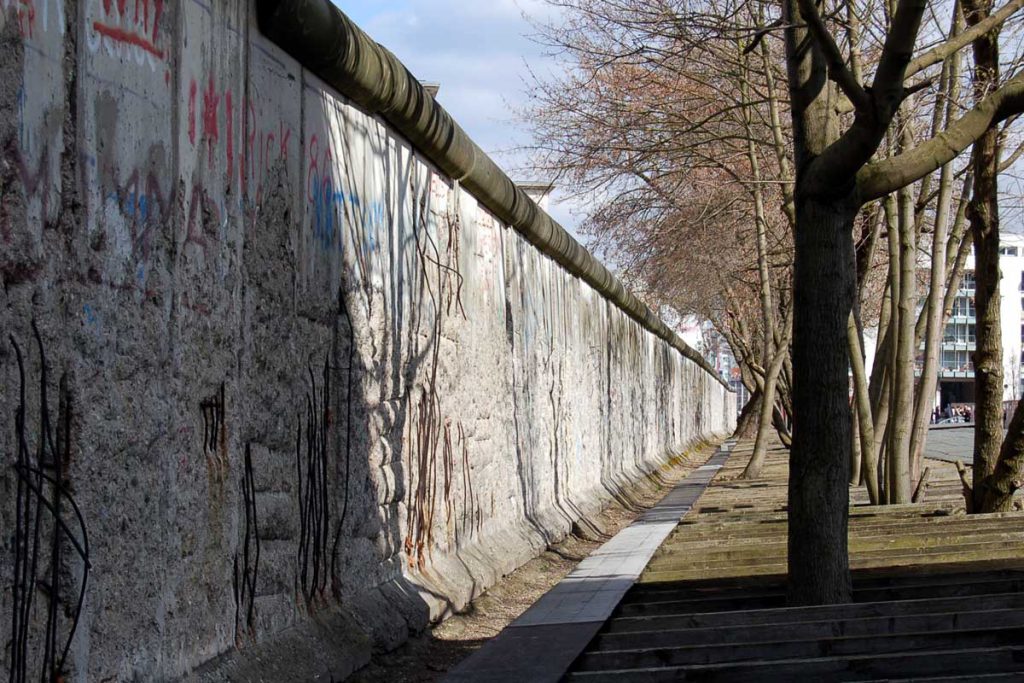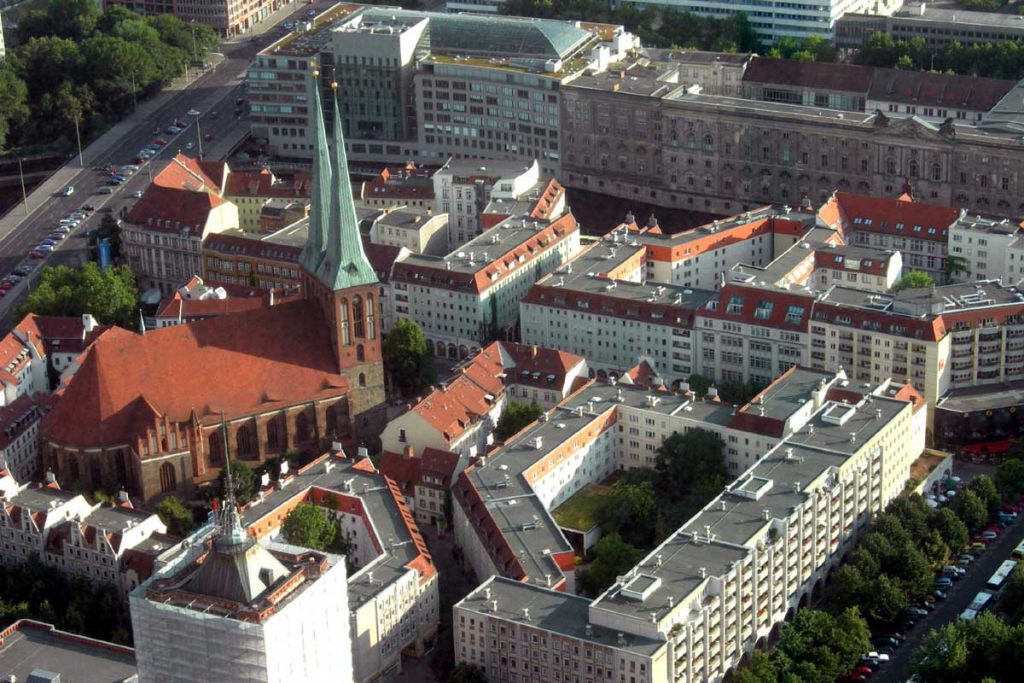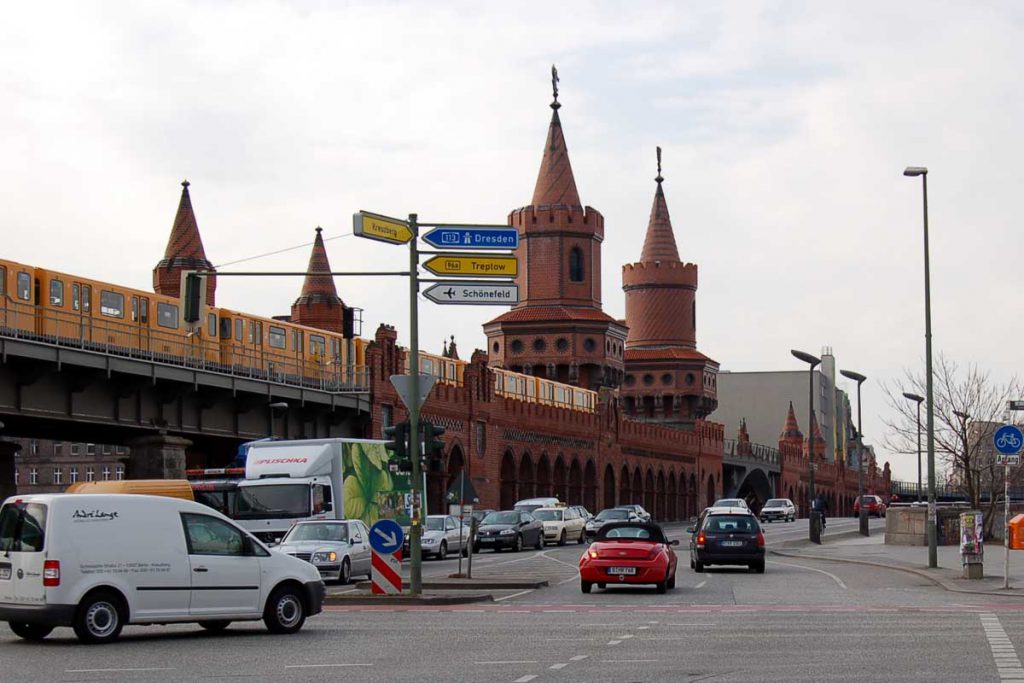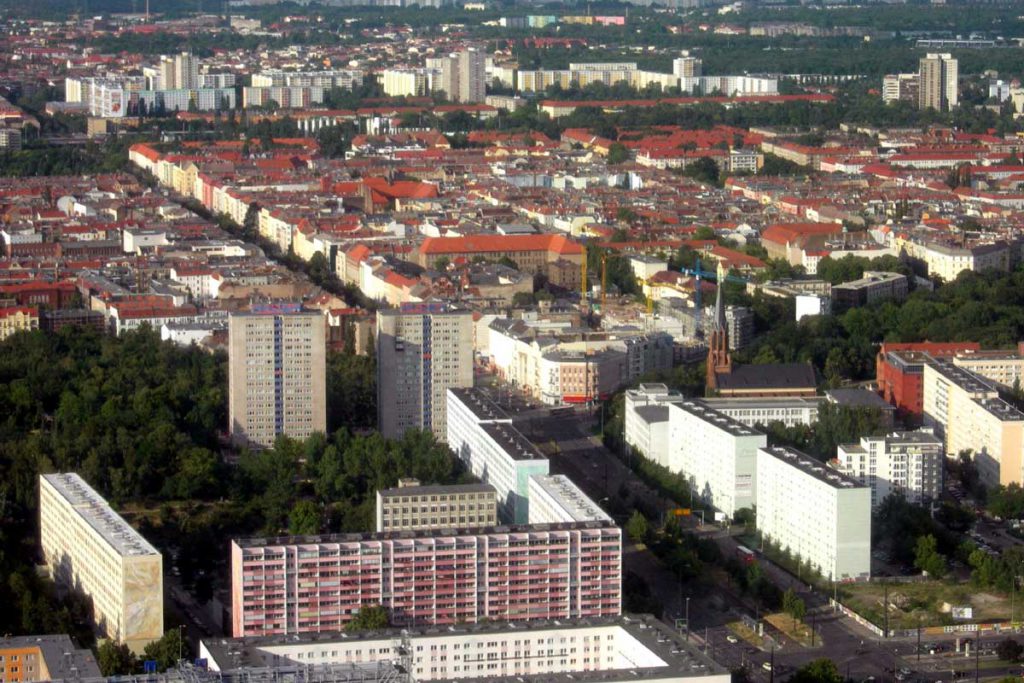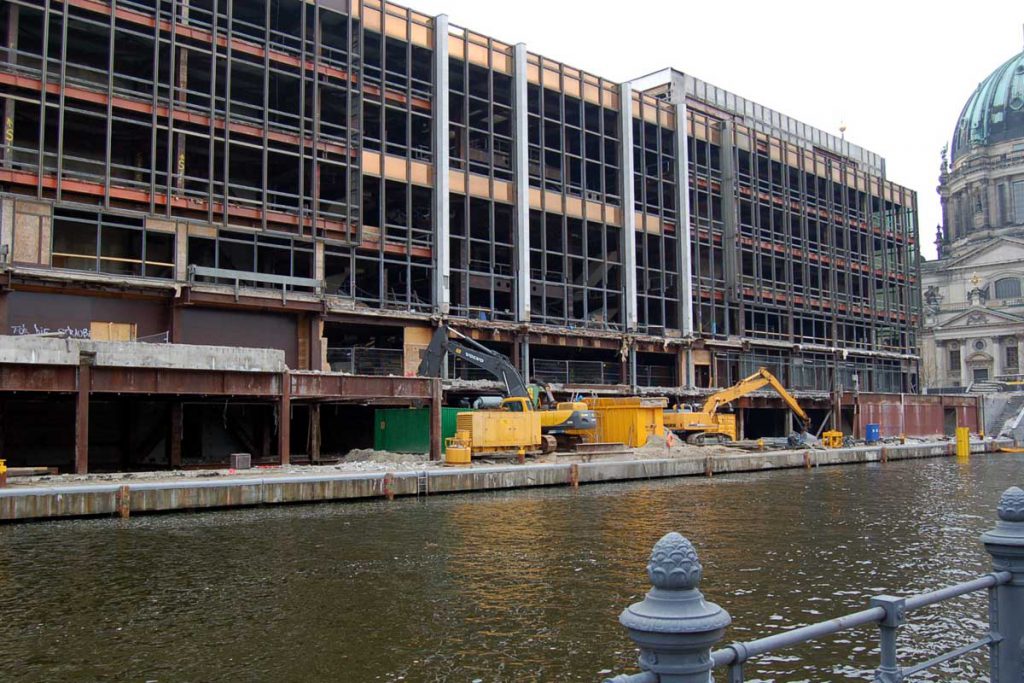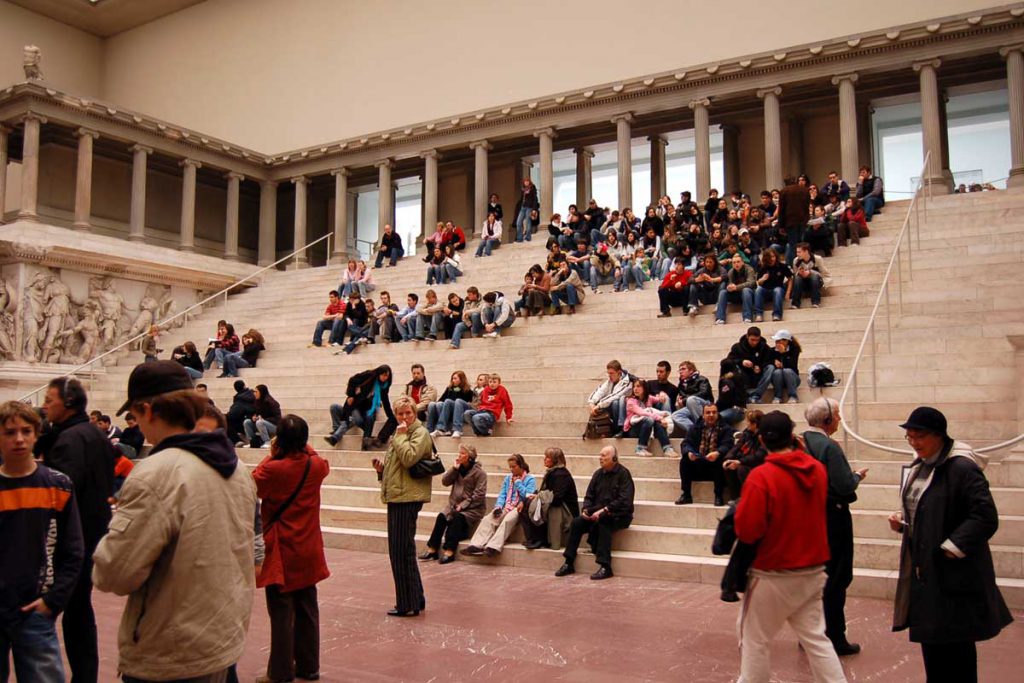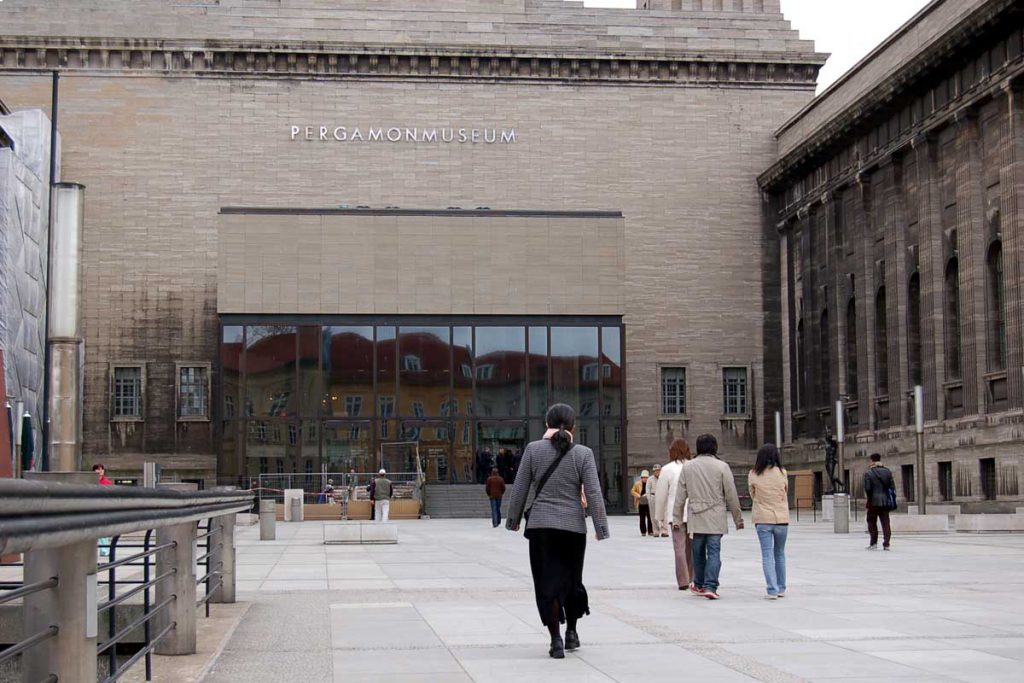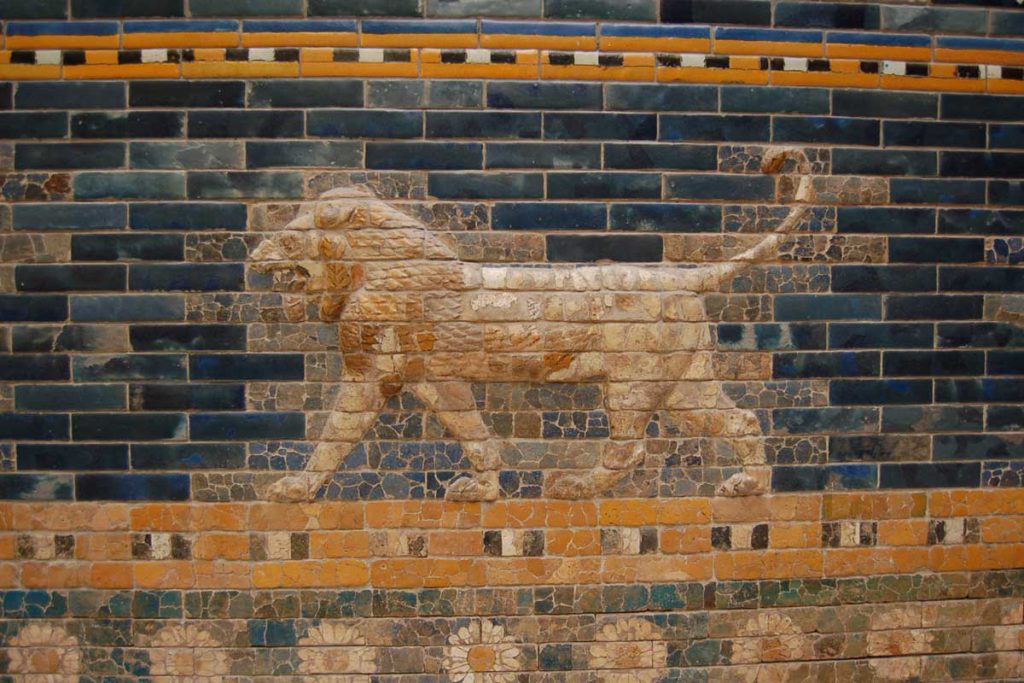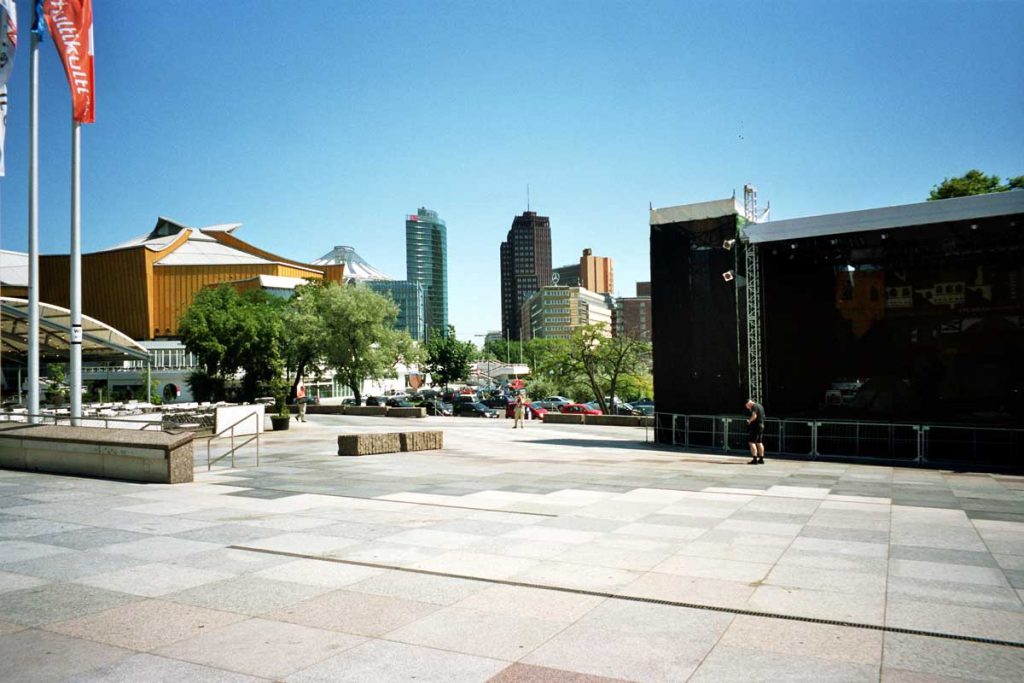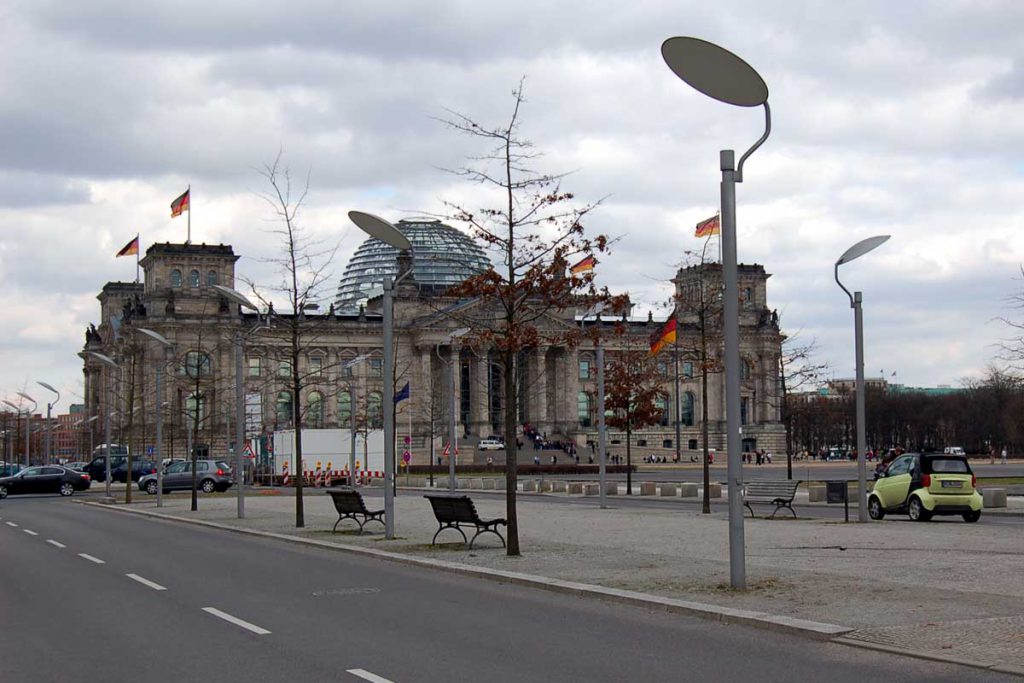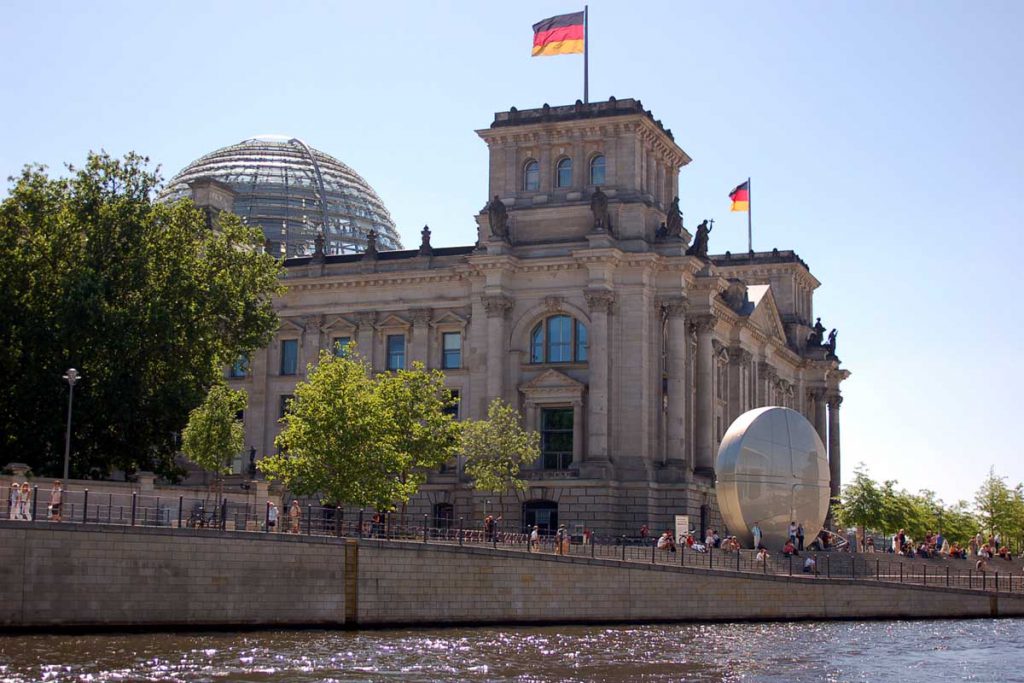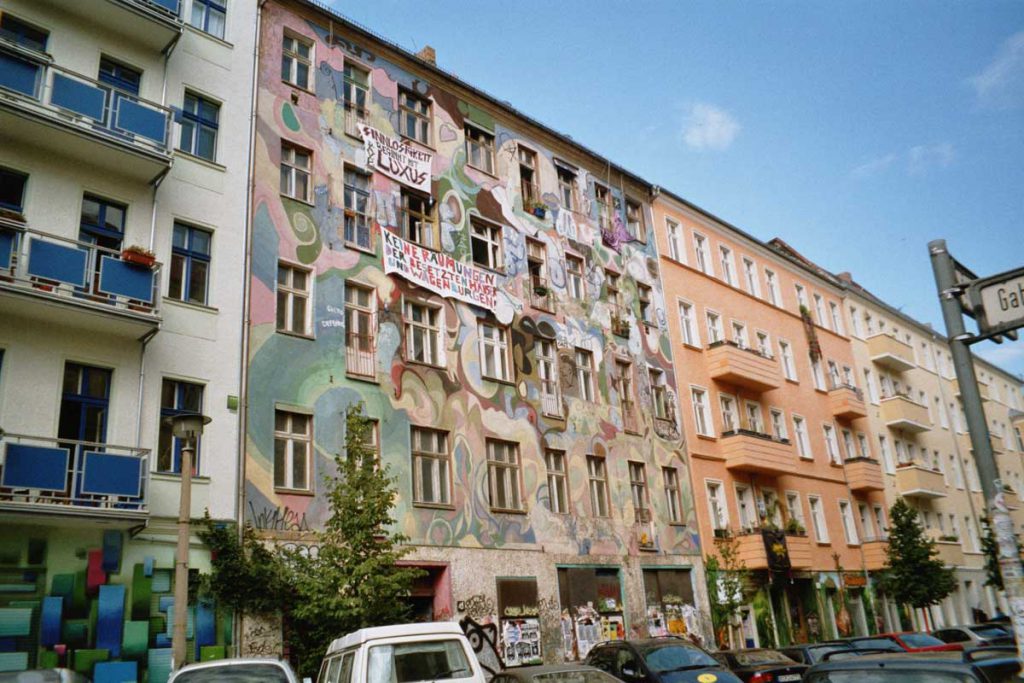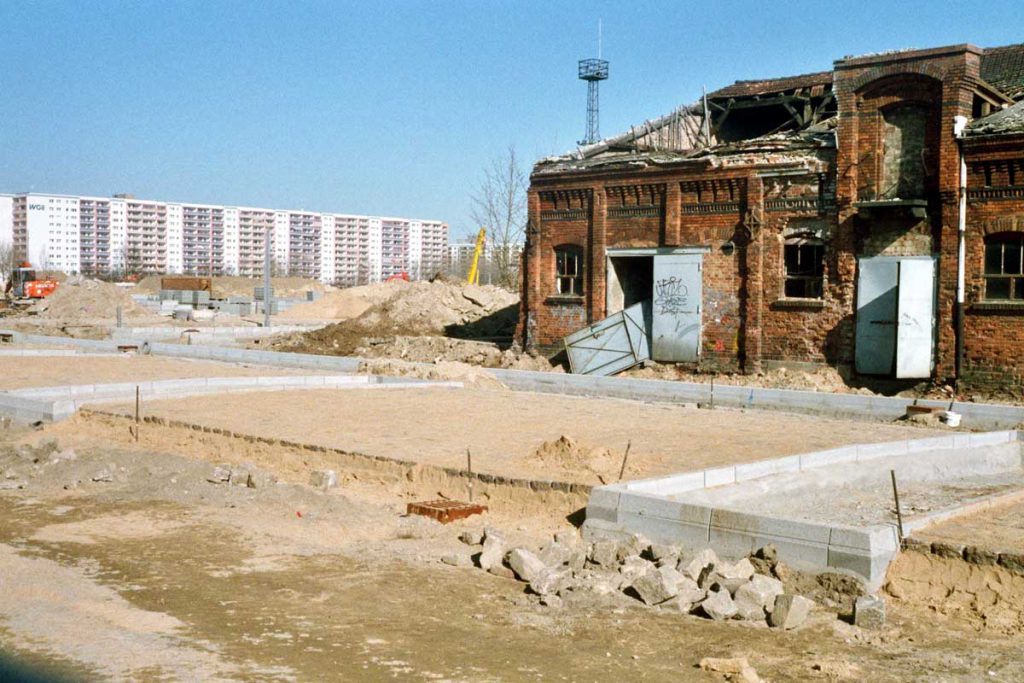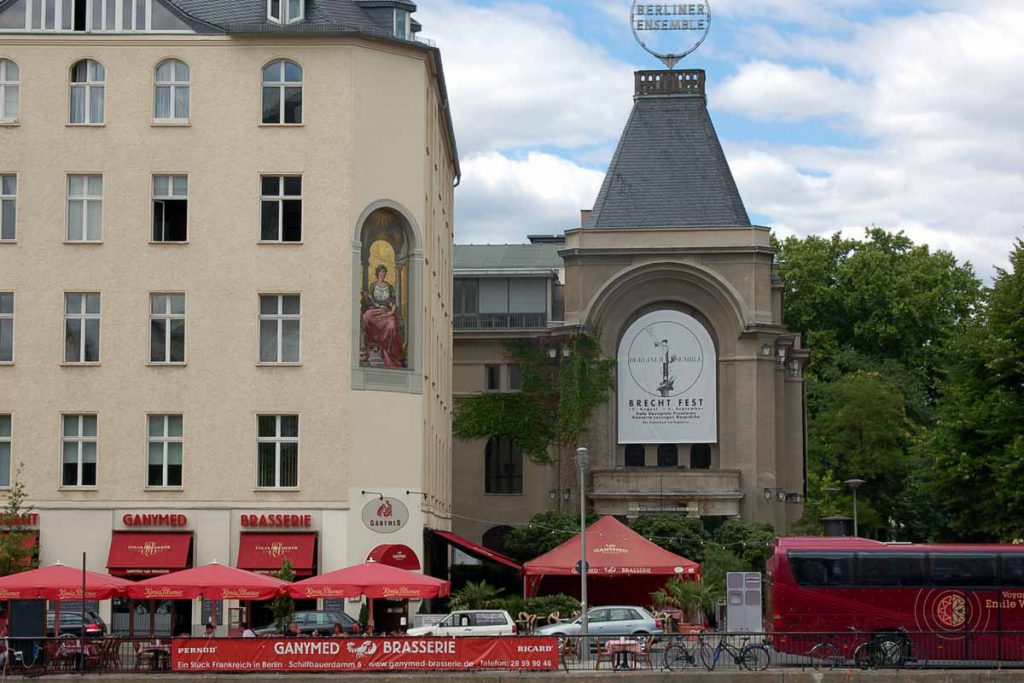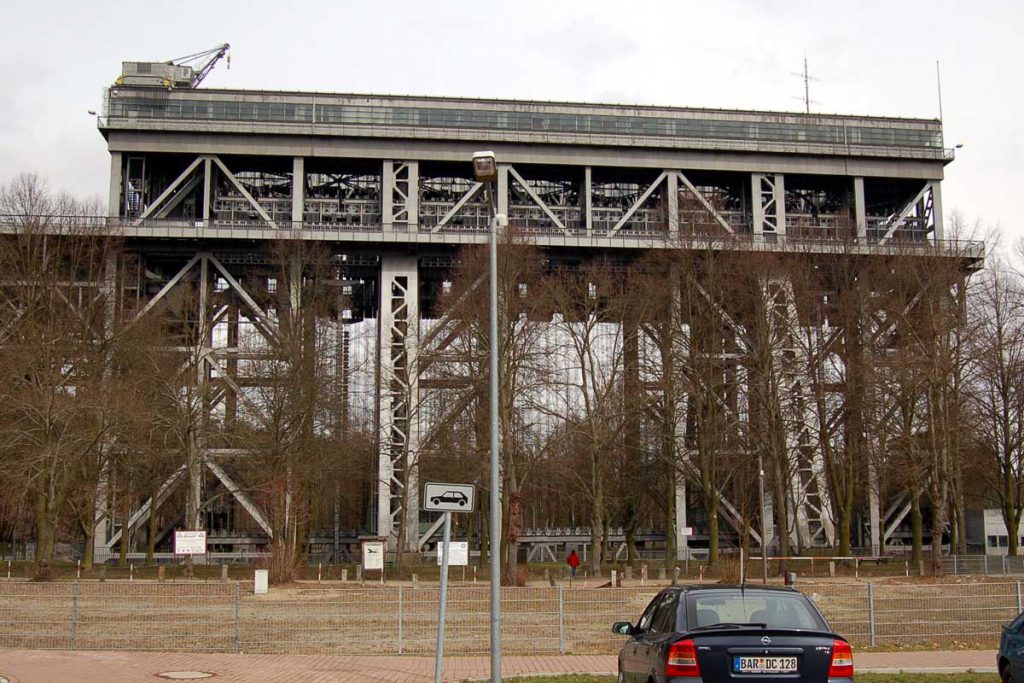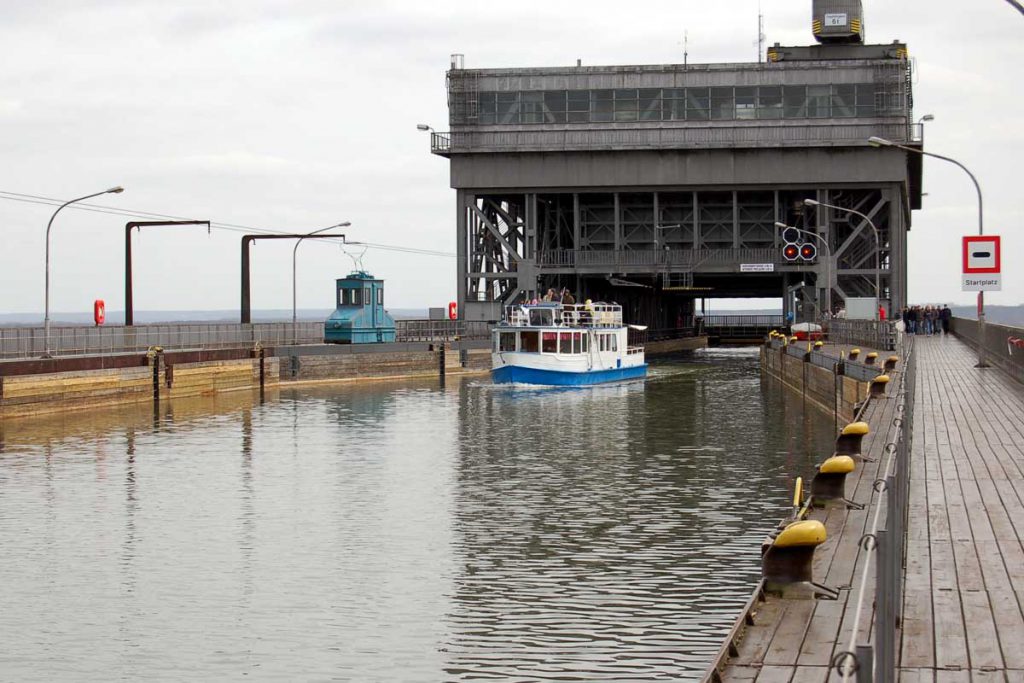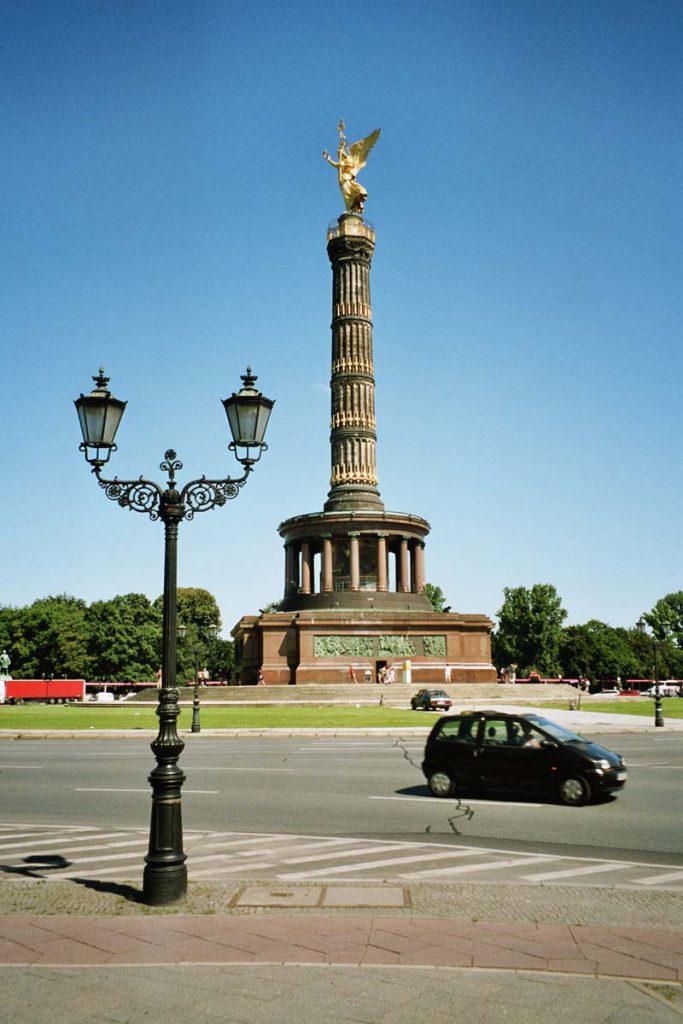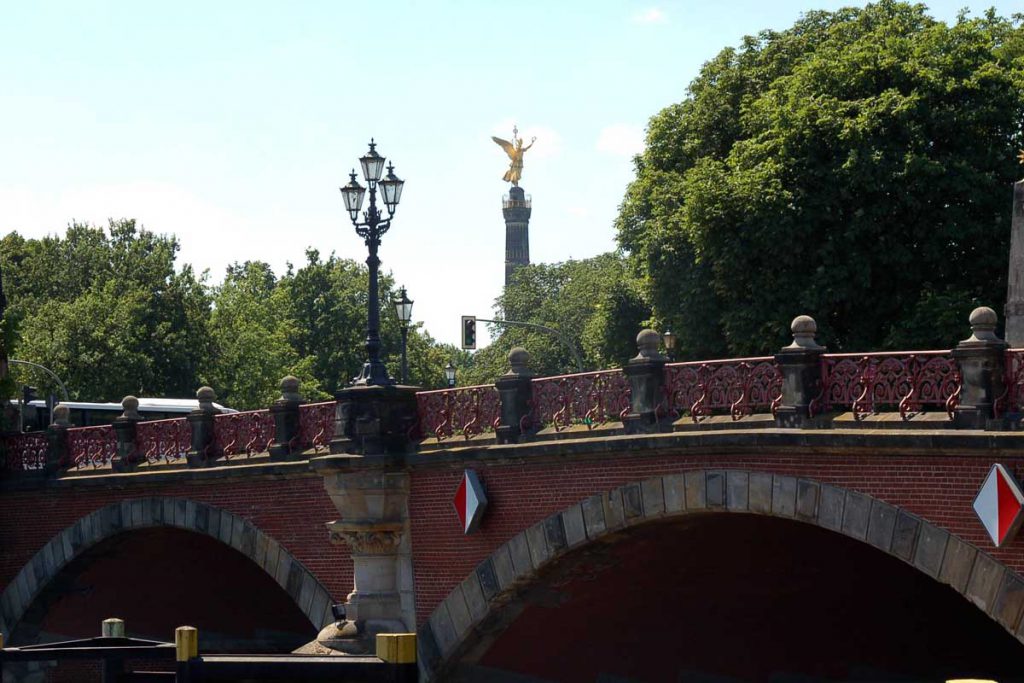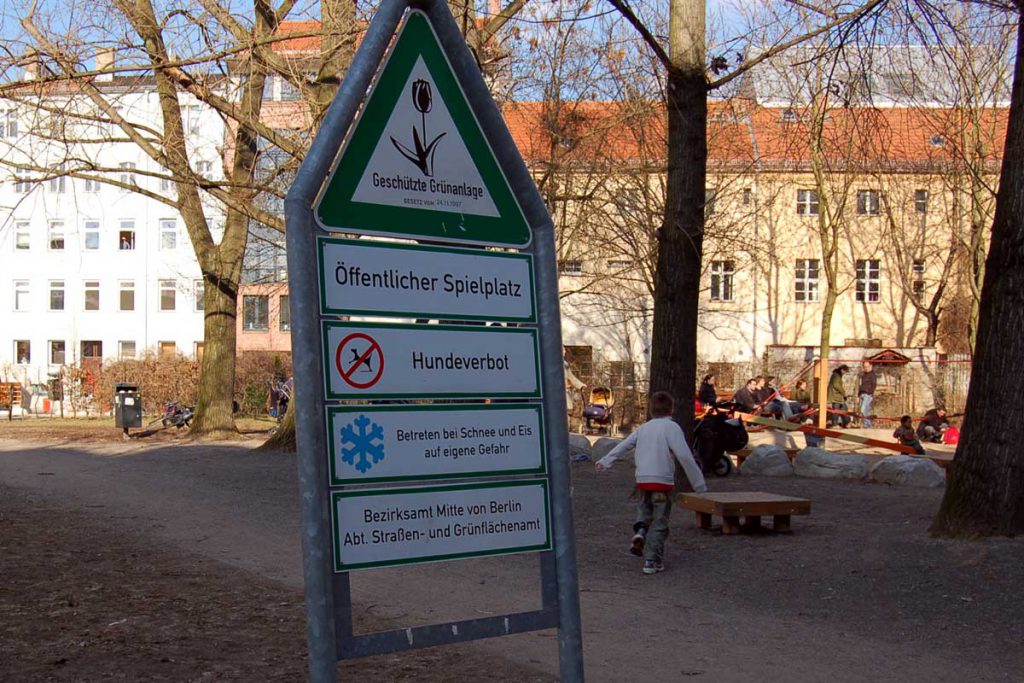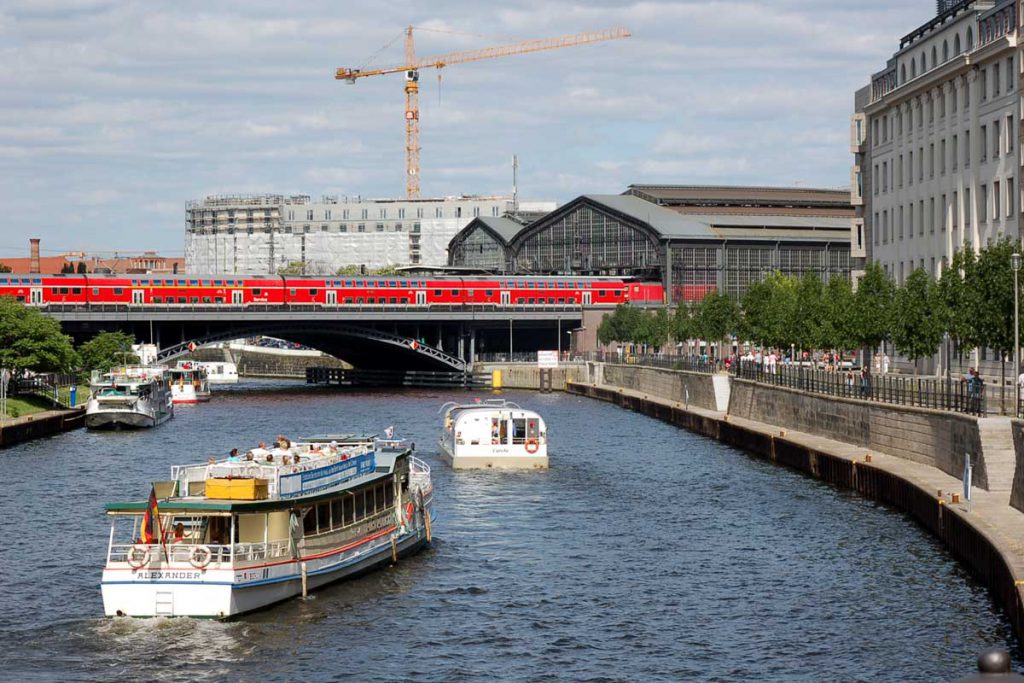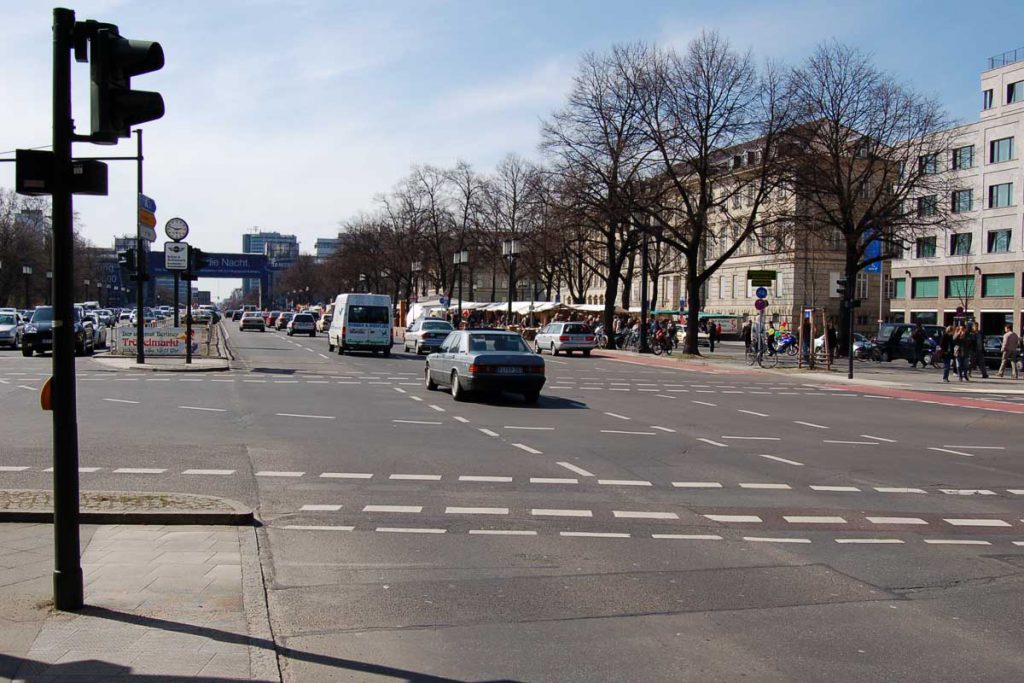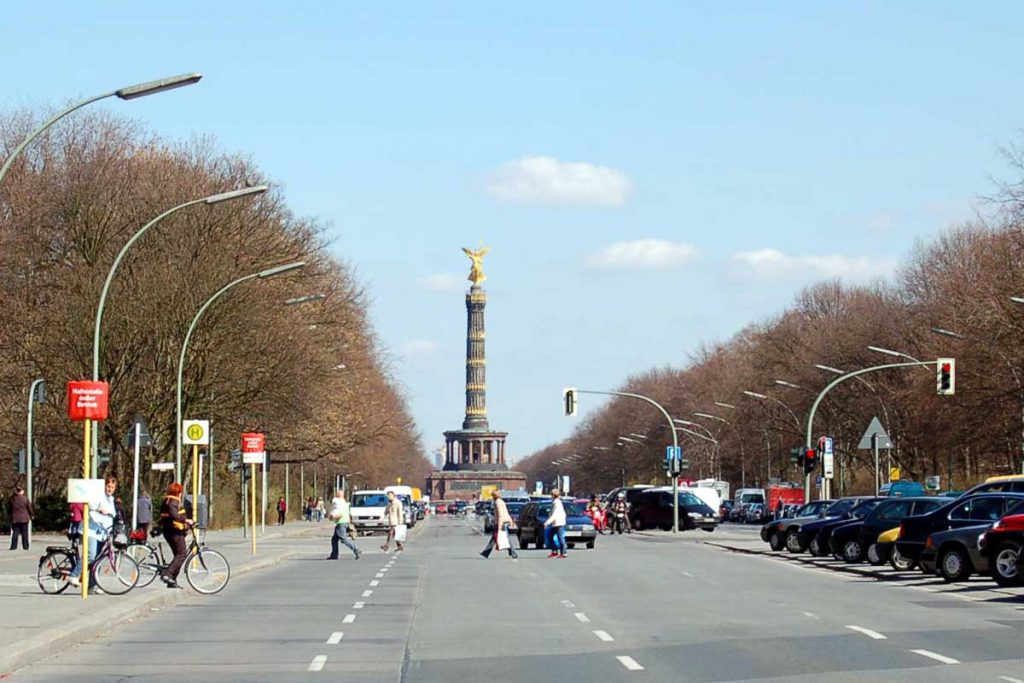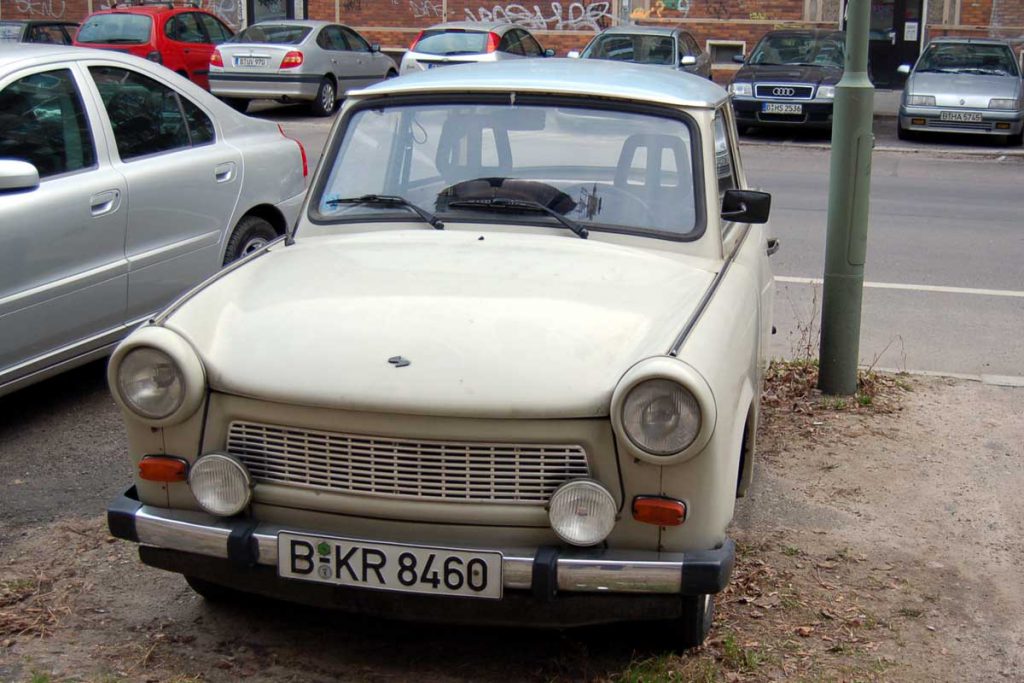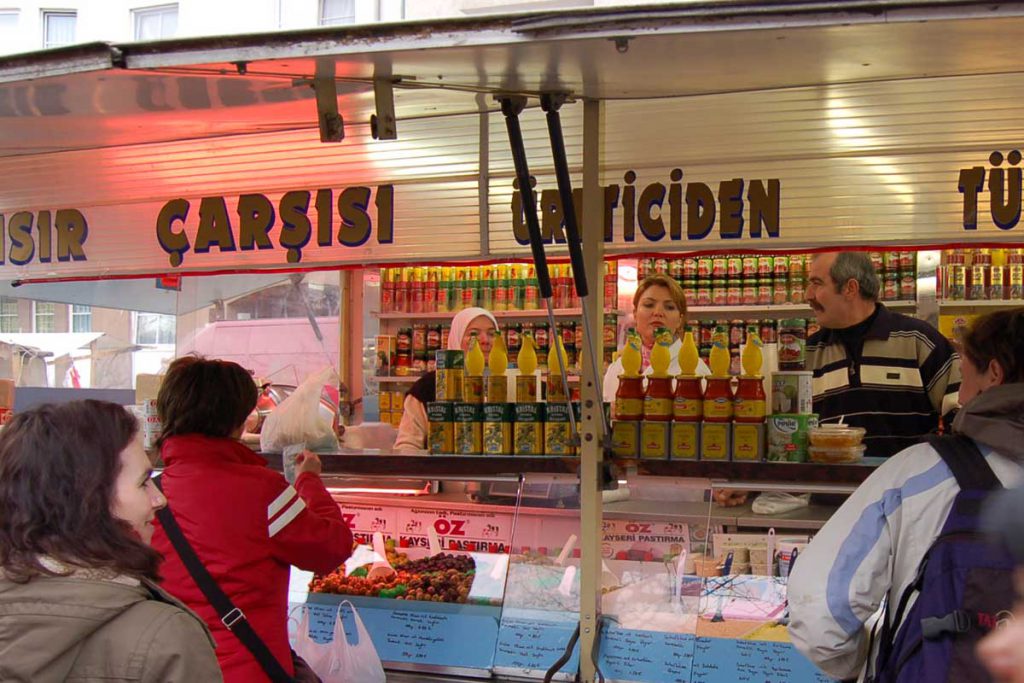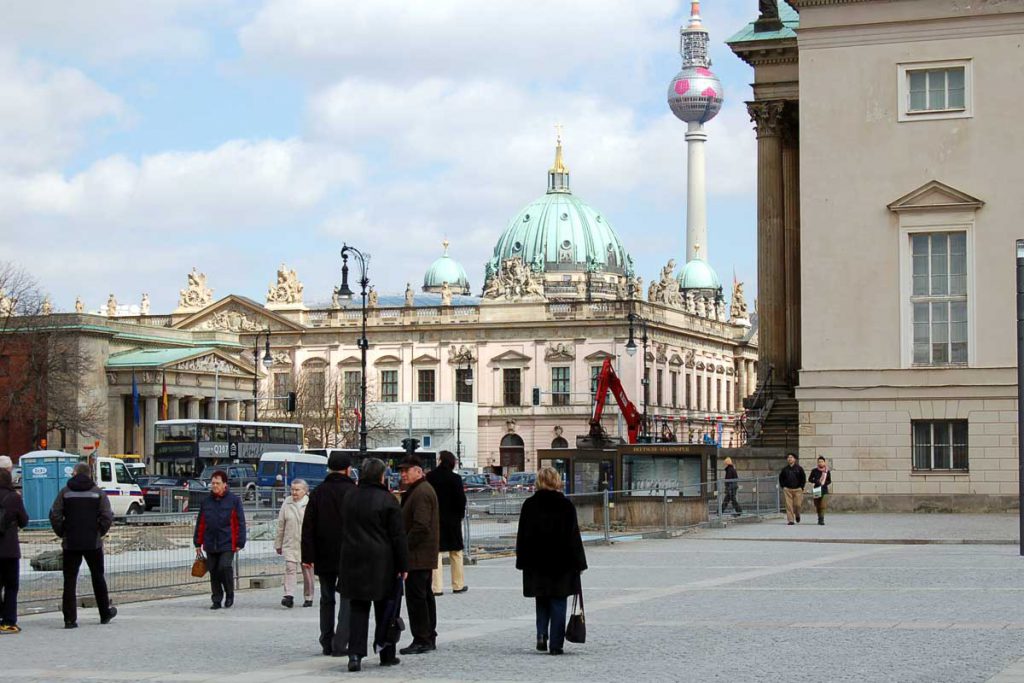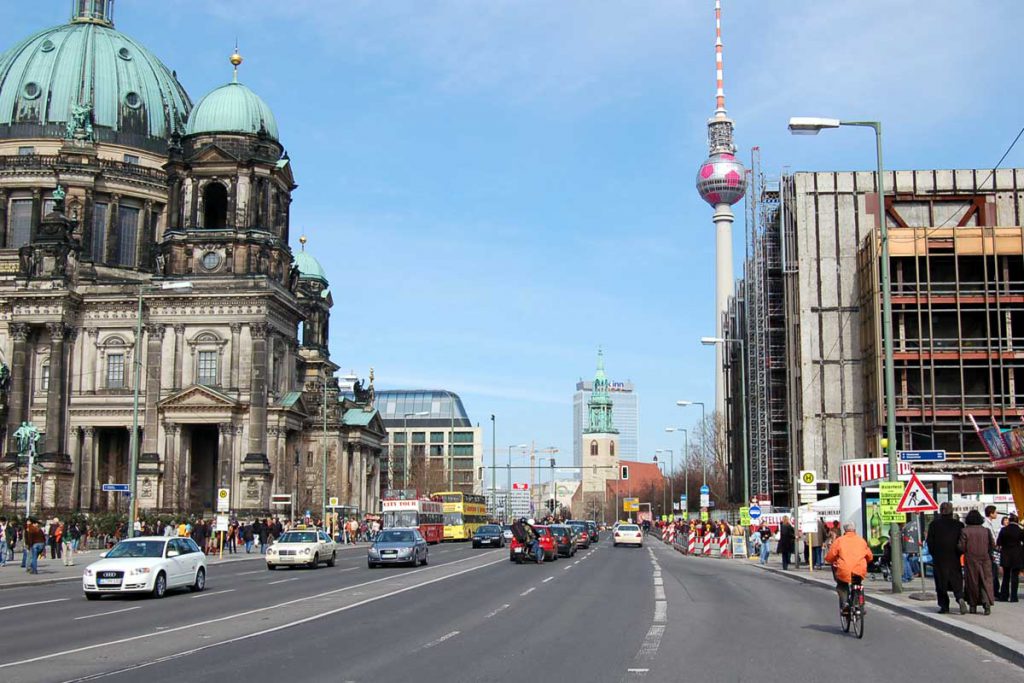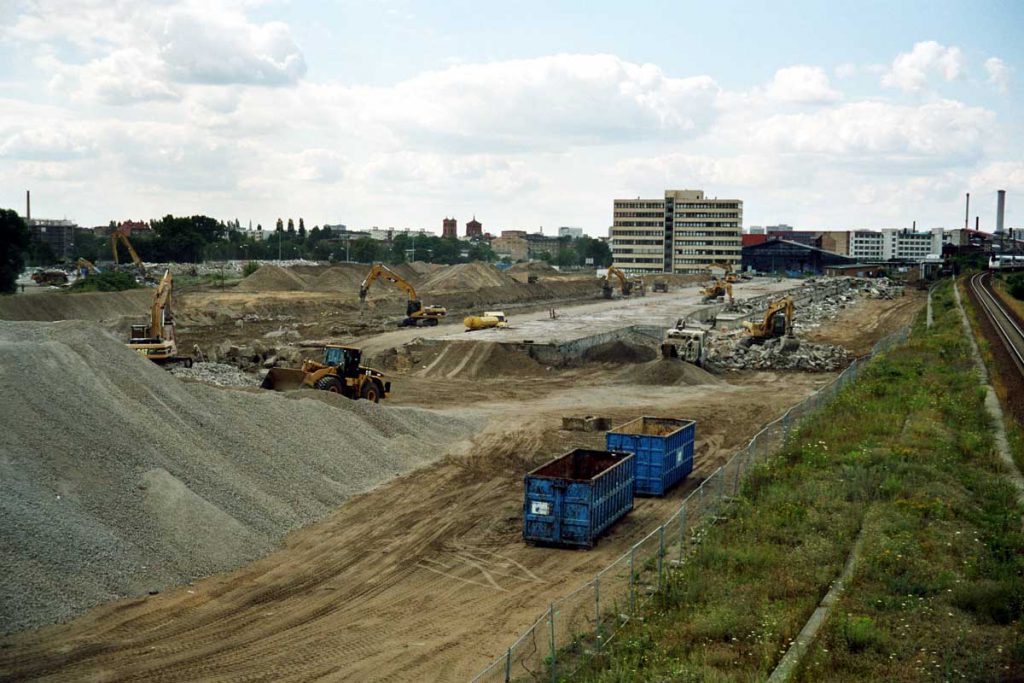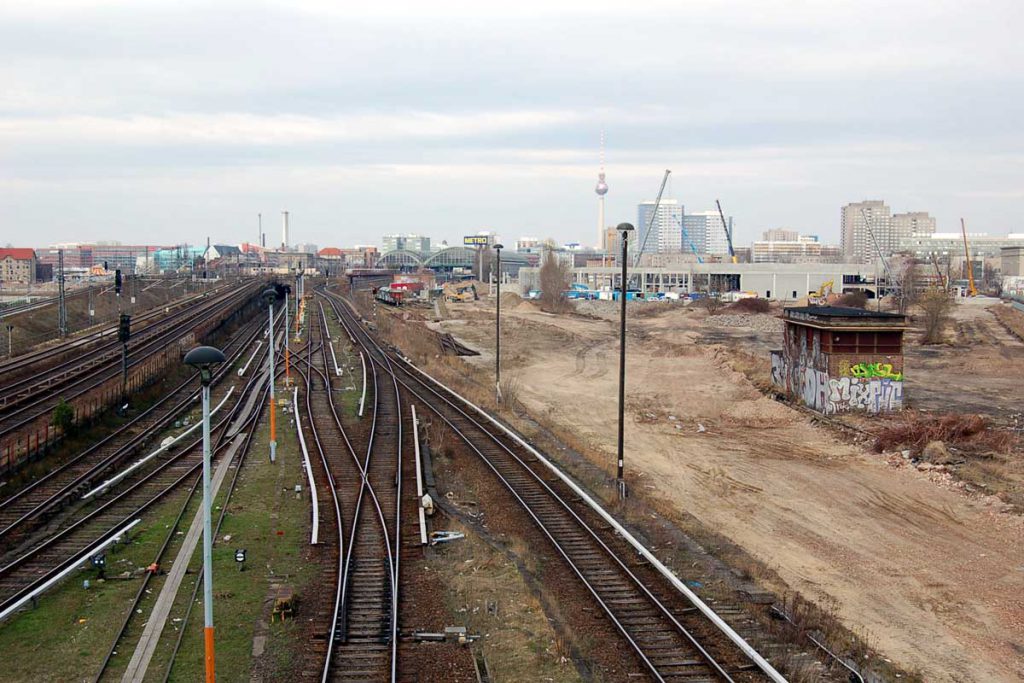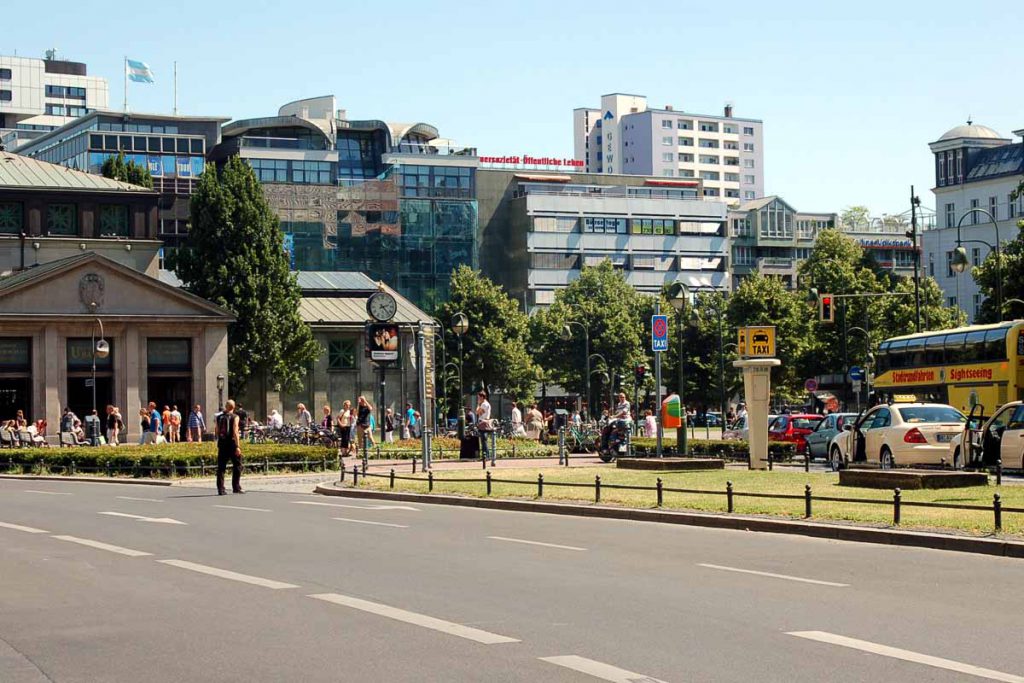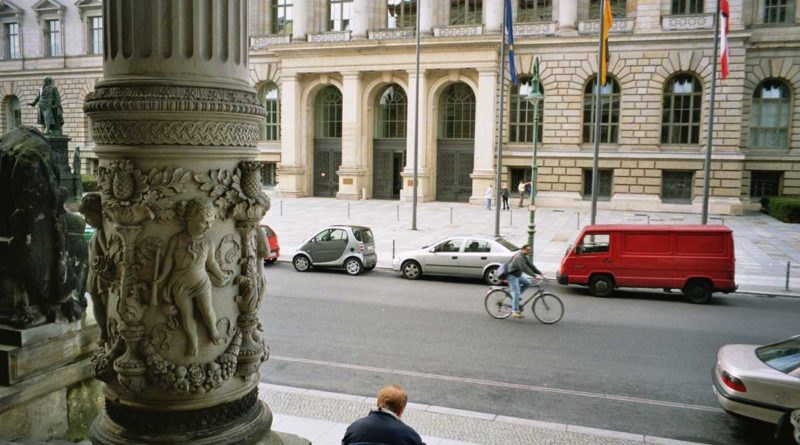Berlin
No one who remembers 1989, when the Berlin Wall dividing East and West came down in not much more than a night, partly through ‘people power’, can visit Germany’s capital city without being aware of its unique history. To have an impression of the wall as it was, with no man’s land beyond where many died attempting to reach ‘freedom’, head for Bernauer Strasse near Nordbahnhof station, where you can climb a tower to view the historic barrier from above. Alternatively, take the U-bahn, S-bahn or bus out to Warschauer Strasse where there is a 1.3 km stretch of wall that was covered in over 100 murals by artists from all over the world marking the fall of the wall. In keeping with Berlin’s modern image as a capital of creativity, this free open air art gallery is currently being restored after years of defacement by graffiti.
Berlin’s centre is a delight and just exploring on foot is endlessly fascinating. Many visitors start at the impressive Brandenburg Gate with the park beyond and the Reichstag nearby, with its glass dome designed by Sir Norman Foster for his refurbishment of the parliament building in 1999. Between 08.00 and 23.00 you can walk up the 230 metre gentle gradient that circles the inside of the dome for great views of the government area of the city. (Book online or when you get there, and take ID with you.)
You can take the usual open top bus tour to get yourself orientated in the city, but for a different angle try the Berlin Cruise on the River Spree (April to October). This trip passes the main city centre sights, with commentaries in German and English.
Once politicised by the Nazis, Unter den Linden nowadays is a city centre shopping area and few of the historic lime trees remain. However it makes a pleasant walk past many of the grandest buildings in Berlin to the magnificent Cathedral.
For a stark contrast you could make your way to Alexanderplatz, a 1970s icon of East Germany, with its 368 metre tall Fernsehturm (television tower). Queues for the viewing gallery can be long at the height of the tourist season, but Berlin is a city you can visit at any time of year. In the day the revolving restaurant at the top will let you sit over a coffee for the half hour it takes to complete the circuit.
There are said to be 153 museums in Berlin, and seven of them are conveniently located on Museum Island, itself a World Heritage Site. The Pergamon Museum houses Greek and Roman art and classical antiquities, including reconstructed buildings. It also has a good restaurant with tables outside in summer.
For an insight into a dark period of German history you need to go to the Jewish Museum on Lindenstrasse. Designed by Daniel Libeskind with its Exile Garden and Tower of the Holocaust, the building itself is as much a part of the powerful experience as the exhibits.
Impressive though these internationally known museums are, my own favourite memorial to heroism in Berlin is the Museum Blindenwerkstatt Otto Weidt at Rosenthaler 39. At his small brush factory employing many blind Jewish workers, non-Jew Weidt risked his own life to save numerous employees from deportation by bribing the Gestapo, hiding people, and even on one occasion, though partially sighted himself, travelling to a concentration camp and getting an employee released.
Finally, to return to the subject of the Berlin wall, on Friedrichstrasse you can pose for free for photographs at a street mock-up of Checkpoint Charlie, or pay to go into the Check Point Charlie Museum (Daily 09.00 to 22.00). However the original guardhouse from the checkpoint that featured in so many spy stories is to be found in the Allied Museum at Clayallee (admission free), where the 50 year history of the Western powers’ presence in this unique city is documented.
The Berlin Wall was initially constructed starting on August 13, 1961. and dismantled in the weeks following November 9, 1989.
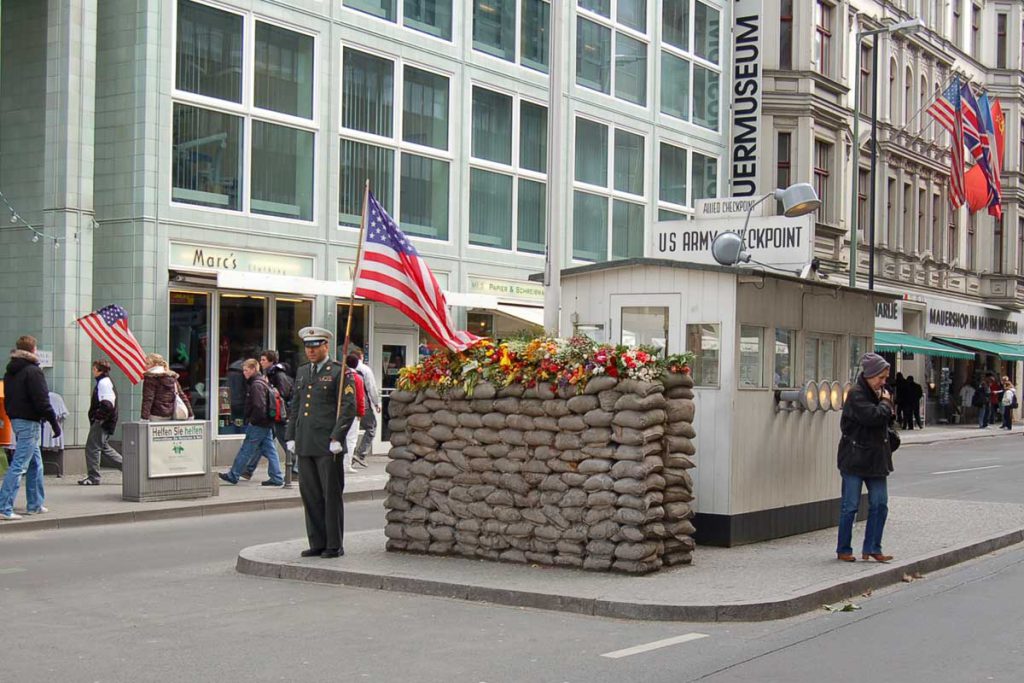
Checkpoint Charlie: Symbol of Cold War Tensions and Reconciliation
Checkpoint Charlie stands as a powerful testament to the tumultuous history of Berlin during the Cold War era. Nestled at the crossing point between the American and Soviet sectors of the divided city, this checkpoint became an iconic symbol of the ideological divide between East and West.
The division of Berlin, and indeed of Germany itself, following World War II, left an indelible mark on the city’s landscape. As tensions between the United States and the Soviet Union escalated into the Cold War, Berlin became a focal point of geopolitical struggle. The construction of the Berlin Wall in 1961 further solidified the separation between East and West, and Checkpoint Charlie emerged as a pivotal site in this divided city.
Named after the NATO phonetic alphabet for “C,” Checkpoint Charlie was one of the few checkpoints where Allied personnel, diplomats, and foreigners were permitted to cross between East and West Berlin. Its strategic location at the heart of the city made it a constant hub of activity and a focal point for international attention.
Throughout its existence, Checkpoint Charlie bore witness to dramatic events that reflected the tensions of the Cold War. In 1961, just months after the construction of the Berlin Wall, a standoff between American and Soviet tanks at the checkpoint brought the world to the brink of nuclear confrontation during the Berlin Crisis. The image of American and Soviet tanks facing off across the checkpoint epitomized the intense ideological rivalry of the era.
Despite its role as a symbol of division, Checkpoint Charlie also became a site of hope and defiance. Countless East Berliners risked their lives to escape to the West, often by ingenious means and at great personal risk. The checkpoint represented both the physical barrier separating families and the aspirations of those yearning for freedom.
The fall of the Berlin Wall in 1989 marked a momentous turning point in history, and Checkpoint Charlie witnessed scenes of jubilation and unity as Berliners from both sides celebrated the reunification of their city and country. In the years that followed, the checkpoint evolved into a memorial and museum dedicated to preserving the memory of the Cold War era and honoring those who sought freedom and reconciliation.
Today, Checkpoint Charlie stands as a living monument to the triumph of human spirit over division and oppression. Its iconic guardhouse, checkpoint sign, and remnants of the Berlin Wall serve as poignant reminders of a turbulent past and the enduring quest for peace and unity.
As visitors from around the world flock to this historic site, they are confronted not only with the stark realities of Cold War-era Berlin but also with a message of hope and reconciliation. In an increasingly interconnected world, the lessons of Checkpoint Charlie remain as relevant as ever, reminding us of the importance of dialogue, understanding, and cooperation in overcoming divisions and building a brighter future for all.
